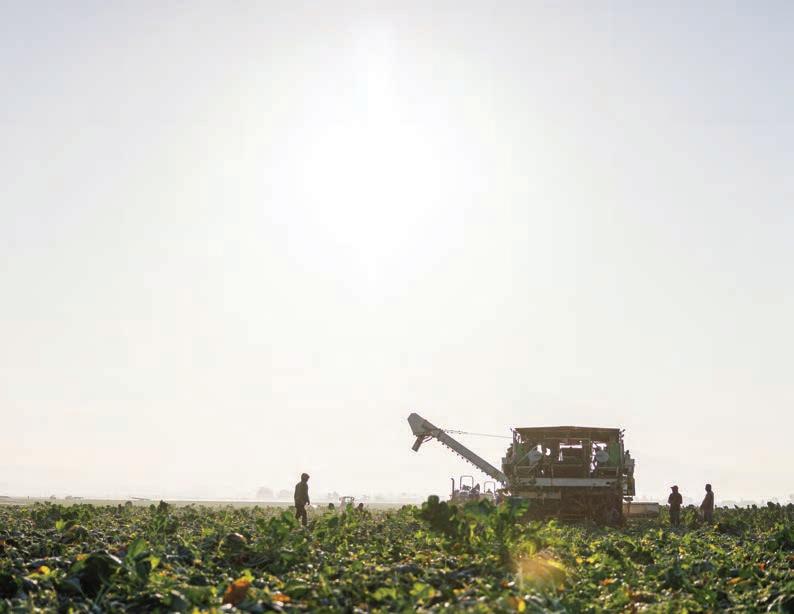Your future grows here

MOMENTS THAT MATTER
2023 ANNUAL REPORT


Your future grows here

2023 ANNUAL REPORT


As ag continues to change, it’s clear that farmers’ most precious commodity is time — more time for business decisions, more time to plan for the future, and more time with family. More time for moments that matter. After all, these moments aren’t just time well spent; they’re an investment in the future.
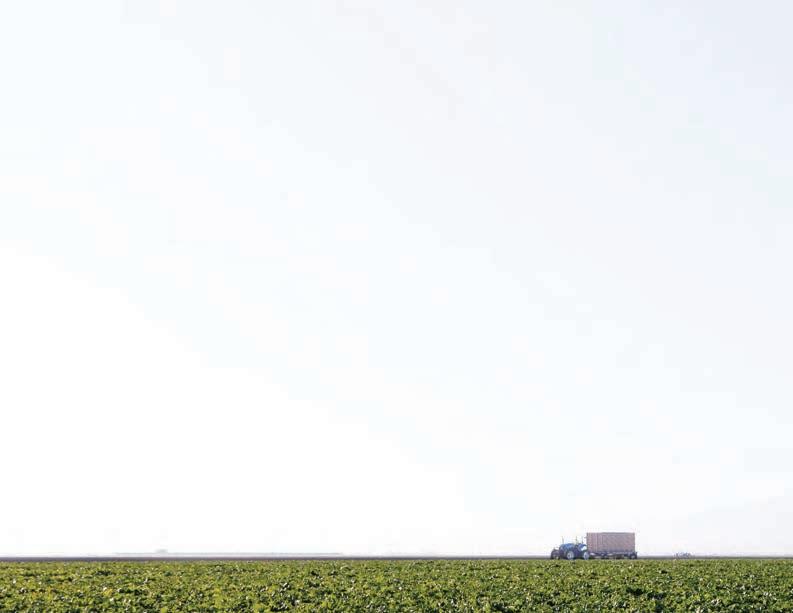
IN 2023, the signs were all around us: Agriculture is changing rapidly. From the AI-powered tractors rolling at harvest to the drones relaying irrigation data to a laptop, the modern farm is a complex and data-driven operation.
As much as agriculture has changed in recent years, it remains clear that a farmer’s most precious commodity is time. More time to make planting decisions; more time to make budget and marketing plans; more time to spend with family. More time for the moments that matter.
We’re grateful to lead American AgCredit as we work with some of the most innovative farmers, ranchers, and agribusiness operators in the world. Just as our customers adapt daily to new technology and challenges, we have embraced change and continue to transform our business to stay relevant in the long run.
By all metrics, we had a remarkable year in 2023. American AgCredit achieved record financial results with $378 million in net income while surpassing $20 billion in total loan volume. Considering our growth over time, we have increased net income by 282% since 2016.
In October, we completed a merger with Farm Credit of New Mexico, positioning us for a bright future together as an Association. We have been honored to welcome the many new customers and 115 New Mexico employees to American AgCredit. In total, we now serve more than 12,000 farmers, ranchers, and agribusiness owners across our seven-state territory.
Thanks to our strong growth and greater efficiency in running the business, we are pleased to announce that American AgCredit will return a full 1% in
patronage for 2023, or nearly $214 million back to our customers. As a customer-owned cooperative, we have returned a total of nearly $1.4 billion to you, our valued customers, in the form of patronage since 2004.
Our commitment to agriculture and rural communities goes well beyond patronage. In 2023, we funded a $10 million Rural Roots Endowment to invest in the long-term viability of agriculture in New Mexico. We proudly support nonprofits that are working to end food insecurity in our communities. And we continue to invest in programs that help launch young, beginning and small farmers, as well as local 4-H and FFA chapters that are inspiring our nation’s future farmers and ranchers.
In this report, you will read about a family’s outsized legacy in pecan farming at Peña’s Pecan Nursery in
New Mexico, an awe-inspiring herd at Cold Creek Buffalo Company on the Colorado border, an empire of salad greens and vegetables at Ippolito International in California, a next generationfocused winery and vineyard at Cline Family Cellars in Sonoma County, a young couple’s direct-toconsumer model at Basinger Land & Cattle in Kansas, and a visionary ag producer who pivoted into olive oil at Calivirgin Olive Oil in Central California.
You can go behind the scenes and hear from these clients directly by scanning the QR code with each story.
As a company, we are focused on creating more time for our customers to spend on the moments that matter. In 2023, we enhanced our digital banking tools with features like remote check deposit and mobile transfers to ensure you have an


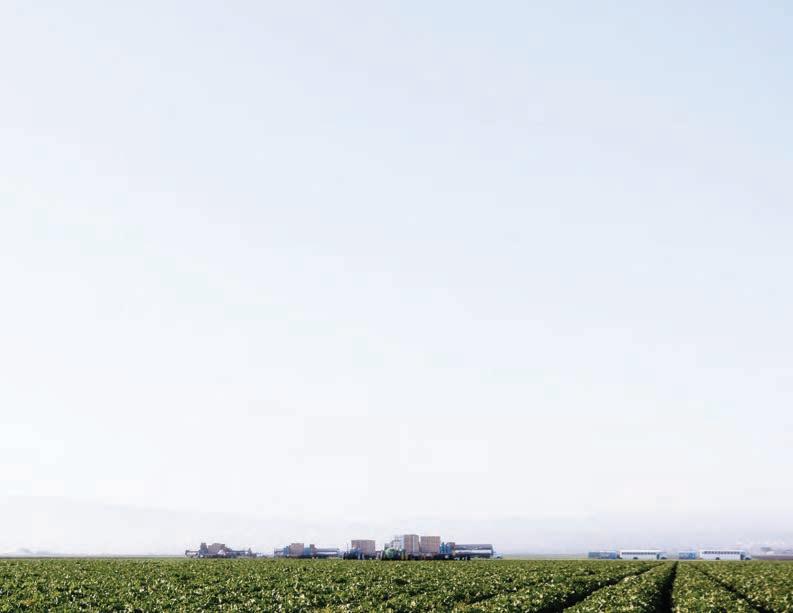
GO BEHIND THE SCENES WITH CEO CURT HUDNUTT. SCAN TO SEE MORE.
easy banking experience, wherever and whenever you need to do business with us.
We have also expanded Terrain, our market analysis and forecasting hub in partnership with Farm Credit Services of America and Frontier Farm Credit. Terrain is a complimentary and timely resource that keeps our customers informed on key agricultural commodities, parsing huge quantities of data to deliver actionable insights. You can explore the Terrain analysts’ latest insights for your industry by visiting TerrainAg.com.
Looking ahead, we see exciting opportunities along with key headwinds for U.S. agriculture in 2024. An elevated interest rate environment, inflation, and the rising cost to transport agricultural goods to market are all factors to watch closely. We believe that our strong foundation as a lender, coupled
with our vision and ability to adapt, will allow us to stay relevant and support our customers across all segments of agriculture.
Our work this year was driven by a mission to be the best lender to agriculture. We want to thank you for trusting us with your business in 2023. We are proud to serve your business today, and for the generations that will follow.
Gary Harshberger Hudnutt Board Chair Chief Executive Officer Curt
“We’re dedicated to serving our mission in good times and bad — sustainably supporting all of agriculture, regardless of conditions in the marketplace.”
Jerry Rose Chief Strategy and Financial Officer
SCAN TO WATCH JERRY ROSE EXPLAIN OUR 2023 FINANCIAL RESULTS.
We maintain a healthy loan volume by serving all segments of agriculture. Risks that may be associated with a particular geographic region, such as adverse weather, land pricing or commodity markets, may be offset by stronger performance in our other regions, thereby reducing pressure on the overall portfolio.
We maintain a diverse loan portfolio to reduce risks associated with a downturn in any single agricultural commodity. By serving a wide range of commodities and operation types, we are able to mitigate risk and ensure that any material stress on the entire portfolio is minimized.
IN 2023, our Board again voted to approve our patronage distribution at a full 1%, resulting in nearly $214 million back to you, our loyal customer owners.
Our efforts to maintain a diversified loan portfolio, balanced across commodities and locations, have helped maximize the impacts of stress on any individual sector. We also continue to improve our business processes and operating efficiency.
As a result of these efforts, we are able to share more profit with our members than ever before. Again, we did this by finding efficiency gains in the business — not by charging you more. In fact, we lowered the spread between interest rates charged to borrowers and our own cost of funds.



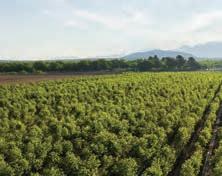
How a farm worker built a family business
In a sun-drenched valley near the U.S.-Mexico border, palm trees wave in the breeze and pickup trucks line the parking lot at a pecan nursery that has taken root in southern New Mexico.
Peña’s Pecan Nursery is in Mesilla Park, about five miles south of Las Cruces, New Mexico. It’s a family business that started when Isidro Peña Sr., who first came to the U.S. through the Bracero Program, saw an opportunity to start a business of his own.
“I used to work on farms, and I learned how to graft the trees,” said Isidro, sitting down for an interview
at his pecan cleaning facility. “When I started to grow the trees and put my little nursery in, I still worked part time at the farm until I could get the first crop. That’s when I began to make enough money to continue renting land for pecans.”
Today, Isidro is 86 years old but still very much involved in the business he helped start in 1959. His daughter, Martha Orta, is CEO of Peña’s Pecan Nursery, while his son, Isidro Peña Jr., manages plant operations to clean, pack, and sell pecans, along with custom harvesting.
“Our father was happy to be here because it was the American dream,” said Martha. “He had a job to go to and even though it was hard on your body, it didn’t matter because it was fruitful and you learn something. He learned how to work the land and how this land gives to you.”
The secret to growing pecan trees is a combination of location, time, and commitment. The trees take five to seven years to reach maturity but once established can produce nuts for over 100 years.
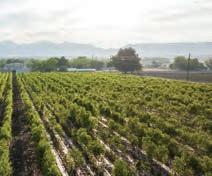


Pecan trees thrive in silty and well-draining soil with plenty of sun. In this scenic valley along the Rio Grande, you can find pecan trees in every corner — many of which started at Peña’s Pecan Nursery.
“This is Mother Nature at her best,” said Martha. “This is her gift to us, and we just have to know how to take care of it. My dad loves the land. He loves taking care of it. And that’s why he does so well because of the love that he gives to it.”
It’s this love for the land and for growing pecans that has Isidro Peña Sr. coming in on the weekend to lend a hand or check on operations.
“He could probably travel the world, but his love is here,” said Isidro Jr. “On a Sunday, he could be reading the paper, and I pass through here and I’m like, ‘What are you doing? You know we’re closed on Sunday.’ I love the way he paved the road for us.”
One lesson that Isidro Peña Sr. passed along to his children was the value of hard work. As a Bracero Program worker in the 1950s, he understood the meaning of a hard day’s work. Today, his children are stewarding the family business with their children and grandchildren in mind.
“What motivates me is to try to do the best we can,” said Martha. “Now that I have grandkids, you just want to leave a legacy behind for them, and you don’t want to make it as hard. But they have to know that it is hard. They have to know that it is difficult because if they don’t, they won’t appreciate it.”
Megan Schuller is a senior relationship manager and loan officer with American AgCredit. She has worked with the Peña family for several years. In that time, she has come to respect and appreciate the family for their forward-looking approach.


THE PEÑA’S PECAN NURSERY DREAM CAME TRUE. SCAN TO WATCH.
“When you have the next generation already involved, it makes my job a lot smoother,” said Megan. “I know that the operation has some sustainability and has a future to look to, even if it’s not this immediate generation and they’re looking forward to their next generation.”
Peña’s Pecan Nursery is known throughout the region for their quality pecans, expertise, and commitment to helping other farmers.
Isidro Sr. said the best part of running the nursery has been watching it take new life in the hands of his children and their children.
“I feel like a king because I have a very good family and very good kids,” said Isidro Sr. “We respect each other. So, I’m very happy working with my family.”

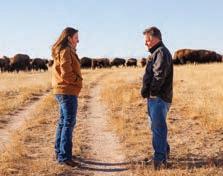
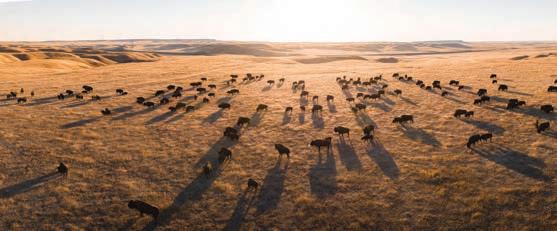
When Boyd Meyer, a rancher who’s been in the cattle business for 30 years, walked into Denver’s Western Stock Show in 2002, he had no intention of becoming a bison rancher. He’d dabbled in the bison market back in the 1990s and quit when bison prices skyrocketed. But years later at that Denver stock show, Boyd saw the majesty of the animal — and opportunity.
“There’s margin in the bison business but not a lot of people in bison,” noted Boyd.
Prices looked favorable, so Boyd grasped the opportunity, walked away from the auction with
180 head of bison instead of cattle — and the rest is history.
Today on the Colorado border near Cheyenne, Wyoming, Boyd runs Cold Creek Buffalo Company, a bison operation with over 27,000 acres, around 750 bison, and a feed yard.
“To transition to bison, we tweaked our approach a little. I came in with kind of a cattle model, and then we evolved it over the last 20 years to what we feel like is working well. We get about as good a performance out of the bison of anybody in the country,” noted Boyd — quite humbly as the secondlargest bison operator in the nation.
Boyd explained that bison are much more selfsufficient than cattle, shaped by the rugged rangeland the bison, and Boyd, call home.
“It’s pretty extreme conditions out here,” Boyd laughed. “We have to really love this.”
Hundreds of years ago, wild bison populated the region, thriving in the cold, dry air, well adept at weathering the wind, and accustomed to scavenging for food in the winter. Today, that resilience allows for lower feed costs and higher margin.
According to Boyd, bison will wander more into rougher terrain, and they will move further away from water, which is a strength. Even with tougher

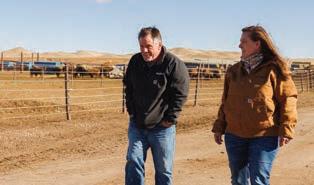
grass due to the area’s low rainfall — which averaged 12 inches over the last 15 years — the bison will still put on pounds when Boyd provides additional feed.
Cold Creek Buffalo Company DNA tests their bison to breed for maximum performance. The goal isn’t to turn them into cattle. Instead, they’re creating an animal that functions well on the range and continues to take care of itself while growing, increasing in size, and driving profits.
Because bison are a niche market, not a lot of people are involved in the bison business, or understand how to maximize profitability. Boyd’s

four sons are all involved in the bison operation, helping ensure future success of the business.
“It’s been good to have the kids grow up in it and get an understanding of how to deal with bison. They really know how to handle it,” noted Boyd. “We’re constantly learning, but it keeps you going.”
Another key aspect for the future of bison is restoration. Back in the late 1800s and early 1900s, the bison population was down to about 1,000, according to Boyd. Today — largely thanks to private operations like Cold Creek Buffalo Company — the population is up to about 500,000 or 600,000 bison.
“I think a big part of the restoration of bison has been because of the private ranchers. We take pride in that,” reflected Boyd. “When you take care of your bison, they’ll take care of you. And that’s the way we approach it.”
Boyd and his sons plan to continue to do just that, caring for their bison and growing their future.
“You know, we’ve been on this ranch for about 18 years and hopefully we’re here for another 18,” said Boyd.
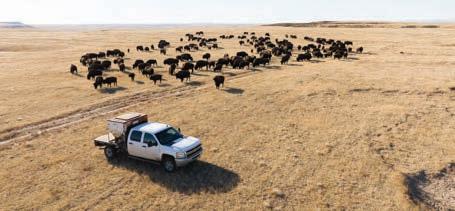
Finding a finance partner to support his bison operation wasn’t the easiest however — until he met Pat Stratton, an American AgCredit relationship manager with bison experience. They formed a relationship that started small, and 10 years later, there’s trust in the relationship that has supported the evolution and expansion of Boyd’s business.
“They trust that I kind of know what I’m doing,” said Boyd. “There’s not a lot of banks around that want to deal with bison because they don’t understand
the industry, I can’t even think of another bank that’s going to be as competitive and understand your program the way they do. I mean, they’re an agbased bank and that’s what they do.”
For relationship manager Victoria Conklin, who began supporting Boyd’s account after his previous relationship manager’s retirement, it’s been exciting to get to partner with Boyd in his unique operation.
“It is our sole purpose to finance agriculture, and bison is certainly a part of that. And so, it was
without reservation or hesitation that we wanted to be a part of that—both in good times and in bad. American AgCredit is here for our customers, and that’s really important to us,” said Victoria.
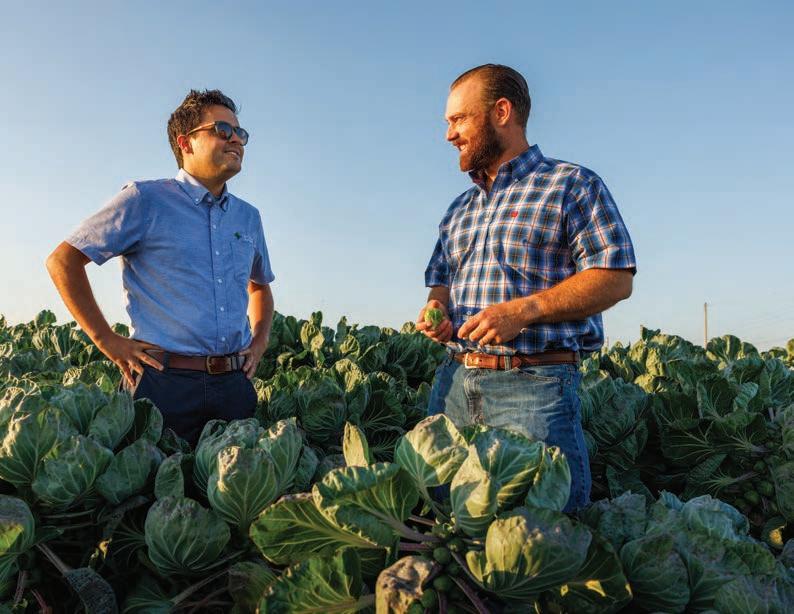
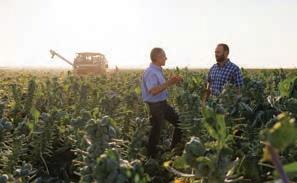
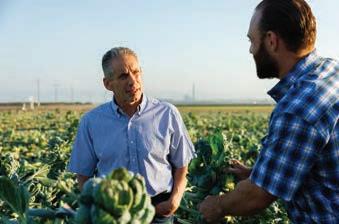
The next time you find yourself chopping up fresh vegetables or opening a salad mix for dinner, consider that your produce may have passed through the doors of a single company in California, traveling quickly from a local farm to your table.
In 2000, Joel Ippolito and Ron Mondo founded Ippolito International in Salinas, California, with a humble vision. At first, the company focused on growing and selling Brussels sprouts. The company found its niche and then changed dramatically in the next two decades, today selling nearly 50 different products with both conventional and organic options.
“We started with an idea to just grow Brussels sprouts, green onions, and leeks,” said Ron. “Since then, we have turned around and became a fully integrated shipper. We grow our own crops, we harvest them, and we cool and ship [produce] in our own cooling facilities.”
Today, Ippolito International is North America’s largest supplier of fresh Brussels sprouts. This second-generation farming operation offers year-round supplies of Queen Victoria and Coast King brand vegetables, ranging from artichokes and cauliflower to cilantro and fresh salads.
The company’s founders have deep roots in agriculture. CEO Joel Ippolito joined his family’s

produce business in 1974 and helped steadily grow the operation in Ontario, Canada, before making the leap to start his own business in California.
Co-founder Ron Mondo also grew up farming in his family’s tradition in the Santa Cruz area. The son of Italian immigrants, he continues to play an active role in all aspects of the farming operation at Ippolito International as they grow, pack, and ship produce to customers across the U.S. and beyond.
“First, we plant by seed or transplant, and then after 80 to 85 days, the crop is ready for harvest,” said Ron. “We have our own harvesting crews, and they decide whether it’s ready. Our crews harvest [the crop] on trailers and ship it to our cooling facilities. From there, it goes out to the customer.”
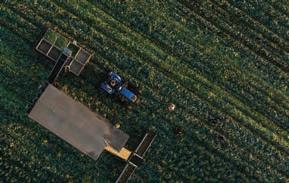

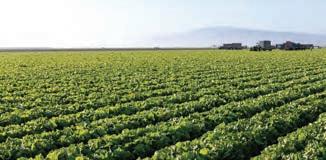
Ron and his teams have plenty of work to do throughout the year. Ippolito International sells both field-fresh vegetables like artichokes, asparagus, and iceberg lettuce, and value-added products such as halved or shredded Brussels sprouts and broccoli florets, which are prewashed for convenience.
“Our main staples are the bulk commodities, so what you see on the grocery store shelf,” said Ron. “We also have a processing plant where we bring products in and they’re cleaned, chopped up, and ready to eat. So, we offer two different types of programs.”
Keith Mallett is the company’s chief operating officer, managing countless aspects of the business’ farming, harvesting, and shipping operations, which run the entire year. He said the company has grown
quickly and now ranks among the largest shippers in the Salinas Valley.
“We’ve been in Brussels sprouts for 25 years, but we also have very large programs for lettuce, romaine, broccoli, and cauliflower, all of which are anywhere between 9,000 and 10,000 acres a season,” said Keith. “We’re now among the top six largest shippers in the Salinas Valley, which is a big deal.”
As Ippolito International has charted a course for growth, the company’s leaders have also pushed to create a more renewable, environmentally friendly business model. The company was the first to achieve two Gold Zero Waste TRUE certifications in the Salinas Valley.
By taking a closer look at packing and shipping operations, Ippolito International has successfully reduced its waste and carbon footprints. The company has moved from single-use containers to reusable plastic totes and bins, diverted organic byproducts from the packing operation, and is reusing wood shipping pallets through a pilot program.
For co-founder Ron Mondo, lowering the carbon footprint of the company and moving toward a zerowaste business has been an important effort. He said the benefits are clear, both in preserving the environment and ensuring that his business remains competitive in the global food supply chains.
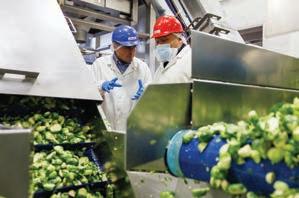
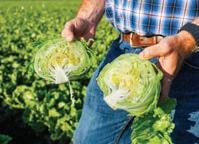
“What we’re trying to do is lower our carbon footprint,” said Ron. “It’s both the right decision and if you want to do business with the supply chains, you’re going to try and lower your carbon footprint as well.”
Running a successful business in agriculture takes careful planning and a strong ability to capitalize on each new opportunity.
For Ippolito International, growing from a business that sold field-fresh produce to offering value-added products, as well as the packing and shipping expertise to serve their customers’ needs, has led to remarkable growth in the business.
As the company has expanded its products and services, founders Joel and Ron have turned to American AgCredit, a leading Farm Credit lender, to secure financing, bring on new facilities and equipment, and preserve working capital for the regular needs of a farming operation.
“[American AgCredit] understands our financing needs,” said Ron. “They understand whether it’s cropping ground or equipment purchases. They have helped us to expand our operations and grow as a company.”
Few people understand the financial needs and realities of an agricultural business better than Mike Heisinger, Ippolito International’s chief
financial officer. He said the combination of intuitive financial offerings and agricultural expertise has made for a rewarding relationship with American AgCredit over the years.
“American AgCredit understands agriculture and tailors its offerings as such,” said Mike. “Our partnership with American AgCredit has allowed us to not only grow our business, but also focus on our operations, knowing that our banking needs are in good hands.”


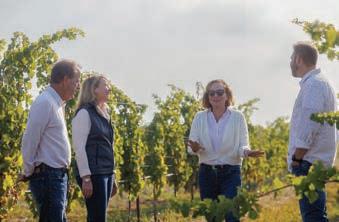

Inspired by ancient vines
Fred Cline is a winemaker who hails from a family of innovative thinkers. When he and his wife, Nancy, started Cline Family Cellars in 1982, they drew inspiration from Fred’s early experiences in the vineyards with his grandfather, Valeriano Jacuzzi.
“When I started making wine, it was a continuation of what I had learned from my grandfather about making wine for the family to use,” said Fred. “And I was making it that same way.”
Valeriano had arrived in the U.S. from Italy in 1920, joining his six brothers to work on airplanes, water pumps, and, later, the whirlpool bath that still carries the Jacuzzi family name. During the Great
Depression, Valeriano purchased a 161-acre farm in California’s Contra Costa County, where he grew grapes and made wine for his family and friends.
Three generations later, Cline Family Cellars is known widely for its zinfandels, Rhône-style wines, sauvignon blanc, chardonnay and pinot noir, with some vines that date back to the early 1900s.
The winery that Fred and Nancy started as a young couple now produces more than 250,000 cases each year, with its wine sold across the U.S. and internationally.
“Once I got into this business, it was quite exciting ... and I learned that I was really into agriculture,” said Fred. “Having gone to UC Davis to learn all about
agriculture and grape growing, naturally I wanted to continue on this path and focus on making the winery a successful enterprise.”
In 2007, Fred and his family launched Jacuzzi Family Vineyards, a Sonoma winery that pays tribute to Valeriano and his enthusiasm for winemaking. It’s been a “lifelong dream” for Fred that has created more opportunities for the next generation to get involved.
Fred and Nancy have seven children — four of whom are working in the family business and pushing their wine brands in new directions.
Dreamed up by sisters Megan and Hilary Cline, Gust is an offshoot wine label that is rooted in the


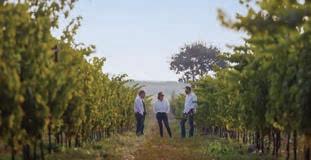
Petaluma Gap, a prized Sonoma County appellation known for exceptional pinot noir, chardonnay, and syrah.
“Fred and I are constantly thinking about the future, and what’s amazing is that with seven children, we have this whole group of people who are helping us map the future,” said Nancy. “It’s this perfect world that combines traditional business practices with this fantastic perspective from our children.”
‘They understand farming’ What started as a dream for Fred and Nancy has grown into multiple successful wine labels, popular tasting rooms and direct-to-consumer channels — all while raising a family.
Ruth Edwards has known the family as friends for decades, and in recent years, as the family’s relationship manager for American AgCredit. When Cline Family Cellars needed financing for a vineyard development project, the family turned to Ruth and her team for financial expertise.
“We started out with a really good level of trust,” said Ruth. “But then we began to set our expectations, find out what they needed, where they saw themselves in the present time and down the road.”
Fred appreciates the benefits of working with a Farm Credit lender versus a commercial bank that does not have expertise in agriculture.
“Working with American AgCredit, they understand farming, they understand farmers, they recognize hard work, and they know seasons,” said Fred. “It’s night and day compared to any other lenders.”
Even as the family winery has grown steadily over the last four decades, Cline Family Cellars continues to make wine with grapes that are grown sustainably and with an eye for preserving the land for future generations.
Cline Cellars is certified sustainable by the state and Sonoma County, with growing practices that go beyond these standards. The winery grazes sheep and goats in the vineyards to remove weeds,


uses winery compost as fertilizer for the vines, and collects corks from the winery to be reused as an alternative to foam and plastics.
With more than 34,000 square feet of solar panels, Cline Family Cellars is also one of California’s largest wineries to be completely powered by renewable energy.
Nancy points to her seven children as the original inspiration to grow wine sustainably and with fewer inputs. As time went on, she said the idea of growing grapes with a minimalist approach continued to make sense for their children, customers, and the finished product.
“Fred and I raised our family on the winery property, and it was just so clear and obvious to us,” said Nancy. “We had all of our kids running around, and if our growing practices could be healthy for the plants as well as our lives and our customers, then everyone wins.”
More than a century after Valeriano Jacuzzi arrived in California, Fred Cline said he is motivated by the same passion for winemaking and desire to create a better future for his children and the generations to come.
“We’re building something for our family, and it’s clean as far as the way we grow [the wine] and make it,” said Fred. “And organically as our family grew, so did our business.”
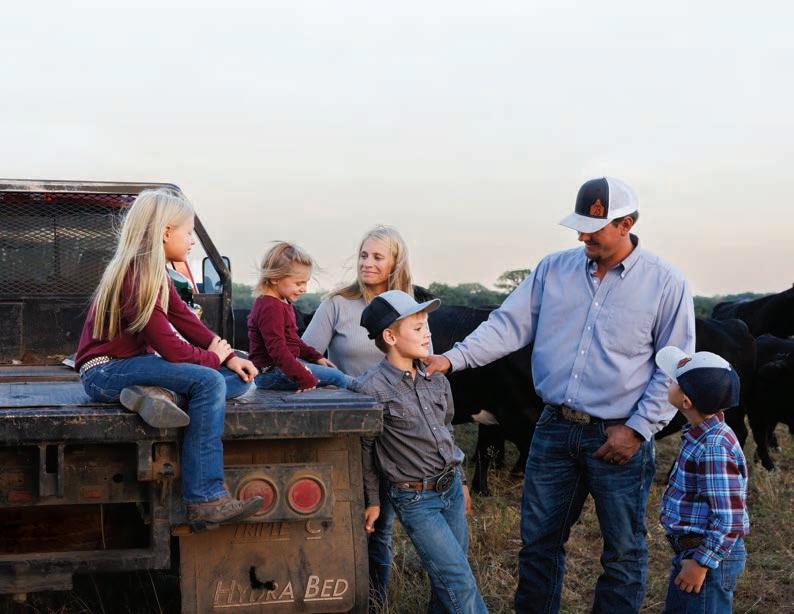
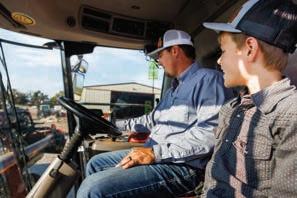
By the time he was in middle school, Chad Basinger knew he wanted to have a herd of beef cows. He had grown up spending long days on his grandparents’ farm, and, starting from scratch at age 12, he rented cows from a neighbor and began raising his own small herd.
Today, Chad and his wife, Cassondra, own and operate Basinger Land & Cattle in Pretty Prairie, Kansas, about 50 miles west of Wichita. Here on scenic and windswept prairie land, the Basingers’ herd of about 300 Angus and Red Angus crossbred cattle graze on cover crops and grasses, quietly restoring the land with each step.

“I started out as a first-generation farmer,” said Chad. “I was able to rent a couple of 80s (80 acres) from a neighbor, and we’ve grown the operation since then. We have a cow-calf operation and a backgrounding operation. And then we also started Basinger’s LLC, a direct-to-market beef business here about five years ago.”
Basinger Land & Cattle is truly a family operation. Chad and Cassondra have four children who are all eager to help out on the farm, checking on cattle or riding in the tractor with Mom or Dad. Cassondra manages the accounting and financial side of the operation, while also driving the tractor and semitrailer truck.
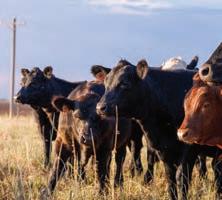
For the last five years, the Basingers have sold their beef products — from ground beef and traditional cuts to charcuterie boxes — directly to customers. It’s a business model that can be more profitable for the farmer while also giving the consumer a higher degree of certainty about what they are eating, how the beef was raised and processed, and who their dollars support.
“What makes Basinger’s beef unique is that we know our cattle,” said Cassondra. “Our tagline is pure, local beef. The cattle are born and raised on our farm, and they’re in our care for their entire lives. We know exactly what they’re fed and how they’re handled.”
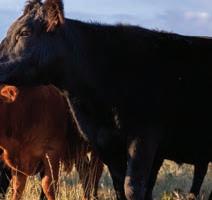


Selling beef directly to consumers has become a prevalent model for producers in Kansas and across the U.S., with the increase in healthconscious eaters and the COVID-19 pandemic only accelerating this trend.
A 2023 survey found that nearly half of all Kansas beef producers were selling 100% of their beef directly to consumers, while nearly all (97.3%) said that they would like to increase their direct-toconsumer sales.*
Raising beef and regenerating soil Chad and Cassondra Basinger are proponents of regenerative agriculture, a farming practice that reduces the need for fertilizers, herbicides, and
pesticides through cover cropping and no-till farming. The farm makes good use of cover crops to promote healthy topsoil and provides a source of nutritional feed for their cattle.
“[The cattle] are born and raised on cover crops or on grass,” said Cassondra. “They grow up in that area, and then we bring them home. Once they’re ready to be fattened up, we’ll finish them on milo that’s raised on our farm. So, they are truly born and raised on our farm.”
The Sunflower State has long been known for its rich topsoil and prime farming conditions. Over time, human activity has degraded the topsoil in some parts of Kansas, leading to lower crop yields and
eroding nutrients. Regenerative farming practices are designed to replenish this valuable resource by helping keep more nutrients in the ground.
From regenerative and no-till farming to transparency in how their cattle are raised, Basinger Land & Cattle is working to create a sustainable farming model while reaching consumers who may pay a little extra for high-quality beef.
“We want to tailor what the customer wants to how we handle our cattle,” said Cassondra. “No hormones, no additives. They just want beef. And that’s what we want to give them. We want to give them beef that’s great tasting, has great flavor, and kind of represents us in our family and how we do things.”
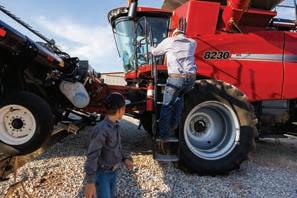
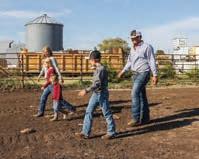
Chad Basinger took his early plan to raise a beef cow herd and steadily made it into a reality over the next couple of decades. He and Cassondra work hard each day to build the business — all while raising a family and passing on valuable life lessons to their children.
“It’s a great place to raise a family and teach the kids a good work ethic,” said Chad. “My favorite part is that each day is not the same. I like that there’s change, from fixing fence to harvesting to bringing cattle home to taking cattle out.”
As the family’s cattle operation has grown, Chad said working with American AgCredit, a leading Farm Credit lender, has helped support land purchases and set a solid foundation for the future.
“We kind of started with nothing and have been growing along the way,” said Chad. “They were willing to take a chance on us with some land purchases, and they’ve helped us grow our operation to where it is today.”
Looking ahead, Chad and Cassondra said the feedback they hear from satisfied customers keeps them motivated to keep raising beef that is a cut above the rest.
“A lot of the comments we’ve had say, ‘Man, this takes me back to my childhood. [This beef] reminds me of the roast Grandma used to cook for me,’ or, ‘This reminds me of steaks we used to have at my grandparents’ house.’” said Chad. “There are connections, I guess, between the taste buds, senses, and memories.”
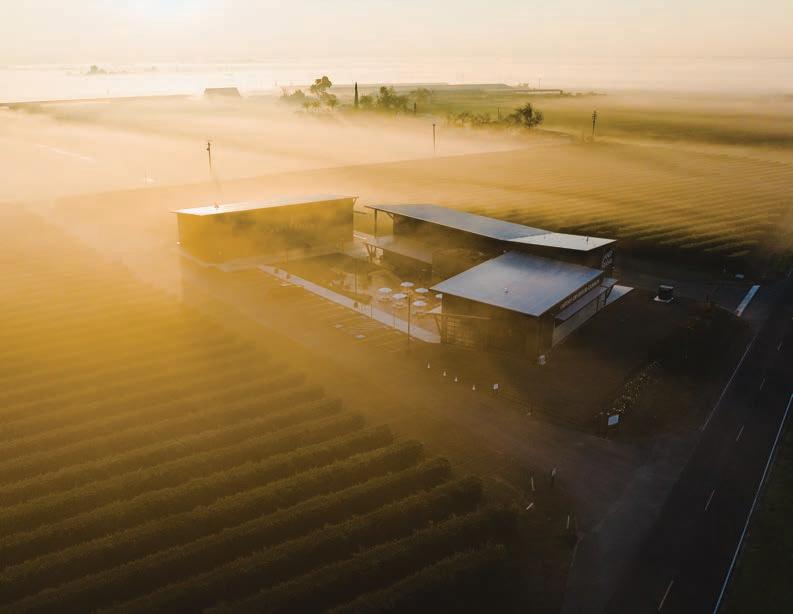 CALIVIRGIN OLIVE OIL
CALIVIRGIN OLIVE OIL



A family affair
It’s a crisp February day in Lodi, California. A blanket of fog covers hedgerows of olives at Coldani Olive Ranch as the rising sun bathes the property in the warm morning light.
The Coldani family has farmed this area for more than 100 years, raising cattle and row crops before moving to olive production in 2005 — a change driven by a shift in the market.
“We had this ground that we were earmarking to plant a vineyard, and the market for wine was in a downturn at that time,” says Board Chairman Steve Coldani. “Then we got wind of this super high-
density olive planting that was occurring, and it came into the United States.”
From there, the Coldani family went all-in on olive oil, forming Calivirgin, a brand producing high-quality olive oil sold directly to consumers. The family notes this model has helped evolve the business, keeping them more connected to their customers.
“To have a direct-to-consumer arm of the business was very important,” says Calivirgin’s olive oil and winemaker, Mike Coldani. “You can kind of control your own destiny with it, and it’s real enjoyable dealing with the public. I think creating this brand has been very rewarding for us.”
Calivirgin’s success created an appetite for consumers to experience the product on-site. The family recently opened a state-of-the-art wine and olive oil tasting room, where guests can sip and sample the brand’s many flavored varieties. The building may be new, but the team notes they kicked around the idea for years.
“How we got here was a kind of a winding road, but this is really a version of what we had in our minds many years ago,” says Calivirgin CEO Gina Sans. “We learned a lot along that road, but it’s still the general concept of what we were hoping for it to be 10 years ago.”


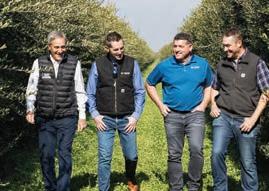
Embracing change is key to success
At the forefront of the Coldani’s growth is a willingness to change that the entire family embraces, a mindset that drives the business to adapt to consumer trends.
“You really needed to be flexible and be willing to get creative,” says Gina Sans. “We’re definitely one of those businesses where our customer interface had to get really creative so that we could keep things moving with the requirements put on us.”
Staying nimble has allowed the Coldanis to adapt more quickly to changing customer needs, an ability that Steve Coldani says has been vital to the
success of the operation’s on-site experience. “People want to come in, they want to be here,” notes Coldani. “And whatever people want, you have to try to be there for them. The old way may not be the way that works anymore.”
A visionary ag producer often requires a visionary lender, and American AgCredit’s forward-thinking approach to lending made for an ideal partner in helping bring the Coldani family’s vision to life.
“What works really well is the transparency and the open partnership that we have with one another,” says American AgCredit Executive Head of Customer Strategy and Relationship Management
CALIVIRGIN OLIVE OIL’S VISION IS NOW A REALITY. SCAN TO WATCH.
Marc Busalacchi. “They’re creating a differentiator to the product and they’re really proud of their agricultural roots, which is at the core of what we do and our mission.”
While the Coldanis have enjoyed success creating a modern experience for olive oil consumers, the timeless strength of family is largely to thank for where they are today.
“We were all kind of doing other businesses and working in other areas,” says Chief Marketing Officer Julie Coldani. “Once we ended up changing to this model, we came together as a family. Now we work together every day, and that’s a big blessing.”


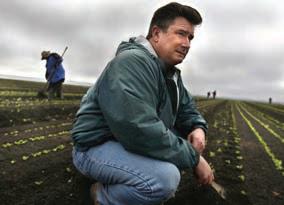
George Fontes was an extraordinary leader who had a profound, lasting impact on American AgCredit. After semi-retiring, George dedicated 15 years of his life to investing in farmers and ranchers by serving on the Association’s board of directors. His all-in leadership was contagious to those who worked alongside him.
As a mentor to both American AgCredit’s directors and leaders, George helped shape the Association’s approach to growing the future of agriculture. He was first elected to the board in 2008, and he served as Board Chair from 2018 to
2021. He was also part of the selection committee to determine the Association’s new CEO.
George’s leadership was characterized by his commitment, humility, assertiveness, wit, and genuine love for the ag industry we serve. As a board member, George held himself and others to the highest standards. He believed in pushing individuals to reach their full potential, and his actions spoke louder than words. George led by example, inspiring those around him to strive for excellence.
As we continue to navigate the future, we aspire to embody the same level of dedication, integrity, and passion for agriculture that George exemplified.
TO LEARN MORE ABOUT GEORGE’S INFLUENCE, PLEASE SCAN THE QR CODE.
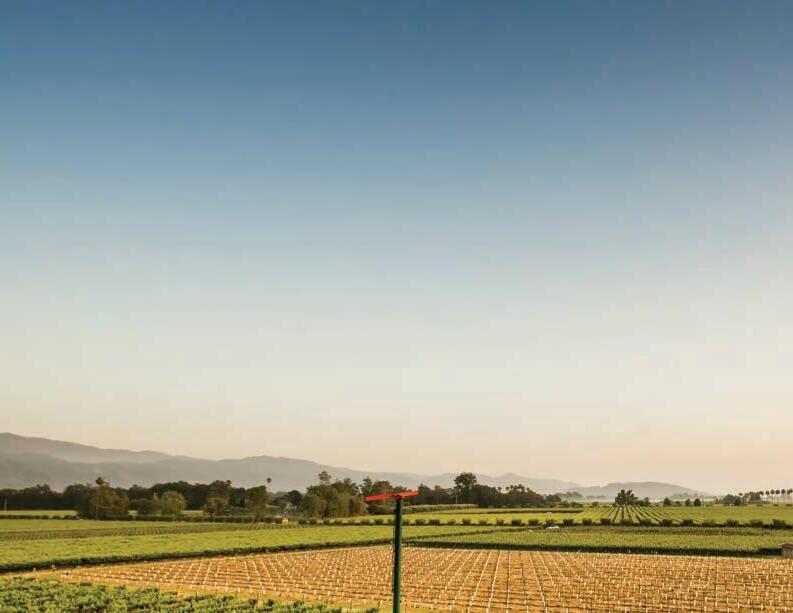

At American AgCredit, we know success in agriculture means making the most of every minute. Our convenient and secure digital banking tools put time back into your hands. From mobile check capture to automatic payments, secure document exchange, electronic signature and more, we offer safe and efficient solutions to keep your business running smoothly, so you have more time for the moments that matter.
The Association’s consolidated financial statements are prepared by management, which is responsible for their integrity and objectivity, including amounts that must necessarily be based on judgments and estimates. In the opinion of management, the accompanying consolidated financial statements fairly present the financial condition and results of operations of the Association, in conformity with generally accepted accounting principles in the United States of America. Other financial information included in this Annual Report is consistent with that in the financial statements.
To meet its responsibility for reliable financial information, management depends on the Association’s accounting and internal control systems, which have been designed to provide reasonable, but not absolute, assurance that assets are safeguarded and transactions are properly authorized and recorded. The systems have been designed to recognize that the cost must be related to the benefits derived. To monitor compliance, the Association’s internal auditors perform audits of the accounting records, review accounting systems and internal controls, and recommend improvements as needed. The consolidated financial statements are audited by PricewaterhouseCoopers LLP, independent auditors. Its report is located on page 52. The Association is also examined by the Farm Credit Administration (FCA), regulator of the Farm Credit System.

The Association’s Audit Committee of the Board of Directors, which is composed of directors who are not employees, has overall responsibility for the Association’s system of internal control over financial reporting. The Audit Committee of the Board of Directors meets periodically with management, FCA, outside consulting firms, internal auditors, and independent external auditors to review the manner in which each of these groups perform their responsibilities and to carry out the Board’s oversight role with respect to auditing, internal controls, and financial reporting matters. These internal auditors, independent external auditors, and regulators also have access to the Audit Committee of the Board of Directors and its individual members at any time.
The undersigned certify that they have reviewed the 2023 Annual Report and that it has been prepared in accordance with all applicable statutory or regulatory requirements and that the information contained herein is true, accurate, and complete to the best of their knowledge and belief.
MARCH 4, 2024


The Audit Committee (Committee) is composed of eight members of the Board of Directors. In 2023, eight Committee meetings were held. The Committee oversees the scope of the Association’s internal audit program, the independence of the outside auditors, the adequacy of the Association’s system of internal controls and procedures, and the adequacy of management’s actions with respect to recommendations arising from those auditing activities.
The Committee approved the appointment of PricewaterhouseCoopers LLP (PwC) as the Association’s independent auditors for 2023. The Committee’s responsibilities are described more fully in the Association’s Internal Control Policy and the Audit Committee Charter.
The fees paid for professional services rendered for the Association by its independent auditors, PwC, during 2023 were $764,674 for audit and audit-related services, $33,503 for tax services, and $74,479 for non-audit-related services.
Management is responsible for the Association’s internal controls and the preparation of the consolidated financial statements in accordance with accounting principles generally accepted in the United States of America. PwC is responsible for performing an independent audit of the Association’s consolidated financial statements in accordance with auditing standards generally accepted in the United States of America and to issue a report thereon. The Committee’s responsibilities include monitoring and overseeing these processes.
In this context, the Committee reviewed and approved the Association’s Quarterly Reports and Audited Financial Statements with management for the year ended December 31, 2023 (Audited Financial Statements). The Committee also reviewed with PwC the matters required to be discussed by the Statements on Auditing Standards. Both PwC and the Association’s internal auditors directly provided reports on significant matters to the Committee.

The Committee discussed with PwC its independence from the Association. The Committee also reviewed the non-audit services provided by PwC and concluded these services to be compatible with maintaining the independent auditors’ independence. The Committee has discussed with management and PwC such other matters and received such assurances from them as the Committee deemed appropriate.
Based on the foregoing review and discussions and relying thereon, the Committee recommended that the Board of Directors include the Audited Financial Statements in the Association’s 2023 Annual Report and for filing with the FCA.
MARCH 4, 2024
 Thomas G. Stegman Audit Committee Chair
Thomas G. Stegman Audit Committee Chair
Paul McCaffrey
Randall Doll
Thomas G. Stegman
Thomas Teixeira
Jonathan Vander Dussen
The Association’s principal executives and principal financial officers, or persons performing similar functions, are responsible for establishing and maintaining adequate internal control over financial reporting for the Association’s consolidated financial statements.
For the purposes of this report, “internal control over financial reporting” is defined as a process designed by, or under the supervision of, the Association’s principal executives and principal financial officers, or persons performing similar functions, and effected by its Board of Directors, management, and other personnel to provide reasonable assurance regarding the reliability of financial reporting and the preparation of the consolidated financial statements for external purposes in accordance with accounting principles generally accepted in the United States of America. It includes those policies and procedures that: (1) pertain to the maintenance of records that in reasonable detail accurately and fairly reflect the transactions and dispositions of the assets of the Association; (2) provide reasonable assurance that transactions are recorded as necessary to permit preparation of financial information in accordance
with accounting principles generally accepted in the United States of America, and that receipts and expenditures are being made only in accordance with authorizations of management and directors of the Association; and (3) provide reasonable assurance regarding prevention or timely detection of unauthorized acquisition, use, or disposition of the Association’s assets that could have a material effect on its consolidated financial statements.
The Association’s management has completed an assessment of the effectiveness of internal control over financial reporting as of December 31, 2023. In making the assessment, management used the framework in “Internal Control - Integrated Framework” (2013), promulgated by the Committee of Sponsoring Organizations of the Treadway Commission, commonly referred to as the COSO criteria.
Based on the assessment performed, the Association’s management concluded that as of December 31, 2023, the internal control over financial reporting was effective based upon the COSO criteria. Additionally, based on this assessment, the Association’s management determined that there were no material weaknesses in the internal control over financial reporting as of December 31, 2023.
MARCH 4, 2024
 Curt Hudnutt Chief Executive Officer
Curt Hudnutt Chief Executive Officer
 Jerry Rose Chief Strategy and Financial Officer
Jerry Rose Chief Strategy and Financial Officer
The following discussion summarizes the financial position and results of operations of American AgCredit, ACA and its subsidiaries American AgCredit, FLCA and American AgCredit, PCA (collectively the Association or American AgCredit) as of December 31, 2023, with comparisons to prior years. This discussion includes significant known trends, commitments, events, or uncertainties that have impacted or are reasonably likely to impact our financial condition and results of operations. The accompanying consolidated financial statements were prepared under the oversight of the Audit Committee of our Board of Directors. This commentary should be read with the accompanying consolidated financial statements and the related notes appearing in this report.

Our annual and quarterly reports to shareholders are available on our website, www.AgLoan.com, or can be obtained free of charge by calling (800) 800-4865. Annual reports are provided to all stockholders within 90 days after year-end and are available on our website within 75 days after year-end; quarterly reports are available on our website within 40 days after each calendar quarter-end.
Certain information included in this discussion constitutes forward-looking statements and information that is based on management’s belief, as well as certain assumptions made by and with information currently available to management. These statements are not guarantees of future performance. When used in this discussion, words such as “anticipates,” “projects,” “expects,” “believes,” “estimates,” “could,” “should,” and similar expressions are intended to identify forward-looking statements. Although management believes that the expectations reflected in such forward-looking statements are reasonable, it can give no assurance that such expectations and projections will prove to be correct. Such forward-looking statements are subject to certain risks, uncertainties, and assumptions. Should one or more of these risks materialize, or should such underlying assumptions prove to be incorrect, actual results may vary materially from those anticipated, projected, or expected. Key factors that may have a direct bearing on operating results include: economic fluctuations in the agricultural, rural utility, international, and farm-related business sectors; weather, disease, and other adverse climate or biological conditions that periodically occur, which impact agricultural productivity and income; the actions taken by the Federal Reserve in implementing monetary policy; changes in United States government support of the agricultural industry and/or the Farm Credit System; and Farm Credit Administration (FCA) mandates and rulings.
farm credit system structure and mission
American AgCredit is one of 56 associations in the Farm Credit System (System), which was created by Congress in 1916 and has served rural communities and agricultural producers for more than 100 years. The System’s mission is to maintain and improve the income and well-being of American farmers, ranchers, producers or harvesters of aquatic products, and farm-related businesses through a member-owned cooperative system. This is done by making loans and providing financial services, such as crop insurance. Through its commitment and dedication to agriculture, the System continues to have the largest portfolio of agricultural loans of any lender in the United States. The FCA is the System’s independent safety and soundness federal regulator and was established to supervise, examine, and regulate System institutions.
our structure and focus
As a cooperative, voting stock of American AgCredit is owned by the members we serve. The Board of Directors (“Board”) is comprised of 24 seats, 23 of which are currently filled by 19 stockholder elected directors and four directors appointed by the elected directors. One seat is unoccupied following the unexpected passing of a seated director in May 2023. All directors are independent from the perspective that no management or staff serve as Board members. However, as a financial services cooperative, elected directors are required to have a loan relationship with the Association. Among other duties, the Board selects and compensates the Chief Executive Officer, oversees lending operations, establishes the strategic plan, approves the operating budget, and oversees the financial reporting process.
Our territory extends across a diverse agricultural region that includes portions of California, Kansas, Oklahoma, and Colorado, as well as the entire states of Nevada, New Mexico, and Hawaii. The Association makes short- and intermediate-term loans for agricultural production or operating purposes and long-term real estate mortgage loans. To meet the diverse needs of its borrowers, the Association is structured along geographical and business industry lines that allow for specialized transactions that are unique to various types of customers. The Association’s success is highly dependent on the customer experience it can provide to its borrowers. Business priorities are to serve the needs of all eligible customers, increase loan volume, improve operating efficiencies, build capital, increase profitability, and invest in the people and technological resources that will ensure future success.
As part of the System, the Association obtains funding from CoBank, ACB (CoBank). CoBank is a cooperative of which the Association is a member. CoBank and its affiliated associations and AgVantis, Inc. (AgVantis) are collectively referred to as the District.
The Association, along with our borrowers’ investment in our Association, is materially affected by CoBank’s financial condition and results of operations. The CoBank quarterly and annual reports are available free of charge on CoBank’s website, www.CoBank.com, or may also be obtained at no charge by calling (800) 542-8072 or mailing CoBank at 6340 S. Fiddlers Green Circle, Greenwood Village, CO 80111. Annual reports are available within 75 days after yearend and quarterly reports are available within 40 days after the calendar quarter-end.
merger activity
Effective October 1, 2023, Farm Credit of New Mexico, ACA and its PCA and FLCA subsidiaries (FCNM) completed a merger with and into American AgCredit and its respective PCA and FLCA subsidiaries, whereupon all shareholders of FCNM became shareholders of American AgCredit. The effects of the merger are included in American AgCredit’s financial position, results of operations, equity, and related metrics beginning October 1, 2023. Upon the closing of the merger, assets increased by $1.97 billion (including net loans of $1.85 billion), liabilities increased by $1.48 billion, and shareholders’ equity increased by $491.1 million. These amounts include adjustments for fair value as required by accounting standards for business combinations. For additional information, refer to Note 1 to the Consolidated Financial Statements.
The U.S. economy exceeded expectations in 2023, and inflation is easing gradually as cost pressures moderate. After reaching a four-decade high in 2022, inflation on both a headline and core basis moderated significantly in 2023. The annual CPI inflation rate in the U.S. ended at 3.4% for December 2023, up from a five-month low of 3.1% in November, but much lower than the 6.5% from December 2022. Annual core-CPI inflation, which excludes volatile items such as energy, eased to a 2.5-year low of 3.9%, down from 4% in the prior month, and 1.8% lower than the 5.7% in December 2022. According to the Freddie Mac Primary Mortgage Market Survey, the 30-year fixed rate residential mortgage interest rate increased to 6.61% in December 2023, as compared to 6.42% during the same period the previous year. Following suit with residential mortgage interest rates, the unemployment rate slightly increased in 2023, from 3.5% in 2022 to 3.7%, but jobs in government, healthcare, social assistance, and construction trended upwards. Despite an increase in the unemployment rate, the labor market is still deemed to be strong as the unemployment rate remains below the Congressional Budget Office’s estimate of noncyclical rate of unemployment, which is slightly above 4%.
America’s S&P 500 index gained 24% over 2023, which made up for 2022’s loss of 19%. However, through most of 2023, bond markets weakened amid concerns that major banks would keep increasing interest rates in order to suppress inflation, while 10-year U.S. Treasury prices hit their highest level since 2007, with yields rising over 5% for the first time in 16 years. Gross domestic product (GDP) growth came in at an annual rate of 2.2% in the first quarter of 2023 and increased to 3.3% at the end of the fourth quarter. The federal funds rate increased from near-zero at the beginning of 2022, to a range of 5.25-5.5% in January 2024 and holding steady. A strong labor market, rising wages, and access to excess savings helped spending continue despite inflation and higher interest rates.
According to the U.S. Drought Monitor, the Midwest experienced its worst drought since 2012 due to mild temperatures and lack of rain across the heart of the corn belt. Drought causes a variation of effects including limited soil moisture for vegetation and potential crop yield reduction, poor pasture conditions forcing supplementary feeding for livestock, low surface water on streams and ponds/lakes, above-normal wildfire activity, and the implementation of water conservation measures. New Mexico experienced widespread severe drought throughout the year, whereas Colorado remained abnormally dry, and Kansas and much of the western United States saw improved conditions, as compared to 2022 and 2021. Significant precipitation and snowpack reduced the prevalence of drought, notably in California. The 2023 U.S. wildfire season was overall below average, but in August 2023, Lahaina, Hawaii, suffered unprecedented wildfire damage making it the deadliest wildfire in the U.S. in over a century.
In 2023, the USDA reported its largest decline in U.S. net farm income and net cash income at $155.9 billion and $160.4 billion, following prior year record highs of $183 billion and $200 billion, respectively. The decrease was primarily the result of increased production expenses in fertilizers, financing, crop protection tools, livestock, and fuels and oils combined with weakening prices received by farmers for major crop and livestock products. Typically, most direct payments to farmers and ranchers are administered by the USDA using the Farm Bill or related authorities. The 2018 Farm Bill was enacted on December 20, 2018, and supports America’s farmers, ranchers, and forest stewards through a variety of safety net, farm loan, conservation,
and disaster assistance programs. On November 15, 2023, the Senate voted to pass a House bill for a continuing resolution, which included an extension of the 2018 Farm Bill through September 2024.
Farm sector income is forecast to continue to fall in 2024. Agriculture performance will rely partly on Congress’ decision of the expiring Farm Bill, plus a variety of other uncertain factors like elevated production expenses alongside cautious consumer spending due to higher interest rates, tensions with China, the ongoing Russia-Ukraine war, and the conflict in the Middle East. The economy and consumers are still facing some headwinds, and a soft-landing scenario looks much more probable than it did at the beginning of 2023.
The following highlights the general health of agricultural commodities with the greatest concentrations in the Association’s loan portfolio. Loan volume may fluctuate based on the seasonal nature of agriculture, especially with respect to commodities that have a single harvest cycle per year. Major commodities financed by the Association are shown in the table in Note 3 to the consolidated financial statements.
vineyards and wineries
The California wine industry is celebrating what has turned out to be an exceptionally good year in terms of both productivity and wine quality, though perhaps not financially. In 2023, California saw a dramatic reversal going from an unprecedent severe drought to one of the wettest years on record with 141% of average annual rainfall and the deepest mountain snowpack in 40 years.
In 2023, the grape market moved decisively in the favor of buyers as a structural imbalance between grape supply and demand, which had been masked by supply constraints in recent years, became more apparent due to a larger crop. The direct-to-consumer channel seemed to return to previous levels following the pandemic-induced surge. There were multiple drivers of the wine market’s malaise, including post-pandemic normalization, changes in demographics and consumer preferences, and shorter-term economic forces. Given declining trends in wine sales, a return to average grape pricing seems likely and will be challenging for growers with uncontracted or excess fruit and potentially dampen activity and pricing heading into 2024. The premium wine segment of the retail market continued to outperform relative to the lower and higher price tiers, though sales volumes declined slowly. The stronger performance may be partly attributable to price taking, which pushed some brands above the $11 threshold, but there was also evidence of consumers trading down from the ultra-premium category. California wineries have faced stiff competition from imports in this price tier and ceded a bit of market share during 2023. Sales of white wines, led by pinot gris and sauvignon blanc, continue to hold up better than red wines and rosé. The sparkling wine category also continued to outperform overall, though sales deteriorated markedly in the higher price tiers in 2023.
field crops
Global wheat production began 2023 on a downward slide. Among the major price drivers were low-priced wheat coming out of Russia as well as the sluggish corn market. Globally, Russia is the lowest-cost supplier of wheat, after two years of large wheat inventories that effectively set
the floor for global wheat prices. However, a significant reduction in Russian wheat production and exports could rally U.S. wheat prices in the future, as declines in Ukraine’s production and exports have already been priced into the market. The Russia-Ukraine war is expected to continue to provide bullish tailwinds for U.S. wheat producers. Prices for old crop corn have remained supported by expectations of lower Argentinian yields, but prices remain below year ago levels. U.S. corn exports have largely caught up from last fall’s laggardly pace, but overall demand has not outpaced the surprisingly strong U.S. yields. Looking forward to 2024, sharply lower fertilizer prices should keep acreage allocations tilted more heavily toward corn. In 2023, U.S. cotton exports also slowed. One of the main drivers of the slowdown was Panama Canal water levels, which have been reduced due to an ongoing drought since early 2023, affecting the number of ships and their capacity. The Panama Canal is a major thoroughfare for U.S. cotton exports, the bulk of which are shipped to importers in East and Southeast Asia (China, Vietnam, and Indonesia) as well as South Asia (Bangladesh and Pakistan). The mild spring weather provided excellent conditions to plant the 2023 soybean crop. The combination of high Brazilian soybean production, a strong dollar, and poor river conditions left exports at their weakest since the trade war lows of 2019. Currently, soybean crushing for the 2023/2024 marketing year is expected to increase a modest 5% over 2022/2023, short of the increase in domestic crushing capacity.
tree fruits and nuts
Almond shipments were off to a good start in 2023, with shipments 16.63% higher in November 2023 than November 2022 and year-to-date shipments 9.55% higher. New almond sales were encouraging, implying strong shipment numbers in 2024. However, almond prices remain subdued, and growers are being challenged with a backlog of inventory and high production costs, which generate low profitability. Any future increase in the price of almonds would likely be attributed to expectations of a lower marketable supply due to acreage that was pulled out of production in 2023.
In 2023, the walnut market continued to face competition from China and Chile, although the 2023/2024 crop year is likely to improve from last year’s lows. Among other factors, global walnut inventory is low and the quality of the 2023/2024 crop in California is expected to be high. The walnut market is unlikely to return completely to pre-pandemic conditions, but a slight increase in profitability from last year is expected, even though margins remain tight. The pistachio market fared well in 2023. Part of this can be attributed to the crop’s especially strong demand growth. The 2023/2024 crop is estimated to be in the 1.4 billion to 1.5 billion pound range, a record for the industry. While higher yields increase farmer profitability, they can also lead to lower prices. Overall, pistachio profitability is likely to be somewhat constant in the 2023/2024 crop year.
The dairy industry experienced slow exports in 2023, which contributed to the price weakness during the year. Dairy commodity exports struggled for a variety of reasons, mostly stemming from slower demand from China due to increases in its production and economic sluggishness, and the knock-on effects that spilled into the rest of Southeast Asia. Global dairy commodity markets remain depressed. Although declining inflation in the U.S. made dairy products more affordable, the U.S. still competes with Europe and New Zealand and ultimately will need to see demand rebound from China and Southeast Asia, where economic woes have subdued dairy demand. If dairy cow slaughter rates remain elevated and cow numbers decline sharply in
the U.S., rebuilding the herd could be a gradual process given the low heifer inventories available for replacement. The dairy industry sees continued value in beef-dairy cross calves. Prices for day-old beef-dairy cross calves have skyrocketed to nearly double their normal value. Not only will this help boost revenue, it will continue to incentivize more cross calves going toward beef rather than rebuilding the replacement heifer pipeline.
Milk production in 2024 is anticipated to increase by 0.5% to 1% compared to 2023. The gains will be driven mostly by yield improvements, but a degree of uncertainty remains around dairy cow numbers. While there is limited pressure on milk prices for now, there are signs of relief in feed costs. Silage prices in the field are down dramatically, by nearly half from what was being fed in 2023. Hay prices were still elevated in 2023, but they started to come down from their peaks. Corn prices continue to fall with ample supplies, and as soybean biofuel plants come to fruition, soybean meal as a byproduct will be plentiful. Milk prices in the current range should provide better margin in 2024 than 2023 against a backdrop of easing feed costs.
beef
Feedlot replacement cattle prices rallied all through the summer and peaked in September 2023. The rally was supported by declining grain prices and tightening feeder cattle and calf supplies, creating very profitable margins for most segments of the cattle industry. U.S. beef cow herd rebuilding appears to be on pause. The limited areas that could build numbers are overshadowed by the drought impacts that continue to plague the Central Plains and southern Midwest. Re-emerging dryness since early August led to worsening drought in the eastern half of Texas and much of Missouri, adding to existing, although improving, pressure across most of Kansas, central and eastern Nebraska, and Iowa. These are major cow-calf areas, accounting for 35% of the U.S. beef cow inventory. Many operations continued to liquidate cows because of lack of surface water, forage, or both. In areas where water and forage are less of a concern, producers dealt with using added revenue from high calf prices to pay for the extra volume of high-priced hay and forage needed to get through the drought and rebuild hay stocks for the winter, all in an environment with much higher interest costs.
In 2023, beef cow slaughter year-to-date was 3% above the previous five-year average, but down from the torrid pace in 2022. For July 1, 2023, beef replacement heifer numbers hit a record low at 4.05 million head. This is the smallest total reported since the USDA started reporting July inventory numbers in 1973. The July 2023 U.S. cattle inventory report from the USDA showed beef replacement heifer numbers were down 100,000 head, or 2.5%, versus the previous year. Even as inflation put pressure on consumers, the U.S. beef supply chain continued to benefit from strong consumer spending.
The forest product industry largely stabilized in 2023 following periods of sharp volatility during 2020 through 2022. Prices for most construction materials remained below the average from 2020 through 2022 but were above pre-COVID levels and were relatively stable for most of 2023. However, prices for medium density fiberboard and plywood, which are common construction materials, remained significantly above pre-COVID levels. Most in the industry expect prices of construction materials to remain stable as supply has been managed to match expectations of slower demand for construction materials due to expected declines in new
home and commercial construction. Prices for pulp, chips, and paper have also stabilized well above pre-COVID averages. Demand for U.S. chips and pulp temporarily increased in the third quarter of 2023 due to wildfires in Canada, and tissue consumption steadily increased in 2023. Log prices ticked up in the second half of 2023 after a slight decline in the first half of 2023. Most log prices remained below the record levels set in 2022 but still above pre-COVID levels. Stumpage prices across the South remained mostly flat.
loan portfolio
The Association’s loan portfolio primarily consists of accrual loans and nonaccrual loans. Loans were $20.5 billion as of December 31, 2023, compared to $17.4 billion and $15.9 billion for 2022 and 2021, respectively. The 2023 increase of $3.1 billion resulted in a 17.82% year-over-year growth rate and was due to strong organic loan growth and the addition of 1.9 billion in net loans due to the merger of Farm Credit of New Mexico. The following table illustrates the major loan categories from December 31, 2021, to December 31, 2023.
Factors affecting the changes in loan categories are discussed as follows.
Real Estate Mortgage Loans: Real estate mortgage loans increased to $10.8 billion at December 31, 2023, compared to $9.7 billion and $8.9 billion at year-end 2022 and 2021, respectively. The 2023 increase of $1.1 billion was primarily due to the merger with Farm Credit of New Mexico and resulted in an 11.34% year-over-year growth rate. In 2022, real estate mortgage loans increased by $826.6 million.
Production and Intermediate-Term Loans: Production and intermediate-term loans increased to $4.6 billion in 2023, compared to $3.7 billion and $3.5 billion at year-end 2022 and 2021, respectively. The merger with Farm Credit of New Mexico contributed $442 million to the $940.9 million increase, which resulted in an annual growth rate of 25.43%. The portfolio grew by $140.3 million in 2022.
Agribusiness Loans: Agribusiness loans are primarily made to finance the throughput of agricultural goods to the marketplace. These loans consist of long-term mortgages on processing facilities and equipment as well as short- and intermediate-term loans and operating lines of credit. The agribusiness portfolio totaled $4.2 billion at year-end 2023, compared to $3.5 billion for 2022 and $3.0 billion for 2021. The merger with Farm Credit of New Mexico contributed $256 million to the overall portfolio increase of $723.1 million in 2023, compared to a $513.7 million increase in 2022, resulting in an annual growth rate of 20.66%.

Rural Infrastructure and Other Loans: These loan portfolios consist of rural infrastructure, agricultural export finance, and loans made for sales contracts and for homes located in rural areas. This portion of the portfolio accounted for 4.42% of the 2023 total loan portfolio and achieved an annual growth rate of 57.39% due to positive loan growth and the additional loans from Farm Credit of New Mexico’s portfolio.
Small loans (less than $250,000) accounted for 54.40% of the total number of loans and 4.14% of loan volume at December 31, 2023. Credit risk on small loans, in many instances, is reduced by non-farm income sources. Loans greater than $5.0 million account for 4.09% of the total number of loans and 49.11% of the total loan volume.
geographic concentrations
The Association’s territory covers 38 California counties from the Oregon border to the Mexico border, the entire states of Nevada, New Mexico, and Hawaii, and parts of central and southwest Kansas, northern Oklahoma, and western Colorado. The geographical distribution of loan volume as of December 31, 2023, 2022, and 2021, is shown in the following table. The Association originates and services loans in areas outside its chartered territory with the concurrence of the Farm Credit associations where those loans are physically located.
We are a party to multiple territorial concurrence agreements with other associations in various states within the System. The agreements are intended to allow for cooperation within the System and align with fulfilling our mission to farmers and ranchers regardless of where they operate. The agreements eliminate territorial restrictions and allow party associations to make loans in each other’s territory without needing to obtain consent each time. They can be terminated by the parties under certain circumstances and also when directed by FCA.
The Association routinely sells portions of large loans to other financial institutions to manage portfolio risk. These institutions are geographically dispersed and come from within the Farm Credit System. In addition, the Association has entered into participation agreements with these institutions in which the Association services the entire loan but retains ownership of only a small portion. Participating in or selling loans allows the Association to manage its lending limits and its internal capital requirements, as well as to diversify credit, commodity, geographic, and other risks. Neither the principal nor any unused commitments related to the participated or sold portion of these loans are included on the Association’s Consolidated Statements of Condition. Participation and other multi-lender activity is summarized as follows.
The allowance for credit losses (ACL) is composed of the allowance for credit losses on loans (ACLL) and the reserve for unfunded commitments. Beginning January 1, 2023, the ACL represents the estimated current expected credit losses over the remaining estimated life of loans measured at amortized cost and certain off-balance sheet credit exposures. The appropriate level of allowance for credit losses is determined based on a periodic evaluation of factors such as loan loss history, portfolio quality, estimated collateral values, and reasonable and supportable macroeconomic forecasts of future conditions.
The ACLL decreased $28.2 million to $21.2 million in 2023, from $49.4 million in 2022. The decrease was primarily the result of a $22.8 million provision for loan loss, offset by the cumulative effect change in accounting principle following the implementation of CECL guidance on January 1, 2023, of $28.4 million, and $22.6 million of net charge-offs. Overall, charge-off activity remains low relative to the size of our loan portfolio. Comparative ACL coverage as a percentage of the average daily balance of loans and certain other credit quality indicators as of December 31 is shown in the following table.
December 31 2023 2022 2021
To further manage portfolio credit risk, the Association participates in a Federal Agricultural Mortgage Corporation (Farmer Mac) guarantee program. Under this program, the Association pays a guarantee fee to Farmer Mac to assume the balance of predesignated loans if they become delinquent. Management considers these fees to be intrinsic credit enhancement costs that affect the yield on the pool of guaranteed loans. The Association paid $766 thousand, $567 thousand, and $371 thousand in guarantee fees during 2023, 2022, and 2021, respectively. These fees are included in interest expense in the Consolidated Statements of Comprehensive Income. Farmer Mac guaranteed loans at December 31, 2023, 2022, and 2021, were $273.9 million, $124.8 million, and $104.7 million, respectively.
nonaccrual loans
Nonaccrual loans represent all loans where there is a reasonable doubt as to collection of principal and/or interest. Nonaccrual loan volume increased $84.2 million in 2023 to $256.4 million at December 31, 2023, from $172.2 million at December 31, 2022. While the Association does not accrue interest on loans classified as nonaccrual, 58.50% of the nonaccrual loan volume at December 31, 2023, was current as to principal and interest compared to 85.98% at December 31, 2022, and 79.37% at year-end 2021.
See the “Credit Risk Management” section on page 48 for further information on the Association’s credit quality. Given the cyclical nature of agriculture, management anticipates that factors such as product oversupply, volatile commodity prices, water issues, regulatory demands, changing interest rates, and public demand for commodities could adversely impact the Association's loan portfolio over time. Supply and demand dynamics, including the threat or existence of trade tariffs, may negatively impact a number of U.S. agricultural segments. The potential for worsening drought conditions throughout our territory could have a negative impact on our borrowers and the credit quality of our loan portfolio. The Association proactively monitors and addresses portfolio risk.
Allowance for credit losses on loans as a percentage of:
Further discussion of the allowance can be found in Note 3 to the consolidated financial statements.
investment in cobank
Effective January 1, 2021, the loan base period used for determining the required stock investment in CoBank for affiliated associations was changed to a five-year trailing average from a one-year average. These changes were effective beginning in 2021 for patronage distributions and stock retirements starting in March 2022. As a result of the new capital plans, CoBank retired $21.2 million of the Association’s stock investment in March 2022. Effective January 1, 2022, CoBank reduced its target equity levels based on direct note balances for affiliated associations from 4% to 3% and returned the loan base period back to a one-year average. Management and the Board of Directors of CoBank periodically evaluate its capital plans based on financial performance, capital requirements, asset growth, and other considerations.
The investment in CoBank was $547.1 million at December 31, 2023, an increase of $89.4 million when compared to year-end 2022. The increase was due to $50.7 million added investment from the merger of Farm Credit of New Mexico, a $35.9 million additional required stock investment in CoBank in the form of Class A stock, and $2.8 million in CoBank patronage distributions. The investment in CoBank was $457.6 million at December 31, 2022, an increase of $17.5 million compared to year-end 2021. The increase was due to the retirement of Class A stock in March 2022 of $21.2 million, offset by patronage received in the form of stock of $2.7 million and a stock purchase of $1.0 million in December 2022.
other assets
Other assets were $315.4 million at December 31, 2023, an increase of $33.5 million when compared to year-end 2022. Other assets primarily consisted of $143.6 million of patronage receivable from Farm Credit institutions, $114.0 million of retirement plan assets, and $57.7 million of other receivables and assets. The change was primarily due to a $24.9 million increase in patronage receivables, and an increase in retirement plan assets of $10.7 million mainly due to the merger with Farm Credit of New Mexico, offset by a decrease of $2.1 million in other receivables and assets. Other assets were $281.9 million at December 31, 2022, a decrease of $44.3 million compared to year-end 2021.
other liabilities
Other liabilities were $186.7 million at December 31, 2023, an increase of $17.2 million when compared to year-end 2022. Other liabilities primarily consisted of $82.4 million of retirement plan liabilities, $50.6 million of short- and long-term incentive compensation payables, $28.7 million of Farm Credit System Insurance Corporation (FCSIC) payable, and $25.0 million of other liabilities. The year-over-year change was primarily due to a $14.4 million increase in retirement plan benefits, an increase in short- and long-term incentive compensation payable of $2.4 million, and a $2.0 million increase in FCSIC premiums payable, offset by a $1.6 million decrease in other liabilities. The increases were mainly due to additional employee headcount from the merger with Farm Credit of New Mexico. Other liabilities were $169.5 million at December 31, 2022, an increase of $35.2 million when compared to year-end 2021.
earnings
The Association produced net income of $378.3 million in 2023, compared to $358.7 million in 2022 and $351.0 million in 2021. The $19.6 million increase in net income from 2022 was primarily due to a $54.3 million increase in net interest income as a result of loan growth, largely from the merger with Farm Credit of New Mexico, aided by a $22.4 million increase in non-interest income mainly attributable to higher patronage income from other Farm Credit institutions. Non-interest expense increased by $48.8 million, largely driven by the merger with Farm Credit of New Mexico which contributed additional head count and an increase in salaries and benefits of $33.2 million, accompanied by an increase in merger related expenses of $22.5 million, offset by a decrease in purchased services of $7.7 million.
The Association’s 2022 net income of $358.7 million was $7.7 million higher than 2021’s net income of $351.0 million. The increase was primarily due to a $48.2 million increase
in net interest income primarily caused by elevated loan growth offset by a slight decrease in the net interest margin and a $7.5 million increase in non-interest income attributable to higher patronage income from other Farm Credit institutions offset by an increase in non-interest expense. Non-interest expense increased by $42.4 million, largely driven by an increase in salaries and benefits, purchased services in support of business transformation objectives, FCSIC insurance premiums expense, and technology expenses.
The major components of change in net income over the past two years are summarized as follows.
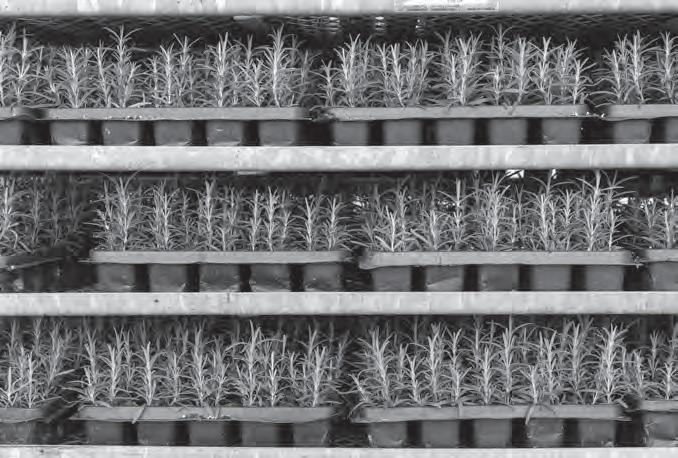
The following table provides an analysis of the individual components of the change in net interest income for 2023 and 2022.
(in thousands)
Increase/(decrease) in net interest income due to changes in:
2023 vs. 2022 2022 vs. 2021
Non-interest income consists primarily of patronage from other Farm Credit institutions, loan origination and servicing fees, insurance income, and other gains and losses. Total non-interest income was $176.8 million in 2023, compared to $154.4 million in 2022 and $146.9 million in 2021. The $22.4 million increase in non-interest income during 2023 was primarily due to an $11.8 million increase in participated loan patronage income from other Farm Credit institutions caused by higher participations sold balances, a $5.9 million increase in CoBank direct note patronage due to an increase in the note payable to CoBank from the merger with Farm Credit of New Mexico, increased loan volume in the core portfolio, a $2.9 million increase in other gains/losses primarily due to the sale of the St. Helena, California, office building, and an increase in loan servicing fees and late charges of $2.1 million, offset by a decrease in other financially-related services of $0.9 million. The $7.5 million increase in non-interest income in 2022 was primarily due to a $10.1 million increase in CoBank direct note patronage including special patronage declared of 9 basis points and a $3.8 million increase in participated loan patronage income from other Farm Credit institutions caused by higher participations sold balances, offset by a $9.4 million decrease in loan origination and servicing fees.
2023 net interest income was $548.0 million, compared to $493.7 million in 2022 and $445.5 million in 2021. The 2023 increase of $54.3 million represents an 11.00% increase over 2022 and was primarily due to the additional loan portfolio from the merger of Farm Credit of New Mexico and a slight increase in net interest margin. Average earning assets grew by $1.7 billion during 2023, representing an annual growth rate of 10.31%.
Net interest income in 2022 increased 10.81% from $445.5 million in 2021 to $493.7 million. The $48.2 million increase was primarily due to strong growth in loan volume and an increase in the net interest margin. Average earning assets grew by $1.8 billion during 2022, representing an annual growth rate of 12.51%.
Non-interest expenses consist of salaries and benefits, occupancy and equipment costs, purchased services, technology, insurance fund premiums, supervisory expenses, merger expenses and other operating costs. Non-interest expenses were $325.9 million in 2023, compared to $277.0 million in 2022 and $234.6 million in 2021. The $48.9 million increase in non-interest expenses in 2023 was primarily driven by a $33.2 million increase in salaries and benefits due to additional employee headcount from the merger with Farm Credit of New Mexico, increased incentive compensation accruals, and a $22.2 million increase in merger related expenses, offset by a decrease in purchased services of $7.7 million. The $42.4 million increase in non-interest expenses in 2022 was primarily driven by a $14.8 million increase in salaries and benefits due to an increase in employee headcount, a $7.8 million increase in purchased services, a $1.6 million increase in technology expenses, a $7.7 million increase in insurance fund premiums due to an increase in rates from 16 basis points in 2021 to 20 basis points in 2022, and a $10.6 million increase in other operating expenses, mainly due to increased travel and public relations expenditures.
The Association administers its variable-rate loans based on its cost of funds. Adjustments to borrower variable rates have generally followed changes in the prime rate. Management closely monitors interest rate movements and will adjust variable rates to customers to preserve capital for future growth.
The Association has a differential pricing policy for interest rates, which is based on loan size, servicing requirements, and credit risk of a loan. Management’s objective is to maintain interest rates that are competitive with other lenders providing similar-type loans.
Management reviews the allowance for credit losses on loans and the reserve for unfunded lending commitments on a quarterly basis and makes adjustments that reflect changes to variables in the allowance methodology resulting in a $20.6 million provision for credit losses, compared to a $12.3 million provision for credit losses in 2022. The 2022 provision was largely driven by strong loan growth and slight credit quality degradation. The Association recorded a provision for credit losses in 2021 of $6.8 million.
The Association’s effective tax rate is primarily affected by the mix of taxable and tax-exempt lending activities. Due to the level of tax-exempt lending activities and the Association’s patronage program, the provision for income taxes remains an insignificant component of net income.
Accumulated other comprehensive loss (AOCL) arises from the recognition of an unfunded nonqualified defined benefit pension plan liability and is a component of total shareholders’ equity. The liability and the associated other comprehensive loss will fluctuate from year to year depending on the plan’s performance and underlying actuarial assumptions and obligations. The actual loss or income to be realized as liabilities paid will not be determinable until the liabilities expire. See Note 12 to the consolidated financial statements for further discussion.
Liquidity is necessary to meet our financial obligations, such as paying our note with CoBank, funding loans and other commitments, and funding operations in a cost-effective manner. Our liquidity policy is intended to manage short-term cash flow, maximize debt reduction, and liquidate nonearning assets. Our direct loan with CoBank, cash on hand, and borrower loan repayments provide adequate liquidity to fund our ongoing operations and other commitments. In June 2021, the Association issued non-cumulative perpetual preferred stock and subordinated debt which also provided a significant source of funding.
The Association’s primary source of funds (excluding capital) and largest liability is its direct loan from CoBank. As further described in Note 7 to the consolidated financial statements, this direct loan is governed by a General Financing Agreement (GFA), is collateralized by a pledge of substantially all the Association’s assets, and is subject to regulatory borrowing limits. The GFA includes financial and credit metrics that, if not maintained, can result in increases to our funding costs. The GFA also requires compliance with FCA regulations regarding liquidity. To meet this requirement, the Association closely manages its funding activity and is allocated a share of CoBank’s liquid assets for liquidity calculation purposes. The Association is currently in compliance with the GFA and does not foresee any issues with obtaining funding or maintaining liquidity. The Association applies substantially all cash received to the direct loan and draws all cash disbursements from it. The Association’s ability to incur debt from other sources is subject to statutory and regulatory restrictions. The GFA was renewed on June 1, 2023, and matures on May 31, 2028.
CoBank’s primary source of funds is the issuance of Farm Credit System debt securities through the Federal Farm Credit Banks Funding Corporation. The continued liquidity of the Association is therefore directly dependent on the ability of the System to continue to sell debt securities at competitive rates. Historically, this access has provided a dependable source of competitively priced debt that is critical for supporting our mission of providing credit to agriculture and rural America. The Association anticipates continued access to the funding necessary to support its lending and business operations.
The Association primarily utilizes a block-funding methodology for funding. In addition to its blocks of debt, the Association also utilizes a daily revolving line of credit with CoBank for liquidity purposes. The interest rate on the revolving line is periodically adjusted by CoBank based on the terms and conditions of the borrowing.
The Association also has the ability to obtain funding from customer Funds Held accounts, which bear a variable interest rate and are uninsured. From a funding perspective, they provide a cost-effective additional borrowing source compared to our direct loan with CoBank and are offered to customers of the Association as a financial tool for excess operating funds. Restrictions apply to the purpose for which the funds held may be withdrawn and the maximum dollar amount a customer may maintain in Funds Held accounts.
In June 2021, the Association issued $300 million of Series A 5.25% fixed-rate reset perpetual non-cumulative preferred stock and $200 million of 3.375% fixed-to-floating rate subordinated debt due 2036. The Series A preferred stock and subordinated debt may be redeemed at
the option of the Association no earlier than June 15, 2026, and June 15, 2031, respectively, subject to conditions. S&P Global has currently assigned the Association a “BBB+” long-term issuer credit rating and assigned the preferred stock and subordinated debt ratings of “BB+” and “BBB,” respectively. Further information regarding the subordinated debt and preferred stock may be found in Notes 8 and 9 to the consolidated financial statements, respectively.
LIBOR settings (including with respect to overnight, one-month, three-month, six-month, and twelve-month tenors of USD dollar LIBOR) were discontinued or declared non-representative immediately after June 30, 2023. The Association executed LIBOR transition plans in accordance with Farm Credit Administration’s guidance to address the risks associated with the discontinuance of LIBOR and has completed the conversion to the Secured Overnight Financing Rate (“SOFR”). At December 31, 2023, the Association had no remaining LIBOR exposure related to loans or debt.
In the normal course of lending activities, the Association is subject to interest rate risk. The asset/liability management objective is monitored and managed within interest rate risk limits designed to target reasonable stability in net interest income over an intermediate planning horizon and to preserve a relatively stable market value of equity over the long term. Mismatches and exposure in interest rate repricing and indices of assets and liabilities can arise from product structures, customer activity, capital reinvestment, and liability management. While the Association actively manages interest rate risk within the policy limits approved by the Association’s Board of Directors through the strategies established by the Market Risk Committee (MRC), there is no assurance that these mismatches and exposures will not adversely impact earnings and capital. The overall objective is to develop competitively priced and structured loan products for customers’ benefit and fund these products with an appropriate blend of equity and debt obligations.
The interest rate gap analysis shown in the following table presents a comparison of interest-earning assets and interest-bearing liabilities in defined time segments at December 31, 2023. The analysis shows how the Association is positioned by comparing the amount of assets and liabilities that reprice at various time periods in the future. As the dividend on preferred stock is tied to an interest rate much like a bond’s interest payments, is subject to interest rate risk, and is consistent with reporting to the Asset Liability Committee (ALCO), preferred stock is bucketed with liabilities. The interest rate gap analysis is a static indicator that does not reflect future changes in repricing characteristics and may not necessarily indicate the sensitivity of net interest income in a changing interest rate environment. The value of this analysis can be limited given factors such as the differences between interest rate indices on loans and the underlying funding, the relative changes in the levels of interest rates over time, and optionality included in loans and the respective funding that can impact future earnings and market value.
The Association’s repricing gap as of December 31, 2023, can be characterized as asset-sensitive over a one-year period. An asset-sensitive position indicates that the Association has more interest-rate-sensitive assets than interest-rate-sensitive liabilities for particular time periods into the future. Given some of the inherent weaknesses with interest rate gap analysis, simulation models are used to develop additional interest-rate-sensitivity measures and estimates. The assumptions used to produce anticipated results are periodically reviewed and models are tested to help ensure reasonable performance. Various simulations are produced for net interest income and market value of equity. These simulations help to assess interest rate risk and make adjustments as needed to the products and related funding strategies.
The Association’s Asset/Liability Management Board policy establishes limits for changes in net interest income and market value of equity sensitivities. These limits are measured and reviewed by ALCO monthly and reported to the MRC and Board at least quarterly. The Board policy limit for net interest income is a negative 10.0% change, and the market value of equity policy limit is a negative 15.0% change, given parallel and instantaneous shocks of interest rates up and down 200 basis points. In instances when the rate on the three-month
U.S. Treasury bill is less than 4.0%, FCA guidelines provide that the Regulatory Down Policy shock measure should be used in lieu of the down 200 basis point measure, with that measure equal to one-half of the three-month U.S. Treasury bill rate. The rate on the three-month U.S. Treasury bill was greater than 4.0% as of December 31, 2023, therefore, a shock of down 200 basis points was used. The GFA also uses these simulation results to assess the interest rate risk position and whether corrective action is necessary. The following table shows the percentage impacts to net interest income and market value of equity using parallel and instantaneous interest rate increases of 100 basis points and 200 basis points. In all scenarios, the underlying assumptions and strategies are held constant so that results are comparable from scenario to scenario. However, actual results would differ to the extent changes in strategy were undertaken to mitigate the unfavorable impact of interest rate changes. As of December 31, 2023, all interest rate risk-related measures were within the Board policy limits, GFA requirements, and management guidelines.
The Association utilizes a portfolio risk management process to evaluate and monitor the risk associated with major commodity groups, credit classifications, unsecured loans, and purchased loans. This process utilizes shock analysis to determine the impact of significant credit deterioration in any one group on the portfolio as a whole. Credit classification trends are identified and monitored as an early warning sign of potential nonperforming assets. The Association employs management personnel to perform the risk management process that the Board of Directors oversees. In addition, the Association conducts internal credit reviews to evaluate the effectiveness of these processes.
Credit risk arises from the potential failure of a borrower to meet repayment obligations that result in a financial loss to the lender. Credit risk exists in the Association’s loan portfolio (including letters of credit and unfunded loan commitments) and is actively managed on an individual and portfolio basis through the application of sound lending and underwriting standards, policies, and procedures. Underwriting standards are developed and utilized to determine an applicant’s operational, financial, and management resources available for repaying debt within the terms of the note or loan agreement. Underwriting standards include, among other things, an evaluation of the following:
• Character: borrower integrity and credit history
• Capacity: repayment capacity of the borrower based on cash flows from operations or other sources of income
• Collateral: protection of the lender in the event of default and a secondary source of loan repayment
• Capital: ability of the operation to survive unanticipated risks
• Conditions: intended use of the loan funds, terms, restrictions, etc.
Processes for information gathering, balance sheet and income statement verification, loan analysis, credit approvals, disbursements of proceeds, and subsequent loan servicing actions are established and followed. Underwriting standards vary by industry and are updated periodically to reflect market and industry conditions.
By regulation, the Association cannot have loan commitments to one borrower totaling more than 15.0% of regulatory capital. The Association has set lending limits to manage loan concentrations. These limits are established for individual loan size, commodity, special lending programs, and geographic concentrations. The Association has established internal lending delegations to properly control the loan approval process. Delegations to staff are based on the Association’s risk-bearing ability, loan size, complexity, type, and risk, as well as the expertise of the credit staff member. Larger and more complex loans are typically approved by a loan committee with the most experienced and knowledgeable credit staff serving as members. One method for managing concentration is through the use of participation programs with other System and non-System institutions. Buying and selling loan volume can help reduce concentrations and manage growth and capital positions while allowing for a sharing of credit risk. Concentrations and credit risk are also managed through the utilization of government guarantee programs and Farmer Mac guarantee programs. The Association has further diversified concentrations in agricultural production by developing rural residential, part-time farmer, and agribusiness portfolios. Rural residents and part-time farmers often derive a significant portion of earnings from nonagricultural sources, thus helping diversify repayment risk to sources other than agricultural production income.
The majority of Association lending is first-mortgage real estate lending. Production and intermediate-term lending accounts for most of the remaining volume and is typically secured by either real or personal property. Collateral evaluations are made within FCA and Uniform Standards of Professional Appraisal Practices requirements. All property is appraised at market value. Certain appraisals must be performed by individuals with a state certification or license. The Association utilizes a Combined System Risk Model (Model) in its loan and portfolio management processes. The Model is a two-dimensional risk rating system that estimates each loan’s probability of default and loss given default. The Model uses objective and subjective criteria to identify inherent strengths, weaknesses, and risks in each loan. The Model estimates loan losses with levels of risk granularity, particularly related to acceptable loans. The Model’s 14-point scale provides for nine acceptable categories, one other assets especially mentioned (OAEM) category, two substandard categories, one doubtful category, and one loss category. This Model also serves as the basis for future economic capital modeling.
The following table presents selected statistics related to the credit quality of loans including accrued interest at December 31.
The Association’s credit quality remained strong throughout 2023. Acceptable and OAEM as a percentage of total loans was 96.14%, a slight decrease from 97.15% during 2022. Credit quality was generally impacted by global economic conditions, rising interest rates, and other challenges facing agriculture. The Association’s Acceptable and OAEM credit quality was 97.79% in 2021. The credit quality of the Association’s loan portfolio remains strong due to our geographical and commodity diversification and our continued emphasis on sound underwriting standards. Agriculture remains a cyclical business that is heavily influenced by production, operating costs, commodity prices, and global economic conditions. Each of these can be significantly impacted by uncontrollable events. Credit quality is expected to face continued pressure in 2024 due to commodity price volatility, trade negotiations, input and other price inflation, the uncertain interest rate environment, and other potentially adverse global conditions. In addition, drought conditions will impact water availability where present in our lending territory.
The Association may participate in financial instruments with off-balance sheet risk to satisfy the financing needs of its borrowers. These financial instruments include commitments to extend credit. The instruments involve, to varying degrees, elements of credit risk in excess of the amount recognized in the financial statements. Commitments to extend credit are agreements to lend to a borrower as long as there is not a violation of any condition established in the contract. Commitments and letters of credit generally have fixed expiration dates or other termination clauses and may require payment of a fee by the borrower. The following table summarizes the maturity distribution of unfunded credit commitments on loans at December 31, 2023.
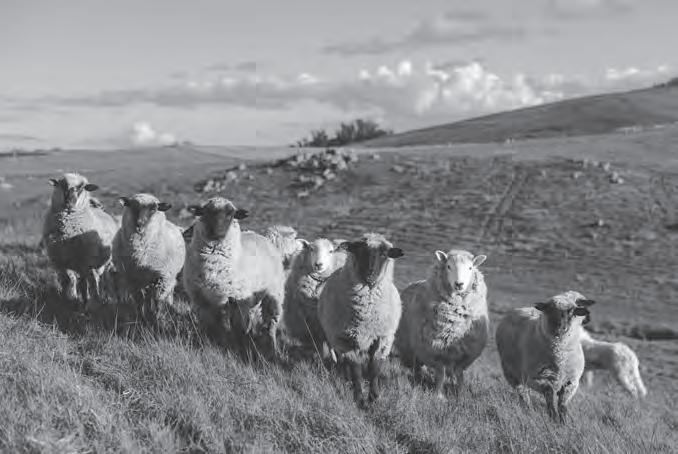
Because many of these commitments are expected to expire without being drawn upon, the total commitments do not necessarily represent future cash requirements. However, these credit-related financial instruments have off-balance sheet credit risk because their contractual amounts are not reflected on the Consolidated Statements of Condition until funded or drawn upon. The credit risk associated with issuing commitments and letters of credit is substantially the same as that involved in extending loans to borrowers, and the Association applies the same credit policies to these commitments. The amount of collateral obtained, if deemed necessary upon extension of credit, is based on management’s credit evaluation of the borrower.
Capital supports asset growth and provides protection for unexpected credit and operating losses. Capital is also needed for investments in new products and services. We believe a sound capital position is critical to our long-term financial success and our ability to serve our mission. Over the past several years, we have been able to build capital primarily through net income retained after patronage, supplemented with institutional capital through Series A preferred stock and subordinated debt issuances. Shareholders’ equity at December 31, 2023, totaled $3.5 billion, compared with $2.8 billion at December 31, 2022, and $2.7 billion at December 31, 2021. The $0.7 billion increase in 2023 was primarily due to net income of $378.3 million, an increase in equity upon merger with Farm Credit of New Mexico of $491.1 million, and a $31.6 million increase due to the adoption of the new accounting method for credit losses (CECL), offset by $213.7 million of cash patronage distributions declared to our customers. Our capital position is reflected in the following ratio comparisons.
As a prudent business practice, the Association has established a capital adequacy plan that outlines objectives related to maintaining a stable, secure capital base. Common Equity Tier 1 capital, as defined by FCA regulations, is generated from two sources: unallocated retained earnings and common cooperative equities (qualifying capital stock and allocated equity).
Unallocated retained earnings represented 84.68%, 89.31%, and 88.77% of total capital at December 31, 2023, 2022, and 2021, respectively. For a description of classes of stock and regulatory capital requirements, as well as a description of the Association’s Capital Adequacy Plan, please see Note 9 to the consolidated financial statements. The Board and management consider current capital ratios to be adequate in view of anticipated loan growth, operating performance, and identified risks.
Association bylaws require each borrower to invest in the capital stock of the Association. The Association may require additional capital contributions in accordance with federal regulations. Equities purchased by borrowers, institutional capital issued, and surplus accumulated from earnings provide the capital resources used in the Association’s operations.
The Board of Directors has adopted an Obligating Resolution to distribute 2024 patronagesourced earnings to patrons of the Association, contingent upon the Association achieving certain capital criteria.
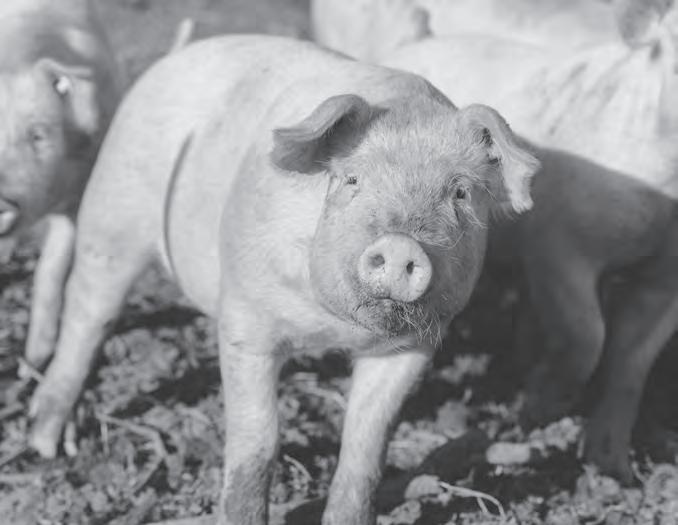
Our Board of Directors establishes a formal capital adequacy plan that addresses capital goals in relation to risks. The capital adequacy plan assesses the capital level necessary for financial viability and to provide for growth. The plan is updated annually and approved by our Board of Directors. FCA regulations require the plan to consider the following factors in determining optimal capital levels, including:
• Regulatory capital requirements
• Asset quality
• Needs of our customer base
• Other risk-oriented activities, such as funding and interest rate risks, contingent and off-balance sheet liabilities, and other conditions warranting additional capital
As shown in the following table, our capital and leverage ratios exceeded regulatory minimums. If these capital standards are not met, the FCA can impose restrictions, including limiting our ability to pay cash patronage distributions, retire equities, pay preferred stock dividends, and pay discretionary senior executive incentive compensation.
The increases in the capital ratios that occurred in 2023 primarily reflect the increased capital acquired through the merger with Farm Credit of New Mexico, as well as the Association's cost curtailment efforts in 2023, along with more modest loan growth than in previous years.
As of December 31, 2023, no enforcement actions were in effect and FCA took no enforcement actions on the Association during the year.

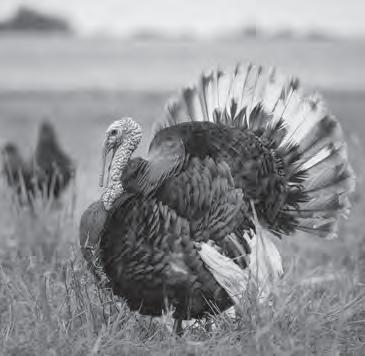
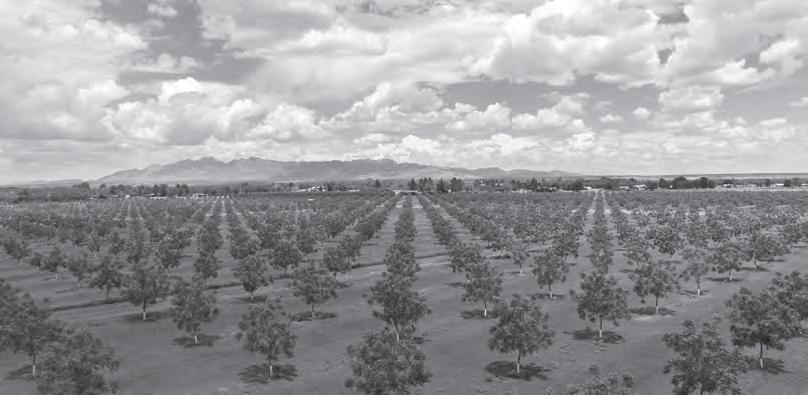
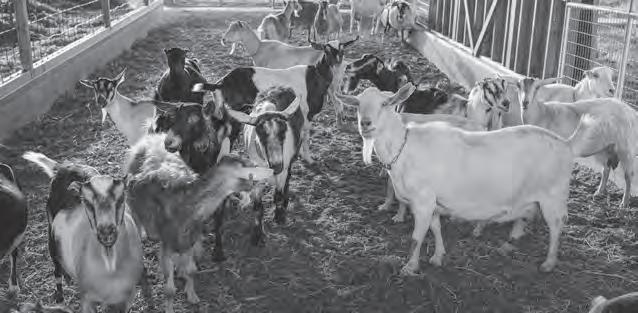
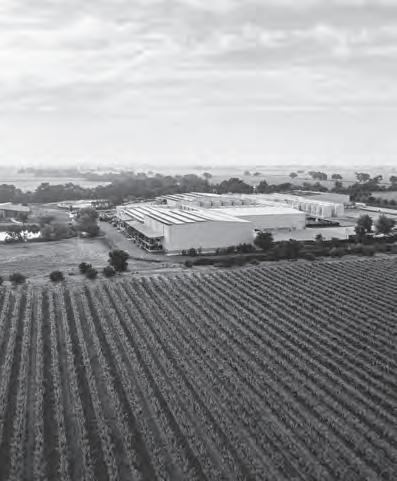


To the Board of Directors of American AgCredit, ACA OPINION
We have audited the accompanying consolidated financial statements of American AgCredit, ACA and its subsidiaries (the “Association”), which comprise the consolidated statements of condition as of December 31, 2023, 2022, and 2021, and the related consolidated statements of comprehensive income, changes in shareholders’ equity and cash flows for the years then ended, including the related notes (collectively referred to as the “consolidated financial statements”).
In our opinion, the accompanying consolidated financial statements present fairly, in all material respects, the financial position of the Association as of December 31, 2023, 2022, and 2021, and the results of its operations and its cash flows for the years then ended in accordance with accounting principles generally accepted in the United States of America.
We conducted our audit in accordance with auditing standards generally accepted in the United States of America (U.S. GAAS). Our responsibilities under those standards are further described in the Auditors’ Responsibilities for the Audit of the Consolidated Financial Statements section of our report. We are required to be independent of the Association and to meet our other ethical responsibilities, in accordance with the relevant ethical requirements relating to our audit. We believe that the audit evidence we have obtained is sufficient and appropriate to provide a basis for our audit opinion.
As discussed in Note 2 to the financial statements, the Association changed the manner in which it accounts for the allowance for credit losses in 2023. Our opinion is not modified with respect to this matter.
Management is responsible for the preparation and fair presentation of the consolidated financial statements in accordance with accounting principles generally accepted in the United States of America, and for the design, implementation, and maintenance of internal control relevant to the preparation and fair presentation of consolidated financial statements that are free from material misstatement, whether due to fraud or error.
In preparing the consolidated financial statements, management is required to evaluate whether there are conditions or events, considered in the aggregate, that raise substantial doubt about the Association’s ability to continue as a going concern for one year after the date the consolidated financial statements are available to be issued.
Our objectives are to obtain reasonable assurance about whether the consolidated financial statements as a whole are free from material misstatement, whether due to fraud or error, and to issue an auditors’ report that includes our opinion. Reasonable assurance is a high level of assurance but is not absolute assurance and therefore is not a guarantee that an audit conducted
in accordance with U.S. GAAS will always detect a material misstatement when it exists. The risk of not detecting a material misstatement resulting from fraud is higher than for one resulting from error, as fraud may involve collusion, forgery, intentional omissions, misrepresentations, or the override of internal control. Misstatements are considered material if there is a substantial likelihood that, individually or in the aggregate, they would influence the judgment made by a reasonable user based on the consolidated financial statements.
In performing an audit in accordance with U.S. GAAS, we:
• Exercise professional judgment and maintain professional skepticism throughout the audit.
• Identify and assess the risks of material misstatement of the consolidated financial statements, whether due to fraud or error, and design and perform audit procedures responsive to those risks. Such procedures include examining, on a test basis, evidence regarding the amounts and disclosures in the consolidated financial statements.
• Obtain an understanding of internal control relevant to the audit in order to design audit procedures that are appropriate in the circumstances, but not for the purpose of expressing an opinion on the effectiveness of the Association’s internal control. Accordingly, no such opinion is expressed.
• Evaluate the appropriateness of accounting policies used and the reasonableness of significant accounting estimates made by management, as well as evaluate the overall presentation of the consolidated financial statements.
• Conclude whether, in our judgment, there are conditions or events, considered in the aggregate, that raise substantial doubt about the Association’s ability to continue as a going concern for a reasonable period of time.
We are required to communicate with those charged with governance regarding, among other matters, the planned scope and timing of the audit, significant audit findings, and certain internal control-related matters that we identified during the audit.
Management is responsible for the other information included in the annual report. The other information comprises the information included in the 2023 Annual Report, but does not include the consolidated financial statements and our auditors’ report thereon. Our opinion on the consolidated financial statements does not cover the other information, and we do not express an opinion or any form of assurance thereon.
In connection with our audit of the consolidated financial statements, our responsibility is to read the other information and consider whether a material inconsistency exists between the other information and the consolidated financial statements or the other information otherwise appears to be materially misstated. If, based on the work performed, we conclude that an uncorrected material misstatement of the other information exists, we are required to describe it in our report.


The
notes are an integral part of these consolidated financial statements.
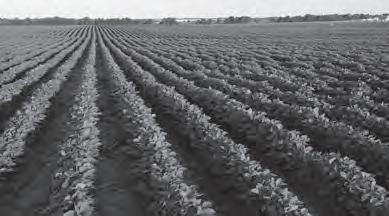

The accompanying notes are an integral part of these consolidated financial statements.
The accompanying notes are an integral part of these consolidated financial statements.
(dollars in thousands, except as noted)

intermediate-term loans. Agricultural Credit Associations (ACAs), FLCAs, and PCAs are collectively referred to as associations.
a. organization: American AgCredit, ACA, including its subsidiaries, American AgCredit, PCA, and American AgCredit, FLCA (collectively, the Association), is a member-owned cooperative that provides credit and credit-related services to and for the benefit of eligible borrowers/stockholders for qualified agricultural purposes in the states of Nevada, Hawaii, and New Mexico. In California, the Association serves the counties of Alameda, Alpine, Amador, Calaveras, Contra Costa, Del Norte, El Dorado, Humboldt, Lake, Lassen, Marin, Mariposa, Mendocino, Merced, Modoc, Mono, Monterey, Napa, Plumas, Riverside, Sacramento, San Benito, San Bernardino, San Diego, San Francisco, San Joaquin, San Mateo, Santa Clara, Santa Cruz, Sierra, Siskiyou, Sonoma, Stanislaus, Tuolumne, and portions of Fresno, Los Angeles, Orange, and Trinity. In Kansas, the Association serves the counties of Barber, Barton, Butler, Chautauqua, Clark, Cloud, Comanche, Cowley, Edwards, Elk, Ellis, Ellsworth, Finney, Ford, Graham, Grant, Gray, Greeley, Greenwood, Hamilton, Harper, Harvey, Haskell, Jewell, Kearny, Kingman, Kiowa, Lane, Lincoln, McPherson, Meade, Mitchell, Morton, Norton, Osborne, Ottawa, Pawnee, Phillips, Pratt, Reno, Republic, Rice, Rooks, Rush, Russell, Saline, Scott, Sedgwick, Seward, Smith, Stafford, Stanton, Stevens, Sumner, Trego, and Wichita. In Oklahoma, the Association serves the counties of Kay, Noble, and Osage. In Colorado, the Association serves the counties of Adams, Arapahoe, Archuleta, Boulder, Broomfield, Clear Creek, Delta, Denver, Dolores, Douglas, Eagle, part of Elbert, Garfield, Gilpin, Grand, Gunnison, part of Hinsdale, Jackson, Jefferson, La Plata, Larimer, Mesa, Moffat, Montezuma, Montrose, Ouray, Pitkin, Rio Blanco, Routt, San Juan, San Miguel, part of Saquache, Summit, and Weld.
The Association is a lending institution of the Farm Credit System (System), a nationwide system of cooperatively owned banks and associations, that was established by Acts of Congress to meet the credit needs of American agriculture and is subject to the provisions of the Farm Credit Act of 1971, as amended (Farm Credit Act).
At December 31, 2023, the System was comprised of three Farm Credit Banks (FCBs), one Agricultural Credit Bank (ACB), and 56 associations. Each FCB and the ACB serve Federal Land Credit Associations (FLCAs) that originate and service long-term real estate mortgage loans, and/ or Production Credit Associations (PCAs) that may originate and service short-term and
CoBank, its related associations, and AgVantis Inc. (AgVantis) are collectively referred to as “the District.” CoBank provides the funding to associations within the District and is responsible for supervising certain activities of the District associations. AgVantis, which is owned by the entities it serves, provides technology and other operational services to certain associations. As of December 31, 2023, the District consisted of CoBank, 16 ACAs, which each have two wholly owned subsidiaries (an FLCA and a PCA), and AgVantis.
ACA parent companies provide financing and related services through their FLCA and PCA subsidiaries. Generally, the FLCA makes secured long-term agricultural real estate and rural home mortgage loans. The PCA makes short- and intermediate-term loans for agricultural production or operating purposes. The Association also has a wholly owned subsidiary, AgCredit Holding Company, LLC, whose sole purpose is to hold, manage, and liquidate foreclosed property.
American AgCredit participates in AgDirect, LLP (AgDirect), a trade credit financing program that includes originations and refinancings of agricultural equipment loans through independent equipment dealers. AgDirect is an entity created by Farm Credit Services of America (FCSA), which is responsible for the marketing, operation, and implementation of the program. FCSA serves as the master servicer for the program assets and provides periodic reporting to investor associations. At December 31, 2023, the Association’s investment in AgDirect was $29.7 million, representing a 6.3% ownership in the partnership.
Congress has delegated authority to the Farm Credit Administration (FCA) to regulate the System banks and associations. The FCA examines the activities of System institutions to ensure their compliance with the Farm Credit Act, FCA regulations, and safe and sound banking practices.
The Farm Credit Act established the Farm Credit System Insurance Corporation (FCSIC) to administer the Farm Credit Insurance Fund (Insurance Fund). The Insurance Fund is required to be used to insure the timely payment of principal and interest on System-wide debt obligations (insured debt) and ensure the retirement of protected borrower capital at par or stated value, and for other specified purposes. The Insurance Fund is also available for discretionary uses by the FCSIC to provide assistance to certain troubled System institutions and to cover the operating expenses of the FCSIC. Each System bank has been required to pay premiums, which may be passed on to the Association, into the Insurance Fund, based on its annual average adjusted
outstanding insured debt until the monies in the Insurance Fund reach the “secure base amount,” which is defined in the Farm Credit Act as 2.0% of the aggregate insured obligations (adjusted to reflect the reduced risk on loans or investments guaranteed by federal or state governments) or such other percentage of the aggregate obligations as the FCSIC, in its sole discretion, determines to be actuarially sound. When the amount in the Insurance Fund exceeds the secure base amount, the FCSIC is required to reduce premiums, as necessary to maintain the Insurance Fund at the 2.0% level. As required by the Farm Credit Act, as amended, the FCSIC may return excess funds above the secure base amount to System institutions.
b. operations: The Farm Credit Act sets forth the types of authorized lending activity, persons eligible to borrow from the Association, and financial services that can be offered by the Association. The Association is authorized to provide, either directly or in participation with other lenders, credit, credit commitments, and related services to eligible borrowers. Eligible borrowers include farmers, ranchers, producers or harvesters of aquatic products, rural residents, and farm-related businesses. The Association also serves as an intermediary in offering credit life insurance and multi-peril crop insurance.
c. merger accounting: Effective October 1, 2023, Farm Credit of New Mexico, ACA and its PCA and FLCA subsidiaries (FCNM) completed a merger with and into American AgCredit and its respective PCA and FLCA subsidiaries, whereupon all shareholders of FCNM became shareholders of American AgCredit. American AgCredit acquired 100% of the assets and assumed 100% of the liabilities of FCNM. The primary reason for the merger was to strategically position the Association to best serve members’ needs with enhanced marketplace stability, increased funding capacity, and additional capital. The effects of the merger are included in American AgCredit’s financial position, results of operations, equity, and related metrics beginning October 1, 2023.
The acquisition method of accounting as required under FASB ASC Topic 805, Business Combinations, requires the financial statement presentation of combined balances as of the date of merger, but not for previous periods. The Consolidated Statements of Condition reflect the merged balances as of December 31, 2023.
As cooperative organizations, Farm Credit associations operate for the mutual benefit of their members and other customers and not for the benefit of equity investors. As such, capital stock provides no significant interest in corporate earnings or growth. Specifically, due to restrictions in applicable regulations and the bylaws, the associations can issue stock only at its par value of $5 per share, the stock is not tradable, and the stock can be retired only for the lesser of par value or book value. The shares of FCNM stock were converted into shares of American AgCredit, with identical rights and attributes. For this reason, the conversion of FCNM stock pursuant to the merger occurred at a one-for-one exchange ratio (i.e., each FCNM share was converted into one share of American AgCredit stock with an equal par value).
Management believes that because the stock in each association is fixed in value (although subject to impairment), the American AgCredit stock issued in the merger provided no basis for estimating the fair value of the consideration transferred pursuant to the merger. In the absence of a purchase price determination, American AgCredit undertook a process to estimate the acquisition-date fair value of FCNM assets and liabilities instead of the acquisition-date fair value of American AgCredit’s equity interests transferred as consideration. The fair value of the assets acquired and liabilities assumed from FCNM were measured based on various estimates using assumptions that management believes are reasonable and using information available as of the merger date. Use of different estimates and judgments could yield materially different results.
The fair value of the net identifiable assets acquired of $1.9 billion was substantially equal to the fair value of the equity interest exchanged in the merger. In addition, no material amounts of intangible assets were acquired, therefore, no goodwill was recorded. A net increase of $491.1 million was recorded in shareholders’ equity related to the merger.
The following condensed statement of net assets acquired reflects the fair value assigned to FCNM net assets as of the acquisition date. There were no subsequent changes to the initial fair value measurements since the merger.
Business combination adjustments to FCNM’s assets included a $110.3 million net business combination discount to gross loans. With the adoption of CECL, loans acquired in a business combination that have experienced more-than-insignificant deterioration in credit quality since origination are considered purchased with credit deterioration (PCD). At the acquisition date, an estimate of expected credit losses was made for PCD loans of $2.5 million. This initial allowance for credit losses (ACL) is allocated to individual PCD loans and added to the acquisition date fair values to establish the initial amortized cost basis of the PCD loans. As the initial ACL is added to the fair values, there is no provision for credit losses recognized upon acquisition of a PCD loan. For acquired loans not deemed PCD at acquisition, the differences between the initial fair value and the unpaid principal balance are recognized as interest income over the lives of the related loans. An ACL is estimated and $4.6 million was recorded as a provision for credit losses for non-PCD assets post-merger. Fair value adjustments to FCNM’s liabilities included a $105.0 million net business combination discount to note payable to CoBank to reflect changes in interest rates and other market conditions since the time these instruments were issued. These differences are being amortized into interest expense over the remaining lives of the debt instruments.
The accounting and reporting policies of the Association conform to accounting principles generally accepted in the United States of America (GAAP) and prevailing practices within the banking industry. The preparation of consolidated financial statements in conformity with GAAP requires management to make estimates and assumptions that affect amounts reported in the financial statements and accompanying notes. Significant estimates are discussed in these notes, as applicable. Actual results may differ from these estimates.
The consolidated financial statements include the accounts of American AgCredit, PCA and American AgCredit, FLCA. All significant intercompany transactions have been eliminated in consolidation.
a. recently issued or adopted accounting pronouncements: The Association adopted the Financial Accounting Standards Board (FASB) guidance entitled “Measurement of Credit Losses on Financial Instruments” and other subsequently issued accounting standards updates related to credit losses on January 1, 2023. This guidance replaced the current incurred loss impairment methodology with a single allowance framework that estimates the current expected credit losses over the remaining contractual life for all financial assets measured at amortized cost and certain off-balance sheet credit exposures. The guidance is applied on a modified retrospective basis and requires management to consider in its estimate of allowance for credit losses (ACL) relevant historical events, current conditions, and reasonable and supportable forecasts that consider macroeconomic conditions that may affect the collectability of the assets. Prior to the adoption, the allowance for credit losses represented management’s estimate of the probable credit losses inherent in its loan portfolio and certain unfunded commitments. The adoption of this guidance resulted in a decrease in the ACLL due to the low expected losses over the life of the loan portfolio.
Also effective January 1, 2023, was the updated guidance entitled “Financial Instruments Credit Losses: Troubled Debt Restructurings and Vintage Disclosure.” This guidance requires the Association to determine whether a modification results in a new loan or a continuation of an existing loan, among other disclosures specific to modifications with borrowers that are experiencing financial difficulties. The update eliminates the accounting guidance for troubled debt restructurings by creditors. The update also requires disclosure of current period gross write-offs by year of origination for financing receivables and net investments in leases on a prospective basis.

The following table presents the balance sheet impact to the allowance for credit losses and capital upon adoption of this guidance on January 1, 2023:
(in millions)
December 31, 2022 CECL Adoption Impact January 1, 2023
Allowance for credit losses on loans $(49.4) $28.4 $(21.0)
Deferred tax assets $9.3 $(3.1) $6.2
Deferred tax valuation allowance $(4.2) $3.1 $(1.1) LIABILITIES
Reserve for unfunded commitments $3.9 $(3.2) $0.7
Unallocated retained surplus, net of tax $1,850.4 $31.6 $1,882.0
In December 2022, the FASB issued an update entitled “Reference Rate Reform – Deferral of the Sunset Date of Topic 848.” In March 2020, the FASB issued guidance entitled “Facilitation of the Effects of Reference Rate Reform on Financial Reporting (Reference Rate Reform),” which provided optional expedients and exceptions for applying GAAP to contracts, hedging relationships, and other transactions affected by reference rate reform to ease the potential burden related to reference rate reform (transition away from the London Inter-Bank Offered Rate (LIBOR) with the optional amendments effective as of March 12, 2020 through December 2022, the sunset date. At the time the update was issued, the expectation was that LIBOR would cease to be published after December 31, 2021. In January 2021, the FASB issued additional guidance (Accounting Standards Update No. 2022-06) that extends the period of time companies can utilize the reference rate reform guidance to December 31, 2024, after which entities will no longer be permitted to apply the relief.
b. loans and allowance for credit losses: Long-term real estate mortgage loans generally have maturities ranging from five to 40 years. Substantially all short- and intermediate-term loans for agricultural production or operating purposes have maturities of 10 years or less.
Loans are carried at their principal amount outstanding adjusted for charge-offs and deferred loan fees or costs. Loan origination fees and certain direct origination costs for mortgage loans and commercial loans with terms greater than one year are capitalized and the net fee or cost is amortized over the life of the related loan as an adjustment of the yield of the related loan. Interest on loans is accrued and credited to interest income based on the daily principal amount outstanding. The Association purchases loan and lease participations from other System entities to generate additional earnings and diversify risk related to existing commodities financed and the geographic area served. Additionally, the Association sells a portion of certain large loans to other System entities to reduce risk and comply with established lending limits. When loans are sold, the sale terms comply with requirements under ASC Topic 860, “Transfers and Servicing.”
Nonaccrual loans are loans for which there is reasonable doubt that all principal and interest will not be collected according to the original contractual terms and are generally considered substandard or doubtful, which is in accordance with the loan rating model, as described below. A loan is considered contractually past due when any principal repayment or interest payment required by the loan contract is not received on or before the due date. A loan shall remain contractually past due until it is modified or until the entire amount past due, including principal, accrued interest, and penalty interest incurred, is collected or otherwise discharged in full.
Consistent with prior practice, loans are generally placed in nonaccrual status when principal or interest is delinquent for 90 days or more (unless adequately collateralized and in the process of collection), when circumstances indicate that collection of principal and interest is in doubt, or legal action, including foreclosure or other forms of collateral conveyance, has been initiated to collect the outstanding principal and interest. At the time a loan is placed in nonaccrual status, accrued interest deemed uncollectible is reversed (if accrued in the current year) or charged against the allowance for credit losses on loans (if accrued in prior years). Loans are charged off at the time they are determined to be uncollectible.
When loans are in nonaccrual status, interest payments received in cash are generally recognized as interest income if the collectability of the loan principal is fully expected and certain other criteria are met. Otherwise, payments received on nonaccrual loans are applied against the recorded investment in the loan asset. Nonaccrual loans may, at times, be maintained on a cash basis. Generally, cash basis refers to the recognition of interest income from cash payments received on certain nonaccrual loans for which the collectability of the recorded investment in the loan is no longer in doubt and the loan does not have a remaining unrecovered charge-off associated with it. Nonaccrual loans are returned to accrual status if all contractual principal and interest is current, the borrower is fully expected to fulfill the contractual repayment terms and after remaining current as to principal and interest for a sustained period or have a recent repayment pattern demonstrating future repayment capacity to make on-time payments. If previously unrecognized interest income exists at the time the loan is transferred to accrual status, cash received at the time of or subsequent to the transfer should first be recorded as interest income until such time as the recorded balance equals the contractual indebtedness of the borrower.
The Association elected to continue classifying accrued interest on loans in accrued interest receivable and not as part of loans on the Consolidated Statements of Condition. The Association also elected to not estimate an allowance for losses on interest receivable balances because the nonaccrual policies in place provide for the accrual of interest to cease on a timely basis when all contractual amounts are not expected.
Loan modifications may be granted to borrowers experiencing financial difficulty. Modifications can be in the form of one or a combination of principal forgiveness, interest rate reduction, other-than-insignificant payment delay, or a term extension. Covenant waivers and modifications of contingent acceleration clauses are not considered term extensions.
Interest rate modifications are a reduction of the weighted average contractual interest rate. Such modifications are inclusive of the impact from any applicable default on the related loan, specifically that which resulted in an interim increase from the stated interest rate to that of the contractual default rate, generally 2-5% above the interest rate otherwise applicable. Subject to the mitigating terms and other considerations provided by the customer as part of the final negotiated modification, the applicable interest rate can revert to the pre-default level, or some level between that of the original stated rate and the default rate, upon formal documentation of the modification.
Collateral-dependent loans are loans secured by collateral, including but not limited to agricultural real estate, crop inventory, equipment, and livestock. CECL requires an entity to measure the expected credit losses based on fair value of the collateral at the reporting date when the entity determines that foreclosure is probable. Additionally, CECL allows a fair value practical expedient as a measurement approach for loans when the repayment is expected to be provided substantially through the operation or sale of the collateral when the borrower is experiencing financial difficulties. Under the practical expedient measurement approach, the expected credit losses are based on the difference between the fair value of the collateral less estimated costs to sell and the amortized cost basis of the loan.
Purchased loans are recorded at their fair value at the acquisition date. Any loans that have experienced a more-than insignificant deterioration in credit quality since origination are identified as PCD loans and the Association is required to estimate and record an ACL for these loans. This allowance is then added to the purchase price of the PCD loans to establish the initial amortized cost basis, rather than being reported as a provision for credit losses. Any subsequent changes in expected credit losses are recorded through the income statement with a provision for credit losses. An ACL is recorded on non-PCD loans through a provision for credit losses.
Beginning January 1, 2023, the ACL represents the estimated current expected credit losses over the remaining estimated life of financial assets measured at amortized cost and certain off-balance sheet credit exposures. The ACL takes into consideration relevant information about past events, current conditions, and reasonable and supportable macroeconomic forecasts of future conditions. The contractual term excludes expected extensions, renewals, and modifications unless the extension or renewal options are not unconditionally cancellable. The ACL comprises the allowance for credit losses on loans (ACLL) and the reserve for unfunded commitments, which are presented on the balance sheet in other liabilities.
Determining the appropriateness of the allowance is complex and requires judgment by management about the effect of matters that are inherently uncertain. Subsequent evaluations of the loan portfolio, considering macroeconomic conditions, forecasts, and other factors prevailing at the time, may result in significant changes in the ACL in those future periods.
The methodology for the ACLL represents management’s estimate of credit losses over the remaining expected life of loans.
The Association employs a disciplined process and methodology to establish its ACLL that has two basic components: first, an asset-specific component involving individual loans that do not share risk characteristics with other loans and the measurement of expected credit losses for such individual loans; and second, a pooled component for estimated expected credit losses for pools of loans that share similar risk characteristics. The Association utilizes the loan’s accrual status to bifurcate loans into these two categories.
For nonaccrual loans, the collateral-dependent practical expedient is used, which is defined as fair value of the collateral less selling costs. The reserve is calculated as the amount the net receivable value (NRV) is less than the exposure at default.
In estimating the component of the ACLL that shares common risk characteristics, loans are segregated into eight industry groups and evaluated with models specific to each industry. The models include macro-economic variables as well as loan-level variables, such as internal risk ratings. The allowance is determined by modeling an undiscounted cash flow method. Using this approach, contractual features of the loans combined with loan prepayment, loan probability of default, and loan recovery given default models are used to project future principal and interest cash flows over the life of the loan given forecasted interest rates and economic variables. For each individual loan record, the pooled allowance is then calculated as the amount of lifetime defaults less lifetime recoveries.
The Association uses three probability-weighted deterministic scenarios from Oxford Economics over a reasonable and supportable forecast period of 10 years. The economic forecasts incorporate macroeconomic variables, including Treasury rates and corporate bond spreads, as well as net farm income and agricultural commodity prices, along with other economic factors that have been shown to influence loan performance. Also considered are loan and borrower characteristics, such as internal risk ratings, vintage, size, and history of late payments, among others. Subsequent to the forecast period, the Association reverts the macro-economic variables to long-term values using a mean reversion analysis to inform the cash flows for the remaining contractual life of the loan portfolio.
In addition to the quantitative calculation, the Association considers the imprecision inherent in the process and methodology, emerging risk assessments, and other subjective factors, which may lead to a qualitative adjustment to the modeled ACLL results. This component of the ACLL also considers factors for each loan pool to adjust for differences between the historical period used to calculate historical default and loss severity rates and expected conditions over the remaining lives of the loans in the portfolio related to:
• National, regional and local economic business conditions and developments that affect the collectability of the portfolio, including the condition of various markets and/or commodities
• The quality of the loan review and process
• The existence and effect of any concentrations of credit, including large loan concentra-
tions, and changes in the level of such concentrations
• The effect of external factors such as competition and legal and regulatory requirements on the level of estimated credit losses in the existing portfolio
Prior to January 1, 2023, the allowance for credit losses was maintained at a level considered adequate to provide for probable losses existing in and inherent in the association's loan portfolio. The allowance was based on a periodic evaluation of the loan portfolio in which numerous factors were considered, including economic and environmental conditions, collateral values, borrowers’ financial conditions, loan portfolio composition, portfolio quality, current production conditions, and prior loan loss experience. The allowance for credit losses encompassed various judgments, evaluations, and appraisals with respect to the loans and their underlying collateral that, by their nature, contain elements of uncertainty, imprecision, and variability. Changes in the overall global economy, agricultural economy, and environment, and their impact on borrower repayment capacity would cause various judgments, evaluations, and appraisals to change over time. Management considered the following macro-economic factors in determining and supporting the level of allowance for credit losses: the concentration of lending in agriculture combined with uncertainties associated with farmland values, commodity prices, exports, government assistance programs, regional economic effects, and weather-related influences.
The Association evaluates the need for a reserve for credit losses on unfunded commitments under CECL and, if required, an amount is recognized and included in liabilities on the Consolidated Statements of Condition. The amount of expected losses is determined by assuming a full utilization on the commitment and then applying the same undiscounted cash flow approach used for the pooled loans. No reserve for credit losses is recorded for commitments that are unconditionally cancellable.
c. cash: Cash, as included in the consolidated financial statements, represents cash on hand and on deposit at financial institutions. At times, cash deposits may be in excess of federally insured limits.
d. investment in cobank: The Association’s required investment in CoBank is in the form of Class A stock. The minimum required investment is 3.0% of the prior one-year average direct loan volume. The investment in CoBank is composed of patronage-based stock and purchased stock. The requirement for capitalizing patronage-based participation loans sold to CoBank is 7.0% of the prior 10-year average of such participations sold to CoBank. The Association has elected the alternative to measure its investment in CoBank at cost, as no readily determinable fair value is available.
e. other property owned: Other property owned, consisting of real and personal property acquired through foreclosure or deed in lieu of foreclosure, is recorded at fair value less estimated selling costs upon acquisition. Any initial reduction in the carrying amount of a loan to the fair value of the collateral received is charged to the allowance for loan losses. On at least an annual basis, revised estimates to the fair value are reported as adjustments to the carrying amount of the asset, provided that such adjusted value is not in excess of the carrying amount at acquisition. Income and expenses from operations and carrying value adjustments are included in losses on other property owned, net in the Consolidated Statements of Com-
prehensive Income.
f. premises and equipment: Land is carried at cost. Premises and equipment are carried at cost less accumulated depreciation and amortization computed by the straight-line method over the estimated useful lives of the assets. Useful lives for buildings are 39 years and range from four to seven years for furniture, equipment, and automobiles. Progress payments for assets under construction or development are held in construction in progress and do not begin depreciation until the asset is designated as complete and placed in service by the Association. Gains and losses on dispositions are reflected in current operating results. Maintenance and repairs are expensed, and improvements above certain thresholds are capitalized. Longlived assets are reviewed for impairment whenever events or circumstances indicate the carrying amount of an asset group may not be recoverable.
The balance sheet effect of operating leases for office space, and finance leases for vehicles, are included in premises and equipment and other liabilities on the balance sheet. Right-of-use assets represent the Association’s right to use an underlying asset for the lease term and lease liabilities represent the Association’s obligation to make lease payments arising from the lease.
The Association purchases, as well as internally develops and customizes, certain software to enhance or perform internal business functions. Software development costs, as well as costs for software that are part of a cloud computing arrangement incurred in the preliminary and post-implementation project stages, are charged to non-interest expense. Costs associated with designing software configuration, installation, coding programs, and testing systems are capitalized and amortized using the straight-line method over three years.
g. other assets and other liabilities: Other assets are composed primarily of patronage receivables from other Farm Credit institutions and pension plan assets. Significant components of other liabilities primarily include short- and long-term incentive compensation payables, pension plan liabilities, and Farm Credit System Insurance Corporation (FCSIC) premiums payable.
h. funds held accounts: The Association is authorized under the Farm Credit Act to accept advance payments from borrowers. To the extent the borrower’s access to such funds held is restricted, the funds held are netted against the borrower’s related loan balance. Unrestricted funds held are included in liabilities in the Consolidated Statements of Condition. Restricted Funds Held are primarily associated with mortgage loans, while unrestricted Funds Held are primarily related to production and intermediate-term loans and insurance proceeds on mortgage loans. Funds held are not insured. Interest is generally paid by the Association on Funds Held accounts.
i. employee benefit plans: Certain employees of the Association participate in either the Ninth Farm Credit District Pension Plan (Ninth Plan) or the Eleventh Farm Credit District Employee’s Retirement Plan (Eleventh Plan) (together Ninth and Eleventh Retirement Plans or Pension Plans) and/or the Farm Credit Foundations’ Defined Contribution/401(k) Plan (Defined Contribution Plan). The Ninth and Eleventh Retirement Plans are noncontributory defined benefit plans. Benefits are based on compensation and years of service. The Association recognizes its proportional share of expense and contributes its proportional share of funding. The Ninth Plan was closed to employees beginning January 1, 2007. The Eleventh Plan was closed to employees hired after December 31, 1997.
The Defined Contribution Plan has two components. Employees who do not participate in the Ninth Plan may receive benefits through the employer contribution portion of the Defined Contribution Plan. In this portion of the plan, the Association provides a contribution based on a defined percentage of the employee’s salary. Employees may also participate in the employee contribution portion of the Defined Contribution Plan governed by Section 401(k) of the Internal Revenue Code (401(k)). The Association matches a certain percentage of employee contributions to the 401(k). Employees hired on or after January 1, 1998, are eligible to participate only in the Defined Contribution Plan. All defined contribution costs are expensed in the same period that participants earn employer contributions.
The Association also participates in the Former Ninth and Eleventh District Employers Restoration Plan (Restoration Plan). This plan provides retirement benefits above the Internal Revenue Code compensation limit to certain highly compensated eligible employees. Benefits payable under the plans are offset by the benefits payable from the Pension Plans.
Certain eligible employees may also participate in a nonqualified deferred compensation plan, which is included in other assets and other liabilities in the Consolidated Statements of Condition, where they are able to defer a portion of their compensation. The Association matches a certain percentage of employee contributions to the plan.
The Association also provides certain health and life insurance benefits to eligible current and retired employees through the Farm Credit Foundations Retiree Medical Plan and Retiree Life Plan. Substantially all employees may become eligible for those benefits if they reach normal retirement age while working for the Association. The anticipated costs of these benefits are accrued during the period of the employee’s active service. Accounting standards require the accrual of the expected cost of providing postretirement benefits during the years that the employee renders service necessary to become eligible for these benefits.
j. income taxes: As previously described, the ACA holding company conducts its business activities through two wholly owned subsidiaries. Long-term mortgage lending activities are operated through a wholly owned FLCA subsidiary, which is exempt from federal and state income tax. Short- and intermediate-term lending activities are operated through a wholly owned PCA subsidiary. The ACA, which is the holding company, and the PCA subsidiary are subject to income taxes. The Association accounts for income taxes under the liability method. Accordingly, deferred taxes are recognized for estimated taxes ultimately payable or recoverable based on federal, state, or local laws. Operating expenses are allocated to each subsidiary based on estimated relative service. All significant transactions between the subsidiaries and the parent company have been eliminated in consolidation.
The Association elects to operate as a cooperative that qualifies for tax treatment under Subchapter T of the Internal Revenue Code. Accordingly, under specified conditions, the Association can exclude from taxable income amounts distributed as qualified patronage refunds in the form of cash, stock, or allocated surplus. Provisions for income taxes are made only on those taxable earnings that will not be distributed as qualified patronage refunds. Deferred tax assets and liabilities are recognized for the expected future tax consequences of temporary differences between the carrying amounts reflected in the financial statements and tax bases of assets and liabilities. In addition, a valuation allowance is provided against deferred tax assets to the extent that it is more likely than not (over 50% probability), based on management’s estimate, that the deferred tax assets will not be realized. The consideration of valuation allowances
involves various estimates and assumptions as to future taxable earnings.
At December 31, 2023, deferred income taxes have not been provided on approximately $78.7 million of patronage refunds received from the Bank before January 1, 1993, the adoption date of accounting guidance on income taxes. Such refunds, distributed in the form of stock, are subject to tax only upon conversion to cash. Management’s intent is to permanently invest these undistributed earnings in CoBank, thereby indefinitely postponing their conversion to cash. The Association has not provided deferred income taxes on amounts allocated to the Association that relate to the Bank’s post-1992 earnings to the extent that such earnings will be passed through to the Association’s borrowers through qualified patronage allocations. Additionally, deferred income taxes have not been provided on the Bank’s post-1992 unallocated earnings. CoBank currently has no plans to distribute unallocated CoBank earnings and does not contemplate circumstances that, if distributions were made, would result in taxes being paid at the Association level.
For state tax purposes, the Association can exclude from taxable income all patronage-sourced income. Therefore, the provision for state income taxes is made only on non-patronage-sourced taxable earnings.
k. patronage income from farm credit institutions: Patronage income from Farm Credit institutions is accrued by the Association in the year earned.
l. other comprehensive income/loss: Other comprehensive income/loss refers to revenue, expenses, gains, and losses that under generally accepted accounting principles are recorded as an element of shareholders’ equity and comprehensive income but are excluded from net income. Accumulated other comprehensive income/loss refers to the balance of these transactions. The Association records other comprehensive income/loss associated with the liability under the Restoration Plan.
m. fair value measurement: Accounting guidance defines fair value, establishes a framework for measuring fair value, and specifies disclosures about fair value measurements. It describes three levels of inputs that may be used to measure fair value:
Level 1: Quoted prices in active markets for identical assets or liabilities that the reporting entity has the ability to access at the measurement date. Level 1 assets include assets held in trust funds that relate to the Association’s non-qualified deferred compensation plan. The trust funds include investments that are actively traded and have quoted net asset values that are observable in the marketplace.
Level 2: Observable inputs other than quoted prices included within Level 1 that are observable for the asset or liability either directly or indirectly. Level 2 inputs include the following: (a) quoted prices for similar assets or liabilities in active markets; (b) quoted prices for identical or similar assets or liabilities in markets that are not active so that they are traded less frequently than exchange-traded instruments, the prices are not current, or principal market information is not released publicly; (c) inputs other than quoted prices that are observable, such as interest rates and yield curves, prepayment speeds, credit risks, and default rates; and (d) inputs derived principally from or corroborated by observable market data by correlation or other means.
Level 3: Unobservable inputs that are supported by little or no market activity and that are significant to the determination of the fair value of the assets or liabilities. These unobservable inputs reflect the reporting entity’s own assumptions that market participants would use in pricing the asset or liability. Level 3 assets and liabilities include financial instruments whose values are determined using pricing models, discounted cash flow methodologies, or similar techniques, as well as instruments for which the determination of fair value requires significant management judgment or estimation. Level 3 assets include impaired loans, and other property owned.
The fair value disclosures are presented in Note 16.
n. off-balance sheet credit exposures: Commitments to extend credit are agreements to lend to customers, generally having fixed expiration dates or other termination clauses that may require payment of a fee. Commercial letters of credit are conditional commitments issued to guarantee the performance of a customer to a third party. These letters of credit are issued to facilitate commerce and typically result in the commitment being funded when the underlying transaction is consummated between the customer and third party. The credit risk associated with commitments to extend credit and commercial letters of credit is essentially the same as that involved with extending loans to customers and is subject to normal credit policies. Collateral may be obtained based on management’s assessment of the customer’s creditworthiness.
Other off-balance sheet liabilities include Risk Participation Agreements held with CoBank. Risk Participation Agreements are agreements with CoBank where the Association shares 50% of the risk of swap transactions customers have entered into with CoBank. Risk Participation Agreements are recorded at their fair value on the consolidated balance sheets. Changes in the fair value are recorded in current period earnings.
o. acquisition accounting: Accounting guidance on business combinations applies to all transactions in which an entity obtains control of one or more businesses and requires the acquirer to use the acquisition method of accounting and recognize assets acquired, the liabilities assumed, and any non-controlling interest in the acquiree at the acquisition date, measured at their fair values as of that date. For the Association, because the stock is fixed in value, the stock issued pursuant to a merger provides no basis for estimating the fair value of the consideration transferred pursuant to the merger. In the absence of a purchase price determination, the acquiring Association would identify and estimate the acquisition date fair value of the equity interests (net assets) of the acquired Association instead of the acquisition date fair value of the equity interests transferred as consideration. The fair value of the assets acquired, including specific intangible assets and liabilities assumed, are measured based on various estimates using assumptions that management believes are reasonable utilizing information currently available. The excess value received by the acquiring Association from the acquired Association over the par value of capital stock and participation certificates issued in the merger is considered to be additional paid-in capital.
Components of loans in the Consolidated Statements of Condition are as follows: December
The Association, in the normal course of business, purchases and sells participation interests with other parties to diversify risk, manage loan volume, and comply with FCA regulations. All loans sold to others are sold without recourse. The Association had no participations purchased from or sold to non-Farm Credit institutions at December 31, 2023. The following table presents information regarding participations purchased from and sold to other Farm Credit institutions as of December 31, 2023.
December 31, 2023


The Association’s concentration of credit risk in various agricultural commodities is shown in the following table. While the amounts represent the Association’s maximum potential credit risk as it relates to recorded loan principal, a substantial portion of the Association’s lending activities is collateralized and the exposure to credit loss associated with lending activities is reduced accordingly. An estimate of the Association’s credit risk exposure is considered in the determination of the allowance for loan losses.
through the application of sound lending and underwriting standards and policies, approved by its Board of Directors. The credit risk management process begins with an analysis of the borrower’s credit history, repayment capacity, financial position and collateral, which includes an analysis of credit scores for smaller loans. Repayment capacity focuses on the borrower’s ability to repay the loan based on cash flows from operations or other sources of income, including off-farm income. Real estate mortgage loans must be secured by first liens on the real estate (collateral). As required by Farm Credit Administration regulations, each institution that makes loans on a secured basis must have collateral evaluation policies and procedures. Real estate mortgage loans may be made only in amounts up to 85% of the original appraised value of the property taken as security or up to 97% of the appraised value if guaranteed by a state, federal, or other governmental agency. The actual loan-to-appraised value when loans are made is generally lower than the statutory maximum percentage. Loans other than real estate mortgage may be made on a secured or unsecured basis.
The Association uses a two-dimensional risk rating model based on an internally generated combined System risk rating guidance and actual Association loss history that incorporates a 14-point probability of default rating scale to identify and track the probability of borrower default and a separate scale addressing loss given default. Probability of default is the probability that a borrower will experience a default during the life of the loan. The loss given default is management’s estimate as to the anticipated principal loss on a specific loan assuming default occurs over the next 12 months. A default is considered to have occurred if the lender believes the borrower will not be able to pay its obligation in full or the borrower or the loan is classified nonaccrual. This credit risk rating process incorporates objective and subjective criteria to identify inherent strengths, weaknesses, and risks in a particular relationship. The institution reviews, at least on an annual basis, or when a credit action is taken, the probability of default category.
The amount of collateral obtained, if deemed necessary upon extension of credit, is based on management’s credit evaluation of the borrower. Collateral held varies but typically includes farmland and income-producing property, such as crops and livestock, as well as receivables. Long-term real estate loans are secured by first liens on the underlying real property. Federal regulations state that long-term real estate loans are not to exceed 85% (97% if guaranteed by a government agency) of the property’s appraised value. However, a decline in a property’s market value after loan origination or advances, or other actions necessary to protect the financial interest of the Association in the collateral, may result in loan-to-value ratios in excess of the regulatory maximum.
A loan is considered collateral dependent when the borrower is experiencing financial difficulty and repayment is expected to be provided substantially through the operation or sale of the collateral. The collateral dependent loans are primarily real estate mortgage and rural residential real estate loans. The extent to which collateral secures certain loans is primarily based on the calculated loanto-value ratio.
Credit risk arises from the potential inability of an obligor to meet its payment obligation and exists in our outstanding loans, letters of credit, and unfunded loan commitments. The Association manages credit risk associated with its lending activities on an individual and portfolio basis
Each of the probability of default categories carries a distinct percentage of default probability. The probability of default rate between one and nine of the acceptable categories is very narrow and would reflect almost no default to a minimal default percentage. The probability of default rate grows more rapidly as a loan moves from acceptable to other assets especially mentioned and grows significantly as a loan moves to a substandard (viable) level. A substandard (non-viable) rating indicates that the probability of default is almost certain. These categories are defined as follows:
Acceptable: Assets are expected to be fully collectible and represent the highest quality
Other Assets Especially Mentioned (OAEM): Assets are currently collectible but exhibit some potential weakness
Substandard: Assets exhibit some serious weakness in repayment capacity, equity, and/or collateral pledged on the loan
Doubtful: Assets exhibit similar weaknesses to substandard assets; however, doubtful assets have additional weaknesses in existing factors, conditions, and values that make collection in full highly questionable
Loss: Assets are considered uncollectible
The following table presents year-to-date gross charge-offs by year of origination as well as credit quality indicators by loan type and the related principal balance by year of origination:
The following table shows loans at amortized cost under the Farm Credit Administration Uniform Loan Classification System as a percentage of total loans by loan type:
The following table reflects nonperforming assets on an amortized cost basis, which consist of nonaccrual loans, accruing loans 90 days or more past due, and other property owned and related credit quality statistics:
Rural residential real estate:
Agricultural export finance:
1 Prior to the adoption of CECL on January 1, 2023, loans were presented with accrued interest receivables.
The following table provides the amortized cost for nonaccrual loans with and without a related allowance for loan losses as well as, interest income recognized on nonaccrual loans during the period:
Accrued interest receivable on loans of $272.0 million at December 31, 2023 has been excluded from the amortized cost of loans and reported separately in the Consolidated Statements of Condition. The Association wrote off accrued interest receivable of $4.2 million during 2023.
Delinquency
The following tables provide an age analysis of past due loans at amortized cost by portfolio segment as of:
Prior to the adoption of CECL, the aging analysis of past due loans reported included accrued interest as follows:
As part of the merger on October 1, 2023, as further discussed in Note 1, American AgCredit purchased assets at acquisition for which there was evidence of more than insignificant deterioration in credit quality since origination. The carrying amount of the PCD loans acquired by the entity was as follows:

Upon the adoption of the guidance, Financial Instruments – Credit Losses, Troubled Debt Restructurings and Vintage Disclosure, creditors are required to disclose specific modifications with borrowers who are experiencing financial difficulty. Qualifying disclosable modifications are one or a combination of principal forgiveness, interest rate reduction, forbearance, or term extension. Covenant waivers and modifications of contingent acceleration clauses are not considered term extensions. Also included in the following disclosures are other-than-insignificant payment deferrals that may provide the borrower with a temporary payment deferral, which has been defined as cumulative or individual forbearance or payment delay greater than or equal to six months. These deferred payments may be capitalized into the principal balance of the loan and amortized with no extension of maturity or with the deferred payment due at the time of original maturity.
The following table shows the amortized cost basis at the end of the reporting period for loan modifications granted to borrowers experiencing financial difficulty during 2023, disaggregated by loan type and type of modification granted.
Accrued interest receivable related to loan modifications granted to borrowers experiencing financial difficulty during 2023 was $7.8 million at December 31, 2023.

The following table describes the financial effect of the modifications made to borrowers experiencing financial difficulty during 2023:
Real estate mortgage
Production and intermediate-term
Reduced weighted average contractual interest rate on loans from 11.21% to 7.55%
Reduced weighted average contractual interest rate on loans from 11.74% to 9.5%
Agribusiness Reduced weighted average contractual interest rate on loans from 12.08% to 10.08%
Real estate mortgage
Production and intermediate-term
Increased weighted-average maturities on loans by 1.4 years
Real estate mortgage
Provided a weighted average 1.2 years payment deferral
Production and intermediate-term Provided a weighted average 1.8 years payment deferral
Agribusiness Provided a weighted average 1.3 years payment deferral
Production and intermediate-term $232 thousand
Real estate mortgage
Real estate mortgage
Production and intermediate-term
Production and intermediate-term
Real estate mortgage
Reduced weighted average contractual interest rate on loans from 5.75% to 0%
Increased weighted-average maturities on loans by 5.9 years
Reduced weighted average contractual interest rate on loans from 9.35% to 8%
Increased weighted-average maturities on loans by 0.9 years
Reduced weighted average contractual interest rate on loans from 13.04% to 8.04%
Real estate mortgage Provided a weighted average 0.9 years payment deferral
Production and intermediate-term
Production and intermediate-term
Production and intermediate-term
Real estate mortgage
Reduced weighted average contractual interest rate on loans from 10.14% to 8.53%
Increased weighted-average maturities on loans by 2.2 years
Provided a weighted average 1.3 years payment deferral
Increased weighted-average maturities on loans by 0.6 years
Real estate mortgage Provided a weighted average 1.6 years payment deferral
Production and intermediate-term
Increased weighted-average maturities on loans by 1.2 years
Production and intermediate-term Provided a weighted average 2.0 years payment deferral
Agribusiness Increased weighted-average maturities on loans by 0.5 years
Agribusiness Provided a weighted average 1.4 years payment deferral

The following table sets forth the amortized cost of loans to borrowers experiencing financial difficulty who received a modification during 2023 and who defaulted in the period presented:
The following tables present additional information regarding TDRs, whether accrual or nonaccrual, that occurred during the years ended December 31, 2022, and December 31, 2021:
Year Ended December 31, 2022
Real estate mortgage
Pre-Modification
Outstanding Recorded Investment*
Post-Modification Outstanding Recorded Investment*
$867 $867
Production and intermediate-term 351 351
Total $1,218 $1,218
Year Ended December 31, 2022
The following table sets forth an aging analysis of loans to borrowers experiencing financial difficulty that were modified on or after January 1, 2023, the date of the adoption of the guidance noted above, through December 31, 2023:
Pre-Modification Outstanding Recorded Investment*
Post-Modification Outstanding Recorded Investment*
Production and intermediate-term $4,782 $4,782
Total $4,782 $4,782
* Pre-modification represents the recorded investment prior to restructuring and post-modification represents the recorded investment immediately following the restructuring. The recorded investment is the face amount of the loan receivable, increased or decreased by applicable accrued interest and unamortized premium, discount, finance charges, or acquisition costs, and may also reflect a previous direct write-down of the investment.
In the allowance for loan loss analysis, TDR loans are individually evaluated, and a specific allowance is established based on the likelihood current events will result in an anticipated loss on the individual loans.
The following table presents information regarding TDRs that occurred within the previous 12 months of that year and for which there was a payment default during the period.
Additional commitments to lend to borrowers experiencing financial difficulty whose loans have been modified were $34.6 million at December 31, 2023.
Prior to January 1, 2023, the adoption date of updated FASB guidance on loan modifications, a restructuring of a loan constituted a troubled debt restructuring (TDR), also known as formally restructured, if the creditor for economic or legal reasons related to the borrower’s financial difficulties granted a concession to the borrower that it would not otherwise consider. Concessions varied by program and were borrower-specific and could include interest rate reductions, term extensions, payment deferrals or the acceptance of additional collateral in lieu of payments. In limited circumstances, principal may have been forgiven. When a restructured loan constituted a troubled debt restructuring, these loans were included within impaired loans under nonaccrual or accruing restructured loans.
At December 31, 2022, and December 31, 2021, the Association had no additional commitments to lend to borrowers whose loans have been modified in TDRs.
The following table provides information on the outstanding principal balance of loans restructured in TDR at period-end. These loans are included as impaired loans in the impaired loan table on page 68.
December 31 2022 2021
Loans modified as TDRs:
Real estate mortgage
Production and intermediate-term
Total
TDRs in nonaccrual status:
Real estate mortgage
$9,539
$9,554
$2,403
Production and intermediate-term 639 1,094
Total $1,933 $3,497
Additional impaired loan information is as follows:

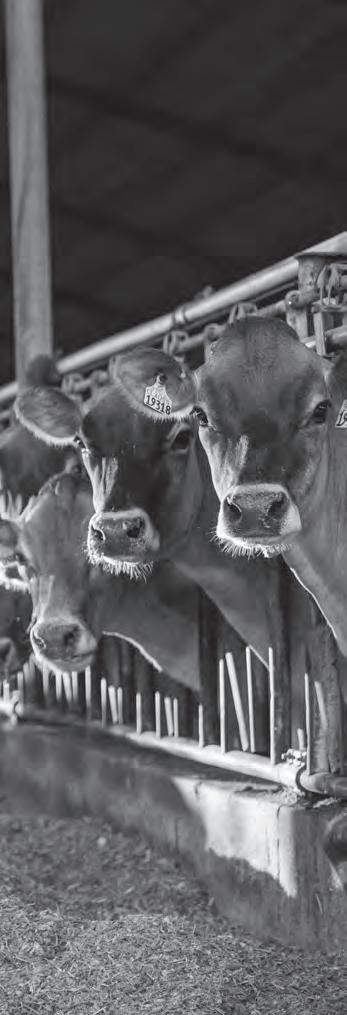
There were no material commitments to lend additional funds to debtors whose loans were classified as impaired at December 31, 2022, and 2021.
Interest income is recognized and cash payments are applied on nonaccrual impaired loans as described in Note 2. The following table presents interest income recognized on impaired loans.
Interest income on nonaccrual and accruing restructured loans that would have been recognized under the original terms of the loans are shown in the following table.
The credit risk rating methodology is a key component of the allowance for credit losses evaluation and is incorporated into loan underwriting standards and internal lending limits. In addition, borrower and commodity concentration lending and leasing limits have been established to manage credit exposure. The regulatory limit to a single borrower or lessee is 15% of the Association’s lending and leasing limit base but the Board of Directors has established more restrictive lending limits. This limit applies to Associations with long-term and short- and intermediate-term lending authorities, and to the Banks’ (other than CoBank) loan participations.
Effective January 1, 2023, the Association adopted the CECL accounting guidance as described in Note 2. A summary of changes in the allowance for credit losses by portfolio segment are as follows:
The ACL increased $562 thousand to $22.3 million at December 31, 2023, as compared to $21.7 million at January 1, 2023. This is largely due to an increase in volume due to merger, as well as migration of PD/LGD ratings, offset by an increase in net charge-offs, resulting in increased reserves.
The Association’s CECL framework is significantly shaped by the internally assigned risk rating of each loan. By integrating the risk profile for each individual credit within the Association’s portfolio, along with the key MEV’s listed below, the Association’s CECL framework provides an estimate of expected losses. This estimate is grounded in both the characteristics of each individual loan and broader economic factors. The below table provides the forecast variables for the first three years of the 10-year forecast period for the two most influential MEV’s for the Association’s five largest industry segments, which represent 66% of the portfolio at December 31, 2023.
A summary of changes in the allowance for loan losses and period-end recorded investment in loans, prior to the adoption of CECL, is as follows:



The Association maintains a separate reserve for unfunded commitments, which is included in liabilities on the Consolidated Statements of Condition. The related provision for the reserve for unfunded commitments is included as part of the provision for credit losses on the Consolidated Statements of Comprehensive Income, along with the provision for loan losses.
A summary of the changes in the reserve for unfunded lending commitments is shown in the following table:
Year Ended December 31 2022 2021
Balance at the beginning of the year
$4,192 $4,482
(Reversal of)/provision for unfunded lending commitments (292) (290)
Balance at end of the year
$3,900 $4,192
To mitigate the risk of loan losses, the Association may enter into Long-Term Standby Commitment to Purchase agreements with Federal Agricultural Mortgage Corporation (Farmer Mac). The agreements, which are effectively credit guarantees that will remain in place until the loans are paid in full, give the Association the right to sell the loans identified in the agreements to Farmer Mac in the event a delinquency of four months occurs, subject to certain conditions. The balance of the loans under the Long-Term Standby Commitment to Purchase agreements was $273.9 million, $124.8 million, and $104.7 million at December 31, 2023, 2022, and 2021, respectively. Fees paid to Farmer Mac for such commitments totaled $765 thousand, $567 thousand, and $371 thousand for the years ended December 31, 2023, 2022, and 2021, respectively. These amounts are classified as interest expense in the Consolidated Statements of Comprehensive Income. Farmer Mac has not purchased any loans under this agreement.
At December 31, 2023, the Association’s investment in CoBank is in the form of Class A stock with a par value of $100 per share. The Association is required to own stock in CoBank to capitalize its direct loan balance and participation loans sold to CoBank. The current requirement for capitalizing its direct loan from CoBank is 3.0% of the Association’s prior one-year average direct loan balance. The 2023 requirement for capitalizing patronage-based participation loans sold to CoBank is 7.0% of the Association’s prior 10-year average balance of such participations sold to CoBank. Under the current CoBank capital plan applicable to such participations sold, patronage from CoBank related to these participations sold is paid 75.0% cash and 25.0% Class A stock. The capital plan is evaluated annually by CoBank’s Board of Directors and management and is subject to change.
CoBank may require the holders of its equities to subscribe for such additional capital as may be needed to meet its capital requirements or its joint and several liability under the Act and regulations. In making such a capital call, CoBank shall consider the financial condition of each such holder and such other considerations, as it deems appropriate.
The Association owned approximately 13.5% of the outstanding common stock of CoBank at December 31, 2023. CoBank retired $21.2 million of the Association’s stock investment on March 15, 2022, due to changes in its capital requirements.
Premises and equipment consist of the following:
Future minimum lease payments under non-cancellable leases as of December 31, 2023, were as follows:
Right-of-use assets, net of accumulated amortization, amounted to $7.3 million at December 31, 2023, $5.9 million at December 31, 2022, and $4.4 million at December 31, 2021. These amounts are included with premises and equipment, net on the Consolidated Statements of Condition.
Gains and losses on other property owned, as reflected in other gains/losses, net on the Consolidated Statements of Income, consisted of the following:
The Association’s indebtedness to CoBank represents borrowings by the Association to fund its loan portfolio. This indebtedness is collateralized by a pledge of substantially all of the Association’s assets to CoBank and is governed by a General Financing Agreement (GFA). The GFA is subject to renewal periodically in accordance with normal business practices and requires the Association to comply with certain covenants. The GFA matures on May 31, 2028. Management expects renewal of the GFA at that time. The Association’s debt is primarily block-funded through a direct note with CoBank. The weighted average interest rate is determined based on the terms and conditions of the Association’s borrowing. The weighted average interest rate was 4.29% at December 31, 2023, compared with 3.27% at December 31, 2022, and 0.65% at December 31, 2021.
Through the note payable, the Association was liable for the following (excluding the FMV adjustment for merger of $98.7 million):
The maturities of debt within the note payable to CoBank as of December 31, 2023, are as follows:
Fixed rate debt typically has original maturities ranging from one to 30 years, and at December 31, 2023, included callable debt of $2.4 billion, with a range of call dates between January 2024 and August 2028. Floating rate notes generally have maturities ranging from one year to five years. Discount notes have maturities from one day to 365 days. The daily revolving line of credit is renewed annually and is priced at the 30-day discount note rate.
Under the Farm Credit Act, the Association is obligated to borrow from CoBank, unless CoBank gives approval to borrow elsewhere.
In June 2021, the Association issued subordinated debt with an overall principal balance of $200.0 million, due in 2036, which may be redeemed all or in part at the option of the Association on any interest payment date on or after June 2031. The subordinated debt bears a fixed interest rate of 3.375% per annum, payable semi-annually until June 15, 2031, at which point the rate changes to a floating rate equal to the benchmark rate, expected to be three-month term SOFR, plus a spread of 212 basis points through maturity date or the date of earlier redemption. The subordinated debt is subordinate to all other creditor debt, including general creditors, and senior to all classes of stock. The subordinated debt is not considered System debt and is not an obligation of, nor guaranteed by any System entity. Further, payments on the subordinated debt are not insured by the FCSIC. The subordinated debt is presented net of unamortized issuance costs of approximately $2.1 million on the Consolidated Statements of Condition.
A description of the Association’s capitalization requirements, capital protection mechanisms, regulatory capitalization requirements and restrictions, and equities is provided in the following.
In accordance with the Farm Credit Act and the Association’s capitalization bylaws, each borrower is required to invest in common stock (for agricultural loans) or participation certificates (for rural home and farm-related business loans) in the Association as a condition of borrowing. In accordance with the Association’s capitalization bylaws, the required investment is currently the lesser of $1,000 or 2.0% of the total borrower’s commitment.
The borrower acquires ownership of the common stock or participation certificates at the time the loan is made, but usually does not make a cash investment. The aggregate par value is added to the principal amount of the related loan obligation. The Association retains a first lien on the stock or participation certificates owned by borrowers. At the discretion of the Board of Directors, retirement of such equities will generally be at the lower of par or book value, and repayment of a loan does not automatically result in retirement of the corresponding stock or participation certificates.
b. additional paid-in capital
Additional paid-in capital represents the excess value received over the par value of capital stock and participation certificates issued in connection with mergers and acquisitions. Additional paid-in capital also includes a reduction for capital stock issuance costs incurred.
c. regulatory capitalization requirements and restrictions
The Farm Credit Administration sets minimum regulatory capital requirements for banks and associations.
The following table presents the regulatory capital ratio requirements and ratios at December 31:
1. Equities subject to a minimum redemption or revolvement period of 7 or more years
2. Capped at 1.25% of risk-weighted assets and inclusive of the reserve for unfunded commitments
3. Equities subject to a minimum redemption or revolvement period of 5 or more years, but less than 7 years
4. Equities subject to a minimum redemption or revolvement period of 5 or more years
If the capital ratios fall below the total requirements, including the buffer amounts, capital distributions (equity redemptions, dividends, and cash patronage) and discretionary senior executive bonuses are restricted or prohibited without prior FCA approval.
d. description of equities
Class A Common Stock: (nonvoting, at-risk, no shares outstanding, $5 par value) Class A common stock may be issued as a patronage distribution or in exchange for a like number of shares of Class C common stock when the holder has fully retired their loan or loans with the Association and has not had a borrowing relationship with the Association for two years. Class A common stock may be converted to Class C common stock if the holder becomes a borrower eligible to own Class C common stock, and to Class F participation certificates if the holder becomes a borrower eligible to own Class F participation certificates.
Class C Common Stock: (voting, at-risk, 2,287,870 shares outstanding, $5 par value) Each owner of Class C common stock is entitled to a single vote. Other classes of borrower equities do not provide voting rights to their owners. Voting stock may not be transferred to another person unless such person is eligible to hold voting stock.
Class D Common Stock: (nonvoting, at-risk, no shares outstanding, $1,000 par value) Class D common stock may be issued to CoBank or to any person through direct sale.
Class F Participation Certificates: (nonvoting, at-risk, 53,565 shares outstanding, $5 par value) Class F participation certificates may be issued or transferred to rural residents, persons furnishing farm-related services, or to other persons eligible to borrow for the purpose of qualifying for services offered by the Association who are not eligible to hold Class C common stock.
Class H Preferred Stock: (limited voting, at-risk, no shares outstanding, $1 par value) Class H preferred stock may be issued to, and may be acquired by, members and equity holders who, at the time of such issuance or acquisition, hold any class of common stock or participation certificates. Class H preferred stock is transferable only to another holder of Class H preferred stock, and then only after the transferor provides written notice to the Association in a form prescribed by the Association’s Board. The holders of H stock are limited to voting on matters that would affect any preference accorded to the H stock and any amendments that would authorize a new class of preferred stock. Each holder of H stock is entitled to receive dividends in an amount equal to a specified percentage (dividend rate) as declared by the Board of Directors. The dividend rate is a per annum rate that may change monthly at the discretion of the Board but is limited to 8.0% per annum. Dividends accrue daily and will accumulate until declared and paid in the form of additional shares of H stock. H stock is redeemable at par plus cumulative unpaid dividends. Retirement of the stock is at the discretion of the Board. Effective March 31, 2021, the Board approved the redemption and retirement of all outstanding shares of H Stock.
Series A Non-Cumulative Perpetual Preferred Stock: (limited voting, at-risk, 300,000 shares outstanding, $1,000 par value) The issuance carries an annual dividend rate of 5.25% payable quarterly beginning September 15, 2021, until the First Reset Date of June 15, 2026, thereafter, the amount equal to the sum of the Five-Year Treasury Rate as of the most recent Reset Dividend Determination Date plus 4.50%. The issuance will be callable June 15, 2026, and quarterly thereafter. Issuance costs of approximately $6.5 million are included in additional paid-in capital on the Consolidated Statements of Condition.
The Association has the authority to issue other classes of stock, no shares of which are outstanding. The voting rights, duties, and liabilities of such classes of stock are similar to those discussed above. Separately from Class H preferred stock, the Association is authorized to issue other preferred stock with an aggregate par value of up to $900 million outstanding at any one time.
The Series A preferred stock is junior to any subordinated debt, existing and future debt obligations, and to any series of preferred stock the Association may issue in the future with priority rights. Series A preferred stock is senior to outstanding common classes of equity, Class F participation certificates, and patronage equities. The Series A preferred stock has a preference as to dividends and on liquidation or dissolution over all other classes of equities. After the retirement
of stock, any remaining assets will be distributed to holders of allocated surplus as evidenced by nonqualified written notices of allocation. Any assets remaining after such distribution will be shared pro rata on a patronage basis by all common stock and certificate holders of record immediately before the liquidation distribution.
The Association’s bylaws provide for the payment of patronage distributions. All patronage distributions to a borrower shall be on a proportionate patronage basis as may be approved by the Association’s Board of Directors, consistent with the requirement of Subchapter T of the Internal Revenue Code.
The Association’s Board of Directors adopted a resolution establishing the distribution of 2023 patronage-sourced net earnings. The resolution established the cash patronage in the amount of 1.0% of the Association’s borrowers’ average daily loan balances and 0.85% on purchased participations. Cash patronage of $213.7 million will be distributed to qualified patrons in 2024. This amount was recognized as a liability on the Association’s Consolidated Statements of Condition at December 31, 2023.
In December 2023, the Association’s Board of Directors adopted an Obligating Resolution to distribute 2024 patronage-sourced earnings to patrons of the Association, contingent upon the Association maintaining certain capital criteria.
Cash patronage of $185.7 million and $162.9 million was declared on the Association’s patronage-sourced earnings for 2022 and 2021, respectively. These amounts were recognized as a liability on the Association’s balance sheet at December 31 in the year they were declared and paid in the first quarter of the following year. Cash patronage represented 1.0% of the Association’s borrowers’ average daily loan balances and 0.85% on purchased participations for both 2022 and 2021.
f. allocated and unallocated retained surplus
Net income can be distributed annually in the form of cash or allocated retained earnings; it may also be retained as unallocated retained earnings. Thus, unallocated retained earnings include patronage-sourced net income that is retained each year. The Association maintains a separate allocated surplus account consisting of undistributed patronage earnings allocated to borrowers. The Board of Directors considers this allocated surplus to be permanently invested in the association. As such, there is no current plan to revolve or redeem these amounts. No express or implied right to have such capital retired or revolved at any time is granted. The Board of Directors must approve any use of unallocated retained earnings.
g. accumulated other comprehensive income/(loss)
The Association reports accumulated other comprehensive income/(loss) in its Consolidated Statements of Condition and Consolidated Statements of Changes in Shareholders’ Equity. As more fully described in Note 12, other comprehensive income/(loss) results from the recognition of the Restoration Plan’s net unamortized gains and (losses) and prior service costs or credits of $231 thousand, $2.3 million, and $1.5 million in 2023, 2022, and 2021, respectively. There were no other items affecting comprehensive income or loss.
Patronage income recognized from Farm Credit institutions to the Association is presented in the following table:
Patronage
from CoBank is received in cash and stock. All other patronage is received in cash.
is as follows:
The following table quantifies the differences between the provision for income taxes and the
of income tax determined by applying the applicable U.S. statutory federal income tax rate to pretax income of the Association.
The calculation of deferred tax assets and liabilities involves various management estimates and assumptions as to future taxable earnings, including the amount of non-patronage income and patronage income retained. The expected future tax rates are based on enacted tax laws.
The Association had a valuation allowance of $3.4 million in 2023, $4.2 million in 2022, and $2.8 million in 2021. The Association will continue to evaluate the likely realization of deferred tax assets and adjust the valuation allowance accordingly.
The Association had no uncertain tax positions to be recognized as of December 31, 2023, 2022, or 2021.
The Association recognizes interest and penalties related to unrecognized tax benefits as an adjustment to income tax expense. There were no interest or penalties recognized in 2023, 2022, or 2021. The tax years that remain open for federal and major state income tax jurisdictions are 2020 and forward.
Certain employees participate in the Ninth and Eleventh Retirement Plans, which are multi-employer defined benefit retirement plans. The Department of Labor has determined the plans to be governmental plans; therefore, the plans are not subject to the provisions of the Employee Retirement Income Security Act of 1974, as amended (ERISA). As the plans are not subject to ERISA, the plans’ benefits are not insured by the Pension Benefit Guaranty Corporation. Accordingly, the amount of accumulated benefits that participants would receive in the event of the plans’ termination is contingent on the sufficiency of the plans’ net assets to provide benefits at that time. The plans are noncontributory and cover eligible employees.
The assets, liabilities, and costs of the plans are not segregated by participating entities. As such, plan assets are available for any of the participating employers’ retirees at any point in time. Additionally, if a participating employer stops contributing to the plan, the unfunded obligations of the plan may be borne by the remaining participating employers. Further, if the Association chooses to stop participating in the plan, it may be required to pay an amount based on the underfunded status of the plan, referred to as a withdrawal liability. Because of the multi-employer nature of the plan, any individual employer is not able to unilaterally change the provisions of the plan. If an employee moves to another employer within the same plan, the employee benefits under the plan transfer. Benefits are based on salary and years of service. There is no collective bargaining agreement in place as part of these plans.
The defined benefit pension plans reflect an unfunded liability totaling $16.2 million for the Ninth Plan and $0.4 million for the Eleventh Plan at December 31, 2023. The pension benefits funding status reflects the net of the fair value of the plan assets and the projected benefit obligation at the date of these consolidated financial statements. The projected benefit obligation is the actuarial present value of all benefits attributed by the pension benefit formula to employee service rendered prior to the measurement date, based on assumed future compensation levels.
The projected benefit obligation and fair value of the multi-employer plan assets at December 31 are as follows:
Costs and contributions for the multi-employer plans at December 31 are as follows:
December 31 (in millions)
Total plan expenses for all participating employers:
Ninth Plan
Eleventh Plan
The Association’s allocated share of plan expenses included in salaries and benefits:
Ninth Plan
Eleventh Plan
Total plan contributions for all participating employers:
Ninth Plan
Eleventh Plan
The Association’s allocated share of plan contributions:
Ninth Plan
Eleventh Plan
2023 2022 2021
$11.6 $8.1 $13.7
$4.7 $(1.5) $(1.3)
The amount of the pension benefits funding status is subject to many variables, including performance of plan assets and interest rate levels. Therefore, changes in assumptions could significantly affect these estimates.
Costs are determined for each individual employer based on costs directly related to their current employees as well as an allocation of the remaining costs based proportionately on the estimated projected liability of the employer under this plan. The Association recognizes its proportional share of expense and contributes a proportional share of funding.
$3.3 $2.2 $3.8
$1.9 $(0.5) $(0.5)
$4.0 $30.0 $30.0
$1.5 $23.0 $23.0
$7.3 $8.7 $8.7
$0.6 $9.1 $9.0
While the plans are governmental plans and are not subject to minimum funding requirements, the employers contribute amounts necessary on an actuarial basis to provide the plans with sufficient assets to meet the benefits to be paid to participants. The amount of the total employer contributions expected to be paid into the Pension Plans during 2024 is $3.3 million. The Association’s allocated share of these pension contributions is expected to be $728 thousand. The amount ultimately to be contributed and the amount ultimately recognized as expense, as well as the timing of those contributions and expenses, are subject to many variables, including performance of plan assets and interest rate levels. These variables could result in actual contributions and expenses being greater than or less than anticipated.
Postretirement benefits other than pensions are provided through the Farm Credit Foundations Retiree Medical Plan to eligible current and retired employees of the Association. Benefits provided are determined on a graduated scale based on years of service. The anticipated costs of these benefits were accrued during the period of the employee’s active service. Postretirement benefits (primarily health care benefits) included in salaries and employee benefits were $3 thousand for 2023, $42 thousand for 2022, and $41 thousand for 2021. These expenses are equal to the Association’s cash contributions for each year.
The Association participates in a nonqualified defined benefit Restoration Plan that is unfunded. The plan provides retirement benefits above the Internal Revenue Code compensation limit to certain highly compensated eligible employees. Benefits payable under the Restoration Plan are offset by the benefits payable from the Pension Plans. Restoration Plan expenses included in salaries and employee benefits were $8.0 million for 2023, $5.3 million for 2022, and $5.6 million for 2021. The Restoration Plan experienced a current year net actuarial loss due to increases in the discount rates utilized and other factors such as employee salaries and retirement rates.
The funded status and the amounts recognized in other liabilities in the Consolidated Statements of Condition for the Association’s Restoration Plan are as follows:
The net periodic pension expense for the Restoration Plan included in salaries and benefits in the Consolidated Statements of Income is composed of the following at December 31:
Amounts
in other
the Consolidated Statements of Condition consist of:
The following table represents the amounts included in accumulated other comprehensive income (AOCI)/loss for the Restoration Plan: December
Changes in benefit obligation recognized in accumulated other comprehensive income are included in the following table.
Information for pension plans with an accumulated benefit obligation in excess of plan assets for the Restoration Plan at December 31 was as follows:
Weighted average assumptions used to determine benefit obligations at December 31 were as follows:
Information for pension plans with a projected benefit obligation in excess of plan assets for the Restoration Plan at December 31 was as follows:
Weighted average assumptions used to determine net periodic benefit cost for the years ended December 31 were as follows:
The Association estimates it will contribute $1.9 million to the Restoration Plan in 2024.
The following benefit payments, which reflect expected future service, as appropriate, are expected to be paid:
The Association participates in the Farm Credit Foundations Defined Contribution/401(k)
Plan. The plan has two components. Employees who do not participate in the Ninth Plan may receive benefits through the employer contribution portion of the Defined Contribution Plan. The Association provides a contribution based on a defined percentage of the employee’s salary. Employees may also participate in the employee contribution portion of the Defined Contribution Plan governed by Section 401(k) of the Internal Revenue Code. The Association matches a certain percentage of employee contributions to the 401(k). Employer contributions to the Defined Contribution Plan included in salaries and employee benefits were $12.8 million in 2023, $10.2 million in 2022, and $9.0 million in 2021.
In the ordinary course of business, the Association enters into loan transactions with directors of the Association, their immediate families, and other organizations with which such persons may be associated. These loans are subject to special approval requirements contained in the FCA regulations and are made on the same terms, including interest rates, amortization schedules, and collateral, as those prevailing at the time for comparable transactions with unrelated borrowers.
The Association has a policy that loans to directors must be maintained at an acceptable or other assets especially mentioned (OAEM) credit classification. If the loan becomes adversely classified, the director’s service is terminated at the end of the 15th calendar day thereafter, unless grounds for an exception exist and a written request for an exception is granted.
Loan information to related parties for the years ended December 31 is shown in the following table:
In the opinion of management, none of these loans outstanding at December 31, 2023, involved more than a normal risk of collectability.
The Association also has business relationships with certain other System entities. The Association paid $702 thousand in 2023, $584 thousand in 2022, and $516 thousand in 2021 to Farm Credit Foundations for human resource services. As of December 31, 2023, the Association’s investment in AgDirect was $29.7 million. Income recorded related to AgDirect was $3.6 million in 2023, $3.1 million in 2022, and $2.1 million in 2021.
There are no regulatory enforcement actions in effect for the Association.
The Association has various commitments outstanding and contingent liabilities. Regarding contingent liabilities, there are no actions pending against the Association in which claims for monetary damages are asserted.
The Association may participate in financial instruments with off-balance sheet risk to satisfy the financing needs of its borrowers and to manage their exposure to interest rate risk. These financial instruments include commitments to extend credit. The instruments involve, to varying degrees, elements of credit risk in excess of the amount recognized in the consolidated financial statements. Commitments to extend credit are agreements to lend to a borrower as long as there is not a violation of any condition established in the contract. Commitments generally have fixed expiration dates or other termination clauses and may require payment of a fee by the borrower. At December 31, 2023, $6.1 billion of commitments to extend credit were outstanding.
Since many of these commitments and letters of credit are expected to expire without being drawn upon, the total commitments do not necessarily represent future cash requirements. However, these credit-related financial instruments have off-balance sheet credit risk because their amounts are not reflected on the Consolidated Statements of Condition until funded or drawn upon. The credit risk associated with issuing commitments is substantially the same as that involved in extending loans to borrowers, and management applies the same credit policies to these commitments. Upon fully funding a commitment, the credit risk amounts are equal to the contract amounts, assuming that borrowers fail completely to meet their obligations and the collateral or other security is of no value. The amount of collateral obtained, if deemed necessary upon extension of credit, is based on management’s credit evaluation of the borrower.
The Association also participates in standby letters of credit to satisfy the financing needs of its borrowers. These letters of credit are irrevocable agreements to guarantee payments of specified financial obligations. At December 31, 2023, $71.7 million of standby letters of credit were outstanding with a nominal fair value. Outstanding standby letters of credit have expiration dates ranging from 2023 to 2041. The maximum potential amount of future payments the Association is required to make under the guarantees is $71.7 million.
The Association maintains a reserve for unfunded commitments, which reflects management’s best estimate of losses inherent in lending commitments made to customers but not yet disbursed on. The reserve totaled $1.0 million, $3.9 million, and $4.2 million at December 31, 2023, 2022, and 2021, respectively.
Accounting guidance defines fair value as the exchange price that would be received for an asset or paid to transfer a liability in an orderly transaction between market participants in the principal or most advantageous market for the asset or liability. The fair value measurement is not an indication of liquidity. See Note 2 for additional information.
Quoted market prices are generally not available for certain financial instruments, as described in the following. Accordingly, fair values are based on judgments regarding anticipated cash flows, future expected loss experience, current economic conditions, risk characteristics of various financial instruments, and other factors. These estimates involve uncertainties and matters of judgment, and therefore cannot be determined with precision. Changes in assumptions could significantly affect the estimates.
Assets measured at fair value on a non-recurring basis at December 31 for each of the fair value hierarchy values are summarized in the following table. During the years presented, there were no assets measured at fair value on a non-recurring basis categorized as Level 1 or Level 2.
During the three years presented, the Association recorded no transfers in or out of Levels 1, 2, or 3. The Association has no liabilities measured at fair value on a recurring basis for the periods presented.
The following tables present the carrying amounts, estimated fair values, and the level within the fair value hierarchy of the Association’s financial instruments not carried at fair value. Receivables and payables due in one year or less, equity securities without readily determinable fair values, and other financial assets or liabilities with no defined or contractual maturities are excluded. There were no significant changes in the valuation techniques during the period ending December 31, 2023.
December 31, 2023
With regard to impaired loans and other property owned, it is not practicable to provide specific information on inputs as each collateral property is unique. The Association utilizes appraisals to value these loans and other property owned and takes into account unobservable inputs such as income and expense, comparable sales, replacement cost, and comparability adjustments.
December 31, 2022
at amortized cost):
As more fully discussed in Note 2, accounting guidance establishes a fair value hierarchy, which requires an entity to maximize the use of observable inputs and minimize the use of unobservable inputs when measuring fair value. Fair values of financial instruments represent the estimated amount to be received to sell an asset or paid to transfer or extinguish a liability in active markets among willing participants at the reporting date. Due to the uncertainty of expected cash flows resulting from financial instruments, the use of different assumptions and valuation methodologies could significantly affect the estimated fair value amounts. Accordingly, certain of the estimated fair values may not be indicative of the amounts for which the financial instruments could be exchanged in a current or future market transaction. The following presents a brief summary of the valuation techniques used by the Association for assets and liabilities subject to fair value measurement:
A. Loans: Fair value is estimated by discounting the expected future principal and interest cash flows to present value. The discount rate is a spread over an applicable yield curve, based on interest rates at which similar loans would be made to borrowers with similar credit risk regarding recent loan origination rates and management’s estimates of credit risk. Management has no basis to determine whether the estimated fair values presented would be indicative of the assumptions and adjustments that a purchaser of the Association’s loans would seek in an actual sale.
Fair value of loans in nonaccrual status is estimated as described above, but cash flows are principal only, meaning no interest cash flows occur, and the maturity date is adjusted to assume resolution occurs within two to three years.
For certain loans evaluated for impairment under FASB impairment guidance, the fair value is based on the underlying real estate collateral as the loans are collateral dependent. The fair value measurement process uses appraisals and other market-based information, but in many cases, it also requires significant input based on management’s knowledge of and judgment about current market conditions, specific issues relating to the collateral, and other matters. As a result, these fair value measurements fall within Level 3 of the hierarchy. When the value of the real estate, less estimated costs to sell, is less than the principal balance of the loan, a specific reserve is established.
B. Assets Held in Nonqualified Benefits Trusts: Assets held in trust funds related to deferred compensation are classified within Level 1. The trust funds include investments that are actively traded and have quoted net asset values that are observable in the marketplace. Assets held in nonqualified benefits trusts are included in other assets in the Consolidated Statements of Condition.
C. Other Property Owned: Other property owned is generally classified as Level 3 of the fair value hierarchy. The process for measuring the fair value of other property owned involves the use of appraisals or other market-based information. As a result, these fair value measurements fall within Level 3 of the hierarchy. Costs to sell represent transaction costs and are not included as a component of the asset’s fair value.
D. Cash: Fair value of cash approximates amortized cost.
E. Notes Payable to CoBank: Fair value is estimated by discounting the future expected principal and interest cash flows to present value. The discount rate is a spread over an applicable yield curve based on current market rates of similar securities with similar maturities and characteristics. The current market rates used were obtained from the Federal Farm Credit Banks Funding Corporation.
F. Subordinated Debt: Fair value is estimated by discounting the future expected principal and interest cash flows to present value. This discount rate is a spread over an applicable yield curve based on expected market rates of similar securities. The expected market rates are derived from current market interest rates and the change in applicable corporate BBB finance spread obtained from an independent third party since the trade date. Management has no basis to determine whether the estimated fair value presented would be indicative of the assumptions and adjustments that a purchaser of the subordinated debt would seek in an actual sale.
The Association has evaluated subsequent events through March 4, 2024, which is the date the financial statements were available to be issued. On February 28, 2024, the Association entered into a lease-option agreement with a third party on its Santa Rosa office building. The lease term must commence no later than August 28, 2024 (but may commence sooner if mutually agreeable to the parties), and has a term of seven years, with rent based on a per-square-foot calculation, increased annually. Additionally, during the first three years of the lease term, the tenant has an option to purchase the property for $56.1 million.
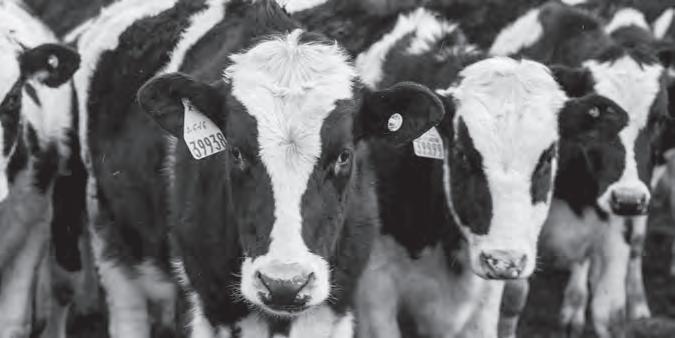

The Association will post the annual report and quarterly reports to shareholders on the Association’s website, www.AgLoan.com, approximately 40 days after the end of each calendar quarter for the quarterly reports and 75 days after year-end for the annual report. Copies of these reports may be obtained free of charge by contacting American AgCredit at P.O. Box 1120, Santa Rosa, CA 95402, or by calling (800) 800-4865.
American AgCredit is headquartered in Santa Rosa, California. The Association owns and leases various facilities throughout the territory, which are described in this annual report.
Other than ordinary routine litigation incidental to the business, there are no material legal proceedings pending to which the Association is a party, of which any of its property is the subject, or that involve claims that the Association may be required to satisfy. There are no enforcement actions in effect against the Association.
There has been no change in independent external auditors and no material disagreements on any matters of accounting principles or financial statement disclosures during the period.
As a customer-owner of this institution, your privacy and the security of your personal information are vital to our continued ability to serve your ongoing credit needs. FCA regulations require that borrower information be held in confidence by Farm Credit institutions, their directors, officers, and employees. FCA regulations specifically restrict Farm Credit institution directors and employees from disclosing information not normally contained in published reports or press releases about the institution or its borrowers or members. These regulations also provide Farm Credit institutions clear guidelines for protecting their borrowers’ nonpublic information.

board oversight
The Board of Directors (“Board”) is comprised of 24 seats, 23 of which are currently filled by 19 stockholder elected directors and four directors appointed by the elected directors. One seat is unoccupied following the unexpected passing of a seated director in May 2023. The Board represents the interests of stockholders and is organized into the following committees to carry out Board responsibilities:
audit committee
The Audit Committee assists the Board with fulfilling its fiduciary responsibilities. The Committee monitors the Association’s financial reporting process and systems of internal controls, and the integrity of the Association’s financial statements. The Audit Committee oversees the adequacy of the Association’s internal control systems, the scope of the internal audit program, the independence of external auditors, and the process for monitoring compliance with Standards of Conduct.
human resources and compensation committee
The Human Resources and Compensation Committee assists the Board with fulfilling its role to oversee compensation programs and provide comprehensive review and disclosures for those programs. The Committee oversees compensation practices to ensure alignment with long-term performance and provides direction and recommendations for compensation, benefits, and human resource performance management programs.
governance committee
The Governance Committee assists the Board with its oversight and evaluation of matters of corporate governance and structure, including the director nomination and election process, Board composition and qualifications, skills and other expertise desired for directors, as well as the evaluation and development of Board performance and processes, director orientation and continuing education, and the independence of directors.
strategy and risk committee
The Strategy and Risk Committee assists the Board with fulfilling its oversight responsibilities for strategic planning and the enterprise-wide risk management framework of the Association. The Committee collaborates with management on the Association’s overall strategy, business objectives, and strategic initiatives and makes recommendations to the Board related to the Association’s mission, vision, and risk appetite, reviews ongoing risk assessments of current and emerging risks, and monitors the risk oversight activities of the chartered Board committees.
director independence
All directors must exercise sound judgment in deciding matters in the Association’s interest. All directors are independent from the perspective that no management or staff serves as a Board member. However, as a financial services cooperative, the Association is required by the Farm Credit Act and FCA regulations to have elected directors that have a loan relationship with the Association.
The elected directors, as borrowers, have a vested interest in ensuring the Association remains strong and successful. However, the borrowing relationship could be viewed as having the potential to compromise the independence of an elected director. For this reason, the Board has established independence criteria to ensure that a loan relationship does not compromise the independence of the Board. Annually, in conjunction with the independence analysis and reporting on loans to directors, each director provides financial information and any other documentation and/ or assertions needed for the Board to determine the independence of each Board member.


The following lists the Board of Directors as of December 31, 2023, including each director’s business experience during the last five years, as well as current committee assignments.
Term Expires: 2026
Committee(s): Governance
Ms. Agar joined the American AgCredit Board as a result of the merger with Farm Credit of New Mexico, ACA, where she served since 2017. Ms. Agar and her husband operate a commercial cow/ calf operation in Santa Rosa, New Mexico. She also owns and operates Agar Insurance Agency. Together with their sons they are part of a seedstock Simmental operation. Ms. Agar is actively involved in local and state fairs and serves on several community boards including the Guadalupe County Tax Protest Board, the Lodgers Tax Board, the Santa Rosa Rotary Club, and the Powderhorn Cattlewomen, and she is a member of the New Mexico Cattle Growers Association.
Term Expires: 2026
Committee(s): Executive, Strategy and Risk
Mr. Alamo has been a partner in Alamo Dairy and Alamo Farms since 1997. He currently operates a dairy and farming operation, growing corn, winter forage, alfalfa, and almonds. He is the Turlock Irrigation District Director, the California Farm Water Coalition Director, and past president and current member of the Central Counties Dairy Herd Improvement Association. He is also active with Western United Dairies, the Stanislaus County Farm Bureau, and the Turlock Pentecost Association.
Berry Bortz, Director
Term Expires: 2027
Committee(s): Audit
Mr. Bortz farms in partnership with his family in eastern Pratt, southwest Reno, and southern Wichita counties in Kansas, producing corn, wheat, soybeans, alfalfa, cotton, sorghum, and bermuda. The family has a commercial and registered cow herd and feedlot. He is a partner in Next Gineration, Inc. and Central Kansas Cotton Producers, and Vice Chair of Next Gineration, Inc. which gins cotton for producers in south central Kansas.
Term Expires: 2025
Committee(s): Governance
Mr. Chappellet is the President, CEO and Chair of Chappellet Vineyard and Winery, a family-owned and operated winemaking and vineyard operation established in 1967. Mr. Chappellet oversees every aspect of the operation from farming and winemaking to finance, personnel, and sales. He also manages a 2,500-acre ranch adjacent to the vineyard property, which is used as a cattle operation.
Term Expires: 2025
Committee(s): Human Resources and Compensation
Mr. DeGroot joined the American AgCredit Board as a result of the merger with Farm Credit of New Mexico, ACA, where he served since 2020. Mr. DeGroot is the manager/partner of Arroyo Dairy and Roswell Vegetable Farms, Inc., in Roswell, New Mexico, where he and his wife, Melissa, live. In addition to the dairy operation, they raise replacement heifers and farm corn, barley, and pecans.
Term Expires: 2024
Committee(s): Audit
Mr. Doll is a lifelong resident of Kansas, and owns Walnut River Ranch, located in the Flint Hills tallgrass prairie region, which contracts row crop, cattle, and native bluestem hay production. He has extended family ranch and farming operations located in Barton, Finney, and Gray counties in Kansas. He is the President and CEO of Capital Partners Group LLC, a training and development firm. He is also President of Doll Real Estate Services LLC, a land development and management firm. Mr. Doll also serves on the board of Farm Credit Council Services. He holds a BA in Business from Wichita State University’s Barton School of Business and an MBA from Webster University located in St Louis, Missouri.
Term Expires: 2028
Committee(s): Audit
Mr. Drake served on the Farm Credit of New Mexico, ACA Board as an appointed director since 2002. Residing in Clovis, New Mexico, Mr. Drake served as Vice President of Administration with oversight of human resources, finance, capital projects, security, and plant and maintenance at Clovis Community College. He also served as Administrator of Legislative Affairs, lobbying for higher education for 18 years. Mr. Drake has commercial banking experience and was a certified real estate appraiser for 36 years.
James Duffey, Director
Term Expires: 2025
Committee(s): Governance
Mr. Duffey also joined the American AgCredit Board resulting from the merger with Farm Credit of New Mexico, ACA, where he served since 2015. Mr. Duffey and his family reside in Roswell, New Mexico, where they farm, do custom harvesting, and have a sheep production operation. Mr. Duffey serves on several community boards, including the Eastern New Mexico State Fair Board, the New Mexico Wool Growers Association, and the New Mexico Sheep and Goat Council. He is also a member of the New Mexico Farm Bureau and the New Mexico Club Lamb Association.
Term Expires: 2026
Committee(s): Governance
Ms. Dunn partners with her husband in their farming operation in St. John, Kansas, consisting of wheat, corn, alfalfa hay, milo, and cow-calf. She is the President of the Port Authority of Stafford County and Strategic Projects Director for Stafford County Economic Development. Both organizations promote economic and agricultural opportunity as well as population growth throughout Stafford County in Kansas.
Term Expires: 2024
Committee(s): Executive, Human Resources and Compensation
Mr. Ernst grew up on a family farm in Wisconsin. He and his spouse own and operate Ernst Herefords, a registered cow/calf business focused on producing breeding stock for the commercial industry. Prior to that, Mr. Ernst spent 30 years in the food industry for several nationally branded food companies. He served as Senior Director of Livestock Operations for the National Western Stock Show in Denver.
George Fontes, Director
Term Expires: Deceased May 2023
Committee(s): Human Resources and Compensation, Strategy and Risk
Mr. Fontes, an esteemed Board member, passed away unexpectedly on May 26, 2023. He was an extraordinary leader who had a profound impact on American AgCredit. He was a fourth-generation farmer in Salinas, California, whose family operation has included beef cattle, grain hay production, and vegetable farming. He owned and operated Fontes Farms LLC, providing farm management, equipment rental, and repair services. He was president and co-owner of Comgro Incorporated, which previously farmed lettuce, broccoli, and mix lettuce. He was also president and a board member of the Salinas Basin Water Alliance and served on the board of Farm Credit Foundations.
Gary Harshberger, Chair
Term Expires: 2028
Committee(s): Executive
Mr. Harshberger is a farmer with an operation consisting of dryland and irrigated wheat, corn, milo, and soybeans. He operates Harshberger Enterprises, is president of Double H Farms, Inc., and a member of Harshberger Land, LLC, and 3J2C Farms, LLC, which are involved in farm commodity production. He is Chair of the Trustees of Dodge City Community College.
Term Expires: 2025
Committee(s): Executive, Governance
Ms. Jorritsma is a third-generation dairy farmer and key member of Clauss Dairy Farms and Sunwest Jersey Dairy management teams in Hilmar, California. Clauss and Sunwest Jersey Dairy Farms are registered Jersey dairies and farming operations that employ over 50 people. She is a co-owner of Hilmar Cheese Company, Inc., and serves on its board of directors. Ms. Jorritsma was the first female chairperson of the National Dairy Board.
Term Expires: 2024
Committee(s): Human Resources and Compensation
Dr. Knox resides in Fort Collins, Colorado. He is a retired academic, formerly Dean, College of Agricultural Sciences and Vice Provost for University Outreach at Colorado State University. His business experience is in energy, production agriculture, academic administration, and agriculture research.
Janet Konkel, Human Resources and Compensation
Term Expires: 2025
Committee(s): Audit
Ms. Konkel and her husband Mike operate a farm south of Kersey, Colorado, growing alfalfa hay and small grains. She worked for the National Western Stock Show in Denver and served for eight years as the Weld County Fair Coordinator in Greeley, Colorado.
Paul McCaffrey, Appointed Director
Term Expires: 2028
Committee(s): Audit
Mr. McCaffrey serves as the Board’s designated financial expert. He is a Certified Public Accountant, Certified Internal Auditor, Associate in Risk Management, Associate in Reinsurance, and a Chartered Property Casualty Underwriter. Mr. McCaffrey currently serves as the Chief Financial Officer of High Definition Vehicle Insurance.
Kristin McMenomey, Director
Term Expires: 2027
Committee(s): Human Resources and Compensation and Strategy and Risk
Ms. McMenomey resides in Potter Valley, California. She and her husband, John, farm 200 acres of vineyard property in Potter Valley consisting of chardonnay, sauvignon blanc, merlot, pinot noir, and pinot gris. She is an administrator at Adventist Health Ukiah Valley and has over two decades of government experience in purchasing, information technology, and risk management. Ms. McMenomey served 17 years as a board member of the CSAC Excess Insurance Authority board of directors, including as vice president.
Term Expires: 2027
Committee(s): Governance
Mr. Ochs is a member of Plum Creek Farms GP and LLC in Syracuse, Kansas, agricultural entities that produce dryland wheat, sorghum, and corn, and provide custom farming, including harvesting, tillage, planting, and conservation reserve program (CRP) management. Mr. Ochs is the Vice Chair of the Kansas Wheat Commission, the Chair of the Hamilton County Firemen’s Relief Board, and member of the Hamilton County Historical Society.
Term Expires: 2029
Committee(s): Human Resources and Compensation
Ms. Reimer resides on a ranch near Kalvesta, Kansas, and is a fifthgeneration farmer and rancher. Her cattle operation consists of cowcalf, backgrounding, and finishing, complemented by a dryland farm producing wheat, sorghum, and forages.
Term Expires: 2024
Committee(s): Executive, Audit
Mr. Stegman is retired. He previously served as President and CEO of AgVantis. Prior to that, he served in various information technology management positions at Farm Credit Bank of Wichita, Kansas. Mr. Stegman was raised on a family farm in southwestern Kansas.
Term Expires: 2027
Committee(s): Human Resources and Compensation
Mr. Stonebarger serves as chief executive officer for Ghiggeri and Stonebarger Farms, directing the production of sweet corn, green bean, tomato, and cherry operations. He also manages an arm of his family’s business, G&J Marketing, a sales firm that has fostered close relationships with large grocery distribution partners and represents sales for approximately 2,500 acres of fresh market sweet corn throughout the West Coast annually.
Term Expires: 2026
Committee(s): Governance, Strategy and Risk
Mr. Talbott resides in Palisade, Colorado. His business experience is in tree fruit and wine grape production, and he oversees the overall business and financial performance of the family operations. Mr. Talbott is President and CEO of Talbott Farms, Inc., which serves as the General Partner of both Talbott Land & Property LLLP and Talbott’s Mountain Gold LLLP, a grower, packer, processor, and marketer of tree fruits, wine grapes, and fresh ciders. Additionally, he is a shareholder in Talbott & Sons LLC, a producer of hard ciders and wines.
Term Expires: 2028
Committee(s): Audit, Strategy and Risk
Mr. Teixeira is partner-owner of Teixeira and Sons and grows over 9,000 acres of alfalfa, almonds, cantaloupes, honeydew melons, corn, cotton, fresh-market tomatoes, processing tomatoes, parsley, garlic, onions, and wheat. The company operates a tomato transplant greenhouse facility and is part owner in Pacific Ginning LLC, Eagle Valley Ginning LLC, Agritree LLC, and 360 Agri LLC. Pacific Ginning and Valley Ginning are cotton ginning operations and 360 is a custom cotton harvesting company.
Term Expires: 2025
Committee(s): Audit
Mr. Vander Dussen joined the joined the American AgCredit Board following the merger with Farm Credit of New Mexico, where he served since 2017. Mr. Vander Dussen and his family own and operate multiple dairies in Clovis, New Mexico. He also serves on the board of Select Milk Producers.
It is the Association’s policy to reimburse directors for mileage as well as documented business expenses while serving in an official capacity. A copy of the Association’s reimbursement policies is available to shareholders upon request.
For 2023, directors were compensated for their services based on annual retainers as follows:
Chair
Vice Chair
Audit Committee Chair
Human Resources and Compensation Committee Chair
Governance Committee Chair
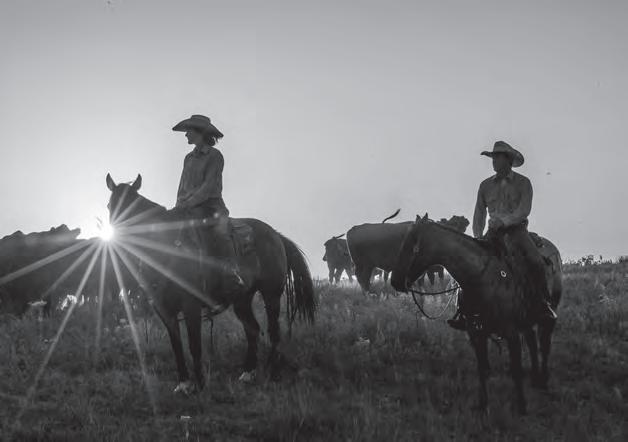
Retainer amounts are adjusted for meeting absences or attendance at meetings in excess of scheduled Board meetings. Directors are also reimbursed for reasonable expenses incurred while serving in an official capacity and are paid a per diem of $500 per calculated travel day. The aggregate amount of compensation and reimbursements for travel, subsistence, and other related expenses for all directors was $2.8 million for 2022, $2.5 million for 2021, and $2.1 million for 2020.


Compensation information for each director who served in 2023 is shown in the following table:
1Service on one Board Committee is included in annual retainer. Additional compensation is paid for service on a second chartered committee.
2Total compensation includes retainers and all per diems paid in 2023.
3Term began October 1, 2023, following the merger with Farm Credit of New Mexico, ACA.
4Deceased May 2023.
5Term began May 1, 2023.
The following lists the senior officers as of December 31, 2023, including each officer’s business experience during the last five years.
Mr. Hudnutt was hired as Chief Executive Officer on October 19, 2020. He was previously Executive Vice President – Head of Rural Banking for Rabobank, North America. Mr. Hudnutt has over 21 years of agricultural banking experience and has served in a variety of leadership roles, including operations, business development, underwriting, and risk management.
Greg
Mr. Somerhalder has served as Chief Operating Officer since March 1, 2014. He previously served as Chief Corporate Strategist. He has over 41 years of experience with Farm Credit in many areas of banking, including lending, credit, risk, and strategy. Mr. Somerhalder serves as the Chair of the board of Farm Credit System Associations Captive Insurance Company. He also serves on the board of the Laham Family Foundation.
Ms. Angress was promoted to General Counsel in September 2013. She previously served as Deputy General Counsel from 2012. She has over 30 years of legal experience, including years of civil and bankruptcy litigation and general legal representation for many Bay Area financial institutions.
Mr. Banks has served as Chief Credit Officer since January 1, 2017. He previously served as Senior Vice President for American AgCredit, leading the Association’s Credit Management Department. He has over 29 years of service with the Farm Credit System, primarily focused in various lending and credit functions.
Mr. Hollis joined American AgCredit as Chief People Experience Officer on March 1, 2021. He brings over 27 years of executive leadership in the agricultural industry. Most recently, Mr. Hollis served as a member of the executive team for The Maschhoffs, the fifth largest pork production company in the U.S., leading the people strategies, environmental and sustainability initiatives, and generational transfer programs. Prior to that, Mr. Hollis led Rabobank’s people strategies.
Ms. Hudson joined American AgCredit as the Chief Audit Executive on July 12, 2021. She has worked in accounting, internal and external audit, and risk roles for more than 29 years. Most recently, Ms. Hudson was the North America Head of Audit with Rabobank, and before that, Senior Vice President, Head of Audit and Credit Review, also at Rabobank.
Ms. Kolell joined American AgCredit on March 22, 2021, as Chief Brand Officer, leading the communications, legislative affairs, marketing, and storytelling functions that connect American AgCredit and our employees with our customers and communities. Prior to joining AAC, she led marketing, communications, and sustainability in senior vice president positions at Rabo AgriFinance.
Mr. O’Day assumed the role of Chief Lending Officer in September 2021. He previously served as Chief Banking Officer for corporate banking. Agribusiness lending and Capital Markets operate under the Corporate Banking umbrella. Prior to assuming the position of Chief Banking Officer, Mr. O’Day served as Senior Vice President-Capital Markets. For the past 31 years, his focus has been in the areas of corporate finance and loan syndications, and he has a total of 44 years of Farm Credit System service.
Ms. Olufs has served as the Chief Customer Officer since February 2020. She leads the centers of excellence for customer experience, business transformation, and product development, uniting the Association around a common vision and strategy for customer experience from the customer’s perspective. Prior to her current position she served as the Chief Innovation Officer. She has over 37 years of Farm Credit experience.
Mr. Person was named Chief Risk Officer on April 1, 2021. He previously served as the Chief Audit Executive and Director of Operational Audit and Risk. Prior to joining the Association, Mr. Person served as the Association’s Engagement Manager for its Risk Consulting Services and worked with several other Farm Credit System Institutions through Crowe, a national public accounting firm. Mr. Person has over 22 years of experience within the diversified financial services industry.
Mr. Rose was named the Chief Strategy and Financial Officer on January 9, 2023. He previously served as the Association’s Chief Strategy Officer and Chief Risk Officer. He has held risk and financial management roles for more than 35 years in the Farm Credit System. He also serves as a member of the Farm Credit Foundations Trust Committee.
Mr. Scherler was named Chief Alliance Officer on September 1, 2021. He joined American AgCredit as Chief Lending Officer in October 2017. He previously served as President – Strategic Relationship Division for CoBank; as Interim President and CEO of Farm Credit of Southwest Kansas from October 2015 to March 2016; and a number of other relationship and leadership roles at CoBank. Mr. Scherler has more than 27 years of banking experience, of which more than 22 have been served in the Farm Credit System, with experience in the areas of relationship management, credit, and strategy.
Mr. Van Schuyver was named Chief Banking Officer on September 1, 2021. He previously served as Senior Vice President – Corporate Banking. He has over 37 years of service with the Farm Credit System, primarily focused on corporate finance, loan syndications, and agribusiness lending.
The Human Resources and Compensation Committee of the Board of Directors (HR & Compensation Committee) follows a comprehensive compensation philosophy where the objectives of the Compensation Plans (Plans) are to:
• Provide market-based compensation through base salary and annual and long-term incentive components that will allow the Association to attract, motivate, and retain superior executive talent
• Place a portion of total compensation for the executives at risk and contingent upon the Association remaining financially sound and meeting established performance goals
• Ensure that long-term financial stability of the Association is emphasized over short-term results and decisions
The Plans are designed to:
• Reward successful business year results through annual Incentive Compensation Plans (ICP)
• Foster long-term financial stability through the Executive Long-Term Incentive Plan (ELTIP)
• Significantly contribute to the retention of the Chief Executive Officer (CEO) and other Senior Officers.
The Association maintains the ICP for Senior Officers and employees that rewards performance based on objective criteria. The HR & Compensation Committee annually reviews market information related to the level and mix of salaries, benefits, and incentive plans for the CEO and other Senior Officers. Certain Senior Officers participated in the ICP and ELTIP. Due to the cooperative business structure of the Association, the Plans do not contain stock-based compensation components. The ICP is administered by the HR & Compensation Committee.
Select Senior Officers may also participate in a supplemental incentive compensation plan. Supplemental incentive compensation plans are administered by the HR & Compensation Committee and include specialized earnings goals.
Certain Senior Officers participate in the Ninth Farm Credit District Pension Plan or the Eleventh Farm Credit District Employee’s Retirement Plan (Pension Plans). These plans have been closed to new participants for many years.
Compensation earned by the CEO and aggregate compensation of other Senior Officers and highly compensated employees for the years ended December 2023, 2022, and 2021 is disclosed in the following table. Our current Board policy regarding reimbursements for travel, subsistence, and other related expenses states that all employees, including Senior Officers, shall be reimbursed for actual reasonable travel and related expenses that are necessary and that support our business interests. A copy of our travel policy is available to shareholders upon request.
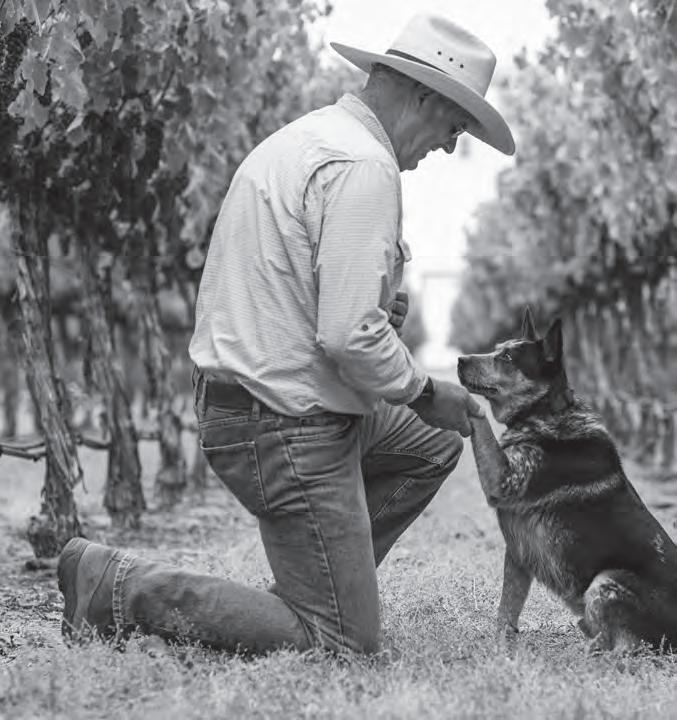
summary compensation table1 (in thousands)
1. Disclosure of the total compensation paid to any designated senior officer or highly compensated employee is available to our shareholders upon request. Compensation amounts do not include earnings on nonqualified deferred compensation, as such earnings are not considered above-market or preferential.
2. The Senior Officers and highly compensated employees included in the table are those officers defined by FCA regulations Section 619.9310 and Section 620.6.
3. Annual incentive compensation represents amounts earned in the reported fiscal year, which are paid in February of the subsequent year. The annual incentive compensation amounts are calculated based on relevant performance factors for the reported fiscal year. The ELTIP amounts are estimated based on the relevant performance factors included in this plan for the current fiscal year. For 2023, the amounts reflect estimated earned ELTIP as part of the 2021 Plan Term (third year), the 2022 Plan Term (second year) and the 2023 Plan Term (first year) to be finalized and paid out following the end of each Plan Term. The 2021 Plan has been paid out as of February 2024. Each Plan Term consists of three full years.
The Salary, Annual Incentive Compensation, and Executive Long-Term Incentive Compensation columns of the Summary Compensation Table include all amounts earned during 2023, 2022, and 2021 regardless of whether a portion of such compensation has been deferred by the CEO or other Senior Officers’ elections pursuant to the Farm Credit Foundations Defined Contribution/401(k) Plan (Defined Contribution Plan) and/or the Farm Credit Foundations Nonqualified Deferred Compensation Plan (NQDC Plan). Individual compensation for any Senior Officer included here in the aggregate is available to shareholders upon written request.
In addition to base salary, substantially all eligible employees and executives could earn additional compensation under the annual incentive plans, which are plans tied to the overall business performance and to the employee’s performance. The annual incentive plans were based on the fiscal year and were designed to motivate employees and executives to exceed annual performance targets established by the Board of Directors. In 2023, performance targets were established using one or more of the following factors: the Association’s Performance Score, the Contractual Interbank Performance Agreement Score (CIPA), portfolio credit quality, new
4. Represents company contributions to a 401(k) retirement savings plan and nonqualified deferred compensation plan, as well as payment for certain other expenses, such as relocation, certain travel-related costs, wellness benefits, and life insurance benefits.
5. Represents amounts paid pursuant to plans in connection with retirement, severance payments, retirement gratuity, sign on, retention, or discretionary cash bonus payments.
6. Byron Enix, President and CEO, retired on January 31, 2021. Two senior officers also retired on January 31, 2021, and are included in the 2021 numbers. Additional senior officers joined the company during 2021.
money (loan growth), profit margin (spread), direct cost to income, teamwork, speed (processing time), net income, and goals related to strategic business initiatives.
The Executive Long-Term Incentive Plan provides targeted long-term awards for Senior Officers if the long-term performance objectives of the Association are met. For each Senior Officer, a long-term incentive award percentage was established and communicated at the beginning of the plan term. The payout of the ELTIP award is three years after the plan commences and is conditioned upon satisfactory performance of the Senior Officer and the Association exceeding certain minimum thresholds related to the CIPA score and income as determined in the plan.
The Deferred/Perquisites Compensation column of the Summary Compensation Table is primarily comprised of company contributions to benefit plans, taxable group term life insurance premiums, and long-term disability premiums. In 2023, the Association’s employer matching contribution to Curt Hudnutt’s account in the Defined Contribution Plan was $20,282 and its contribution to Curt Hudnutt’s account in the NQDC Plan to restore the employer match that was limited due to restrictions in the Internal Revenue Code and compensation deferred
was $135,569. For 2023, the Association’s employer matching and non-elective contributions for the other Senior Officers’ accounts in the Defined Contribution Plan were $287,458 and contributions to their accounts in the NQDC Plan were equal to $2,160,080.
The following table shows certain pension benefit information by plan for the CEO and the Senior Officer group, including highly compensated employees, as of December 31, 2023. Curt Hudnutt, CEO, is not eligible to participate in the Pension Plans.
retirement plan overview: Certain Senior Officers participate in two defined benefit retirement plans: (1) the Ninth Farm Credit District Pension Plan (Ninth Plan) or the Eleventh Farm Credit District Employees’ Retirement Plan (Eleventh Plan), which are qualified defined benefit plans (Pension Plans); and (2) the Former Ninth and Eleventh District Employers Restoration Plan (Restoration Plan), which is a nonqualified retirement plan. Additionally, substantially all employees are eligible to participate in the Farm Credit Foundations Defined Contribution/401(k) Plan (Defined Contribution Plan), which has an employer matching contribution. Certain eligible employees participate in the Farm Credit Foundations Nonqualified Deferred Compensation Plan (NQDC Plan), which allows individuals to defer compensation, and which restores the benefits limited in the Defined Contribution Plan by restrictions in the Internal Revenue Code.
Three
1. The Senior Officers and the highly compensated employees included in the pension benefits disclosure are those defined by FCA regulations Section 619.9310 and Section 620.6.
2. For the Pension Plans and the Restoration Plan, this represents an average for the aggregate senior officer and highly compensated employee group.
3. Represents post-retirement benefit payments made during the last fiscal year.
4. Three of the 12 Senior Officers and Highly Compensated Employees defined by FCA regulations Section 619.9310 and Section 620.6, are participants in the Pension Plans.
qualified pension plans: In general, the Ninth Plan provides participants with a 50% joint-and-survivor annuity benefit at normal retirement that is equal to 1.50% of average monthly compensation during the 60 consecutive months in which an individual receives their highest compensation (High 60) multiplied by their years of benefit service, plus 0.25% of the amount by which the High 60 exceeds covered compensation multiplied by years of benefit service. The benefit is actuarially adjusted if the individual chooses a different form of distribution than a 50% joint-and-survivor annuity, such as a lump sum distribution. The pension valuation was determined using a blended approach assuming half of the benefits would be paid as a lump sum and half as an annuity at the participants earliest unreduced retirement age.
In general, the Eleventh Plan provides participants with a single life annuity benefit at normal retirement that is equal to 1.95% of average monthly compensation during the 60 consecutive months in which an individual receives their highest compensation (High 60) multiplied by years of benefit service. The benefit is actuarially adjusted if the individual chooses a different form of distribution than a single life annuity. The pension valuation was determined using a blended approach assuming 30% of the benefits would be paid as a lump sum and 70% as an annuity at the participants earliest unreduced retirement age.
The Pension Plans pay benefits up to the applicable limits under the Internal Revenue Code. nonqualified pension restoration plan: The Restoration Plan is unfunded and not qualified for tax purposes. Benefits payable under this plan are equal to the excess of the amount that would be payable under the terms of the Pension Plans disregarding the limitations imposed under Internal Revenue Code Sections 401(a)(17) and 415, over the pension actually payable under the Pension Plans. The Restoration Plan also restores any benefits attributable to nonqualified deferred compensation excluded from the benefit determined under the Pension Plans. The Restoration Plan valuation was determined using an assumption that benefits would be paid as a lump sum at the participant’s earliest unreduced retirement age.
nonqualified supplemental executive retirement plan: As of January 1, 2024, the Association implemented a supplemental plan for the CEO and certain Senior Officers for post-retirement health care costs. The plan is unfunded and not qualified for tax purposes. Participants in good standing receive an accrued benefit for each month of executive-level service from January 1, 2024, up to a maximum of 60 months, which will be paid out upon the one-year anniversary of the retirement date, permanent disability, or death.
American AgCredit offers Young, Beginning, and Small (YBS) farmers and ranchers opportunities to invest in, build, and support their agribusinesses. Through specific, tailored programs designed to meet the credit and related needs of YBS customers and potential customers in our chartered territory, we provide various layers of support throughout this market.
Per FCA regulations, qualified YBS programs serve farmers and ranchers by one or more of the following categories:
Young: A farmer, rancher, or producer or harvester of aquatic products who is age 35 or younger
Beginning: A farmer, rancher, or producer or harvester of aquatic products who has 10 years or less farming or ranching experience
Small: A farmer, rancher, or producer or harvester of aquatic products who normally generates less than $250,000 in annual gross sales of agricultural or aquatic products
our ybs mission
Our mission is to provide credit and related services tailored to the specific needs of the YBS market via the following:
• Support of AgYouth Programs: Interest-free financing to young people for 4-H and Future Farmers of America (FFA) projects
• Host training focused on legacy and business continuity planning for generations of farmers and ranchers: Training provided free of charge for customers
• Support of youth programs in the community: Outreach and sponsorship of ag-related educational activities, such as ag training, exhibits, and other outreach
• Promote YBS program information, including web pages, brochures, and ad slicks: Awareness of programs to support new businesses and encourage young people to get involved in agriculture
• Provide scholarships to college students interested in working in or studying courses related to agriculture
• Offer paid internships: Professional training and paid work experience provided to young professionals interested in learning about opportunities in the agricultural industry, including financing, marketing, and communication
To facilitate credit offerings to this specialized customer base, we support financing programs and use government-guaranteed loan programs. We are actively involved in developing and sponsoring educational opportunities, leadership training, business financial training, and insurance services for YBS farmers and ranchers.
demographics
To ensure that these groups are adequately serviced, demographic research known as AgCensus is completed by the U.S. Department of Agriculture every five years, and those demographics are compared to our borrower base. Part of adequately serving these segments is understanding how farming is changing within the Association’s lending territory.
The latest data available is from the 2017 AgCensus (released in April 2019). It shows the number of farms within our chartered territory has declined more than 3.2% from 117,380 to 113,656. At the same time, overall farm size (acreage) has increased, marking a trend toward fewer but larger farms. Nationally, the number of young farmers, both primary and cooperators, increased from 2012. In our territory, young farmers comprise about 8.0% of total farm operators. Beginning farm operators comprise 28.0% of the market in our territory, while small farm operators comprise 85.0% of the farms in the market. A few significant changes over the last five years include the following:
• The number of young farm operators did increase, but at the same time the average operator age increased. Farmers older than 65 now outnumber farmers younger than 35 by a 6:1 ratio.
• The number of beginning farmers increased, but the average age of a beginning farmer in 2017 was just over 46.
• The number of small farms increased from 2012. Many of the small farms reported being involved in commodities such as fruits, vegetables, and small livestock.
exception program
The Association’s YBS Exception Program is tailored for those ag businesses that do not meet all underwriting criteria and exhibit higher-than-normal risk factors. The Exception Program offers unique financing criteria and additional benefits. This includes additional business support, education, training, and other incentives, allowing them to strengthen and prosper and, in the process, to develop avenues for the Association to fulfill its mission and serve all fields and levels of agriculture.
ybs annual quantitative targets
As part of our 2023 Marketing Plan, we projected a conservative goal of increasing our new (or refinanced) loans to YBS farmers and ranchers. We attribute our results to the ongoing national trend of increased age of farmers as well as small farmers moving above the gross annual income definition of $250,000. Additionally, the overall economic conditions have led to the total number of new loans, not just YBS new loans being down from the prior year. The Association continues to streamline its new loan origination platform and continued outreach efforts.
ybs qualitative goals
• Support our customers and other producers through robust mission programs and engagement at the regional and the local level.
• Partner with government agencies, Farm Credit institutions, nonprofits, and private companies that share our mission.
• Showcase the expertise that we have relating to agricultural markets, the broader economy, and specific services available to producers, with the ultimate goal of strengthening their operations.
ybs program funding outreach
Note: Due to regulatory definitions, a farmer may be included in multiple categories as the customer would be included in each category in which the definition was met.
The following table outlines the percentage of loans in the loan portfolio (by number) to young and beginning farmers as of December 31, 2023, compared to the total number of loans in the portfolio.
We believe that all of agriculture benefits by supporting the full spectrum of agricultural efforts. American AgCredit, on its own and through alliance partnership with other Farm Credit associations, sponsors many events and activities to promote Farm Credit and the services offered by the System, and to inform and educate young, beginning, and small farmers. They include a sampling of the following:
Grow Your Future Forum: In March 2023, American AgCredit co-hosted a Grow Your Future Forum, a two-day workshop that offered young, beginning, and small (YBS) farmers tools and opportunities for success through financial education and support. The forum included producers from California to Oklahoma, giving YBS farmers the opportunity to learn, network, and collaborate with others within the Farm Credit System.
Rural Roots Endowment: American AgCredit designed the $10 million Rural Roots Endowment to provide grants and direct funds to New Mexico agricultural organizations that support underserved populations of producers and the next generation of farmers and ranchers – like FFA, 4-H, junior livestock, and scholarships – as well as protect New Mexico agriculture, fight hunger in New Mexico, and continue ag education in New Mexico.
The following table provides a breakdown of small-farmer and rancher loans by size as of December 31, 2023.
California FFA Foundation: American AgCredit partners with CoBank and other Farm Credit Associations in California to support agricultural education by providing rural, urban, and suburban students real-world experiences both inside and outside of the classroom. Events supported in 2023 from a joint contribution of $50,000 included the State Leadership Conference, Sacramento Leadership Experience, Supervised Agricultural Experience (SAE) Awards Program, and integrated leadership development conferences to meet the ever-diversifying student population (more than 48,000 of the 103,000 members are Latino). American AgCredit also donated a vintage 1952 Chevy truck to California FFA in 2022. In 2023, a raffle for the truck raised more than $90,000 to support youth leadership and development programs through the California FFA Foundation. American AgCredit provides leadership to the California FFA Foundation with an American AgCredit employee serving on its board of directors.
Young Farmer Leadership Conference: In support of the California Farm Bureau’s Young Farmers & Ranchers Program (YF&R), American AgCredit joined with CoBank, Ag-West Farm Credit, Fresno Madera Farm Credit, and Colusa-Glenn Farm Credit to sponsor its Annual Leadership Conference. In 2023, the conference was held in person and attended by approximately 120 YF&Rs from across California and neighboring states. Our 2023 sponsorship totaled $10,000.
California Foundation for Ag in the Classroom: American AgCredit partnered with CoBank, Ag-West Farm Credit, Fresno Madera Farm Credit, and Yosemite Farm Credit to sponsor this not-for-profit organization dedicated to educating youth throughout California about the importance of agriculture in their daily lives. Contributions totaled $15,000 in 2023.
Center for Land Based Learning (CLBL): Separately and partnering with CoBank and other Farm Credit associations in California, American AgCredit committed to a multi-year contribution totaling $100,000 to help fund CLBL’s new headquarters building and 30-acre farm site, which serves as the base for the California Farm Academy (CFA) and Apprenticeship Program. Its youth programs (FARMS, SLEWS, CFW) also demonstrate a racial diversity of over 75%. Additional contributions of $15,000 allowed CLBL to return its FARMS (Farming, Agriculture, Resources Management for Sustainability) program to high school students across the state back to in-person field days. Separately, American AgCredit provided an additional $10,000 to support the CFA and Apprenticeship Program to increase beginning farmers’ credit readiness to support business acumen and growth. This program aims to provide a career pathway for aspiring farm managers through on-the-job training and agricultural education. The CFA Apprenticeship is a registered apprenticeship approved by the State of California that provides a journey worker credential at the end of two years in the occupation of a Beginning Farm Manager. The CFA alumni average age is 30. Of total enrolled, 56% have been male and 44% female. Forty-nine percent are BIPOC and 20% are veterans. American AgCredit offers leadership expertise with an employee serving on the Center for Land Based Learning’s board of directors.
The Sonoma County Grape Growers Foundation: The Sonoma County Grape Growers Foundation (FUNDACIÓN
Leadership Academy hosted its second class of vineyard employees in 2023. The academy is a multi-month commitment focusing on professional development for vineyard employees with a goal of being promoted into leadership roles within their organization or as an enhancement to their current leadership skills and responsibilities. The Leadership Academy class concludes every year with a graduation ceremony that honors each student’s achievement. American AgCredit contributed $20,000 to provide each program graduate with a $1,000 stipend.
Starlight Elementary School – Culinary Garden & Teaching Kitchen: American AgCredit’s $25,000 donation in December 2022 supported 2023 efforts to educate youth about sustainable agriculture and the many career opportunities in the agriculture industry. In addition, these dollars went toward supporting the middle and high school Career Technical Education (CTE) program, which provides pathways for job opportunities in the agricultural industry at a young age.
Colorado Farm Bureau (CFB) YF&R Program: This important program gives American AgCredit the opportunity to network with young farmers and ranchers across Colorado. With our support of CFB YF&R, American AgCredit attends and presents an economic update at the annual event. Supporting Colorado Young Farmers and Ranchers is important to our team and the future of agriculture in Colorado.
Colorado FFA Foundation: Through a comprehensive agricultural education program, the Colorado FFA teaches its members premier leadership skills, personal growth, and career success. American AgCredit closely partners with Colorado FFA, giving $15,000 in 2023 to the Colorado FFA Foundation. Additionally, American AgCredit’s donation of a vintage Chevy truck and 2010 Sharp Trailer raised $36,000 for the Colorado FFA Foundation via a raffle fundraiser. Our staff is equally committed to supporting the growth and development of youth in agriculture. American AgCredit also offers leadership to the Colorado FFA Foundation with an employee serving on the Colorado FFA Foundation board of directors. We are proud to have continued our support in 2023 with Colorado FFA.
Nevada Junior Livestock Show: The Nevada Junior Livestock Show (NJLS) provides an opportunity for Nevada youth to exhibit their livestock projects. NJLS encourages the growth of sportsmanship, leadership, citizenship, and responsibility in each of the youth exhibitors competing. In 2023, American AgCredit provided $2,300 in scholarships and awards to NJLS.
Nevada FFA Foundation: The Nevada FFA Foundation promotes agriculture education and career and technical education in the state of Nevada, while providing financial resources for agriculture education programs that support students to develop leadership, personal growth, and career success. In 2023, American AgCredit supported Nevada FFA through a $1,000 student scholarship, as well as sponsorship of the Greenhand Leadership Conference, the Nevada State FFA Convention, Sporting Clay Shoot Stations, an Agricultural Education Student Teacher Scholarship, Nevada Ag Teachers Association awards, and four “Give the Gift of Blue” FFA jackets for students in need. Total support for the Nevada FFA Foundation in 2023 was more than $27,000. American AgCredit also offers leadership to the Nevada FFA Foundation with an American AgCredit employee serving on the Nevada FFA Foundation board of directors.
Veterans to Farmers: Veterans to Farmers exists to provide resources for men and women in uniform after they return home. Beginning farmer-veterans are trained in agricultural food systems, technologies, and business acumen, with the ultimate goal of leading a sustainable and fulfilling lifestyle. American AgCredit partnered with the Colorado-based Veterans to Farmers in 2022 to jumpstart a grant program providing necessary capital and business training for graduating veterans who aspire to start a farming operation. In 2023, through the American AgCredit grant program, Veterans to Farmers was able to give $30,000 in grants to veterans who participated in our Business Planning Class at Denver Botanic Gardens. The veterans worked hard to lay the groundwork for bringing their dreams to life, and with American AgCredit’s support they have the funding they need to get started. This year’s grant recipients are from across the country, from Denver to Maine, all focusing on different types of agriculture. They are working on bettering food access in their communities and taking up the opportunity to serve their country again in a meaningful way.
Leadership Foundation of Hawaii: The Leadership Foundation of Hawaii (LFH) offers several programs to support the next generation in agriculture. Of particular interest is its focus on youth programs like 4-H and FFA, providing training and scholarship opportunities. A portion of American AgCredit’s $10,000 contribution to LFH helped fund virtual career and mentorship programs.
GoFarm Hawaii: American AgCredit and CoBank have pledged $2 million to support GoFarm Hawaii, a University of Hawaii program that provides business technical assistance, educational opportunities, and access to a suite of resources designed to remove barriers to farming and agribusinesses. In addition, it operates five beginning farmer training sites across four islands and an agricultural technician training program at the Waiawa Correctional Facility. In 2022, American AgCredit pledged an additional $1 million over five years to create a matching grant program to support young, beginning, and small farmers in growing their business operations. In 2023, $200,000 of this pledge was funded. American AgCredit is proud to support these valuable programs by providing farmers the tools they need to be successful.
Hawaii FFA Foundation: American AgCredit donated $10,000 to the Hawaii FFA Foundation, and CoBank matched this donation with its Sharing Success program. The total $20,000 donation covered approximately 45 students’ entire travel expenses so that they could attend the National FFA Convention in Indianapolis in 2023. American AgCredit also provided T-shirts for the students to wear on the plane.
Hawaii Annual Scholarship: Each year, American AgCredit donates $2,000 in scholarship(s) to high school seniors in Hawaii who are proceeding to an agricultural field of study in college. This scholarship continued in 2023.
Kansas Farm Bureau YF&R Leaders Conference: American AgCredit, as a part of the Farm Credit Associations of Kansas, sponsors the Kansas Farm Bureau YF&R Leaders Conference. The event was held in February 2023 in Manhattan, Kansas, and provided a pivotal opportunity to network with approximately 500 young farmers and ranchers from across the state. This important partnership gives our alliance the opportunity to give comments and present a keynote speaker at the conference.
Kansas FFA Foundation: Serving over 10,000 members in more than 225 high school agriculture education departments in 216 unified school districts across the state, the Kansas FFA Foundation creates a new generation of agriculturists via student experiences in ag education classes. American AgCredit joins the Farm Credit Associations of Kansas in financial support of $15,000. Separately, American AgCredit made a year-end contribution of $25,000 to the Kansas FFA Foundation, bringing our total support to $40,000. In addition to this, American AgCredit donated a restored 1952 Chevy truck to the organization that was used for a fundraising opportunity. American AgCredit’s donation of a vintage Chevy truck and 2010 Sharp Trailer raised $36,500 for the Kansas FFA Foundation via a raffle fundraiser.
Kansas 4-H Foundation: Serving more than 17,000 members across Kansas, 4-H is focused on youth having fun and learning with their friends to help develop highly effective citizens and leaders within our rural communities. American AgCredit, as a part of the Farm Credit Associations of Kansas, provided financial support amounting to $15,000 in 2023.
Kansas State University College of Ag: In 2023, American AgCredit, three other Farm Credit associations, and CoBank combined to give $1 million to support the Kansas State University College of Agriculture’s innovation centers for grain, food, animal, and agronomy research. This investment will fund new facilities and renovations of current buildings, along with improvements in technology and equipment necessary for interdisciplinary, cutting-edge research. Contributors to this investment are American AgCredit, CoBank, High Plains Farm Credit, Frontier Farm Credit, and Farm Credit of Western Kansas.
Garden City Community College: As a part of Garden City Community College’s Title III Hispanic Serving Institution STEM Grant, a new Crop Production Technology program launched in the fall 2023 semester. American AgCredit gave a two-year commitment of $25,000 each year to support the Buster Gardens’ STEM project focusing efforts on early stages of hiring instructors, purchasing equipment and supplies, and beginning curriculum development. Three new STEM-based programs will be included in this effort, American AgCredit’s support will be focused on the Crop Production Technology program. The purchase of the greenhouse structure will take place during this time. In fall 2022, the Crop Production Technology program was fully implemented with the goal of at least 12 students enrolled in the program. This program will allow year-round, hands-on experiences for students outside of the traditional classroom setting. Students will learn how crops are grown, maintained, and evaluated throughout the growing period – setting a strong foundation for the next generation to enter the agriculture workforce or production agriculture industry.
North American Intercollegiate Dairy Challenge: In partnership with CoBank and AgWest, the Association sponsored this organization, which develops tomorrow’s dairy leaders and enhances progress of the dairy industry by providing education, communication, and networking among students, producers, and agribusiness and university personnel. In 2023, a total of $5,000 was provided.
American AgCredit offers diverse and accessible financing options for qualified farmers and ranchers within our territory. The YBS program provides alternate financing and guarantee options for farmers and ranchers who are just getting started, as well as small or part-time operations. To better serve YBS customers, special lending qualifications and requirements allow young, beginning, and small farmers and ranchers access to financing, leasing, and other services for which they might not otherwise qualify.
Procedures have been established to streamline the delivery of these unique and other small loans utilizing credit scoring through our retail channel delivery system. Loans will continue to be made on a sound basis, with proper emphasis on the fundamentals of sound credit. Loans made under this program meet all our requirements for eligibility and scope of financing, interest rates, and length of term. Co-makers and guarantors (financially responsible family members or other individuals) and secondary collateral are utilized when available and appropriate to minimize risk. Excessively ambitious growth plans are restricted, and loans are closely monitored on a regular basis.
ADMINISTRATIVE OFFICE 400 Aviation Boulevard, Suite 100 • Santa Rosa, CA 95403 • (800) 800-4865 • AgLoan.com
Alturas
403 E. Highway 395 Alturas, CA 96101 (800) 800-4865
Appointment Only
Eureka
5560 S. Broadway Street Eureka, CA 95503 (800) 800-4865
Appointment Only
Merced 711 W. 19th Street
Merced, CA 95340 (800) 800-4865
Napa
1434 1st Streett
Napa , CA 95340 (800) 800-4865
Oakdale
700 N. Yosemite Avenue
Oakdale, CA 95361 (800) 800-4865
Palm Desert 74199 El Paseo Drive
Suite 101
Palm Desert, CA 92260 (800) 800-4865
Petaluma
1345 Redwood Way
Petaluma, CA 94954 (800) 800-4865
Roseville
2140 Professional Drive Suite 110
Roseville, CA 95661 (800) 800-4865
Salinas
924 E. Blanco Road
Salinas, CA 93901 (800) 800-4865
Santa Rosa 400 Aviation Boulevard Suite 100
Santa Rosa, CA 95403 (800) 800-4865
Stockton 2345 E. Earhart Avenue Stockton, CA 95206 (800) 800-4865
Temecula 42429 Winchester Road Temecula, CA 92590 (800) 800-4865
Turlock
3201 W. Monte Vista Avenue Turlock, CA 95380 (800) 800-4865
Ukiah
455 E. Gobbi Street Ukiah, CA 95482 (800) 800-4865
Yreka 809 4th Street Yreka, CA 96097 (800) 800-4865
Denver
6312 S. Fiddlers Green Circle Suite 420E
Greenwood Village, CO 80111 (800) 800-4865
Durango 850 E. 2nd Avenue Durango, CO 81301 (800) 800-4865
Appointment Only
Grand Junction 627 24 1/2 Road Unit I
Grand Junction, CO 81505 (800) 800-4865
Appointment Only
Greeley
4505 W. 29th Street Greeley, CO 80634 (800) 800-4865
Montrose
1404 Hawk Parkway Suite 101 Montrose, CO 81401 (800) 800-4865
Hilo
988 Kinoole Street Hilo, HI 96720 (800) 800-4865
Honolulu
99-860 Iwaena Street Suite A Aiea, HI 96701 (800) 800-4865
Concordia
102 E. 9th Street Concordia, KS 66901 (800) 800-4865
Dodge City 1501 Soule Street Dodge City, KS 67801 (800) 800-4865
Garden City
1606 E. Kansas Avenue Garden City, KS 67846 (800) 800-4865
Great Bend
5634 10th Street Great Bend, KS 67530 (800) 800-4865
Hutchinson
1902 E. 23rd Street Hutchinson, KS 67502 (800) 800-4865
Liberal
2451 N. Kansas Avenue Liberal, KS 67901 (800) 800-4865
Pratt
706 S. Main Street Pratt, KS 67124 (800) 800-4865
Salina
925 W. Magnolia Road Salina, KS 67401 (800) 800-4865
Scott City
1422 S. Main Street
Scott City, KS 67871 (800) 800-4865
Wichita 4105 N. Ridge Road Wichita, KS 67205 (800) 800-4865
Elko
978 Commercial Street Elko, NV 89801 (800) 800-4865
Appointment Only
Fallon
1440 W. Williams Avenue Fallon, NV 89406 (800) 800-4865
Appointment Only
Reno 255 W. Peckham Lane
Suite 1
Reno, NV 89509 (800) 800-4865
Appointment Only
Albuquerque
5651 Balloon Fiesta Pkwy NE Albuquerque, NM 87113 (800) 800-4865
Clovis
301 W. Llano Estacado Clovis, NM 88101 (800) 800-4865
Las Cruces
2800 Las Vegas Court Las Cruces, NM 88007 (800) 800-4865
Roswell
110 W. College Boulevard Suite E Roswell, NM 88201 (800) 800-4865
Tucumcari
323 South 2nd Tucumcari, NM 88401 (800) 800-4865
